inbox and environment news: Issue 608
December 3 - 9, 2023: Issue 608
Council Awards $50,000 In Environmental Grants
- Catholic Parish of Frenchs Forest; Stage Three: Creek Bank Stabilisation and Restoration $1,951
- Christina Kirsch; Online Solar Ambassador Training and Solar Champion Award Program Development $5,000
- Hazel Malloy; Pittwater and Wagstaffe Spotted Gum Forest (PWSGF) Rehabilitation at intersection of Thompson and Fitzpatrick Streets, Scotland Island $5,000
- Jane Bennett; Collaroy Slopes coastal rainforest E2 zone weed reduction $5,000
- Northside Enterprise Incorporated; Bicentennial Walkway Mona Vale Bush Regeneration Project $5,000
- Peninsula Community Gardens Inc; Sustainable Water Usage and Maintenance Project $2,500
- Pittwater Community Gardens Association Incorporated - changed to Avalon Community Garden Association Incorporated; Avalon Community Garden (ACG) Facility refurbishment for a sustainable future $5,000
- Molly Gourley; Surfboard Souls Growth Strategy $3,000 (partial funding)
- Northside Enterprise Incorporated Moore Road Freshwater Dune Bay Restoration project $5,000
- Northside Enterprise Incorporated Greendale Creek/John Fisher Park Bush Regeneration Project $5,000
- Northside Enterprise Incorporated Flora Ritchie/Roberts Reserve Dune Management Project $5,000
- Northside Enterprise Incorporated Alan Newton Reserve Bush Regeneration Project $2,549 (partial funding)
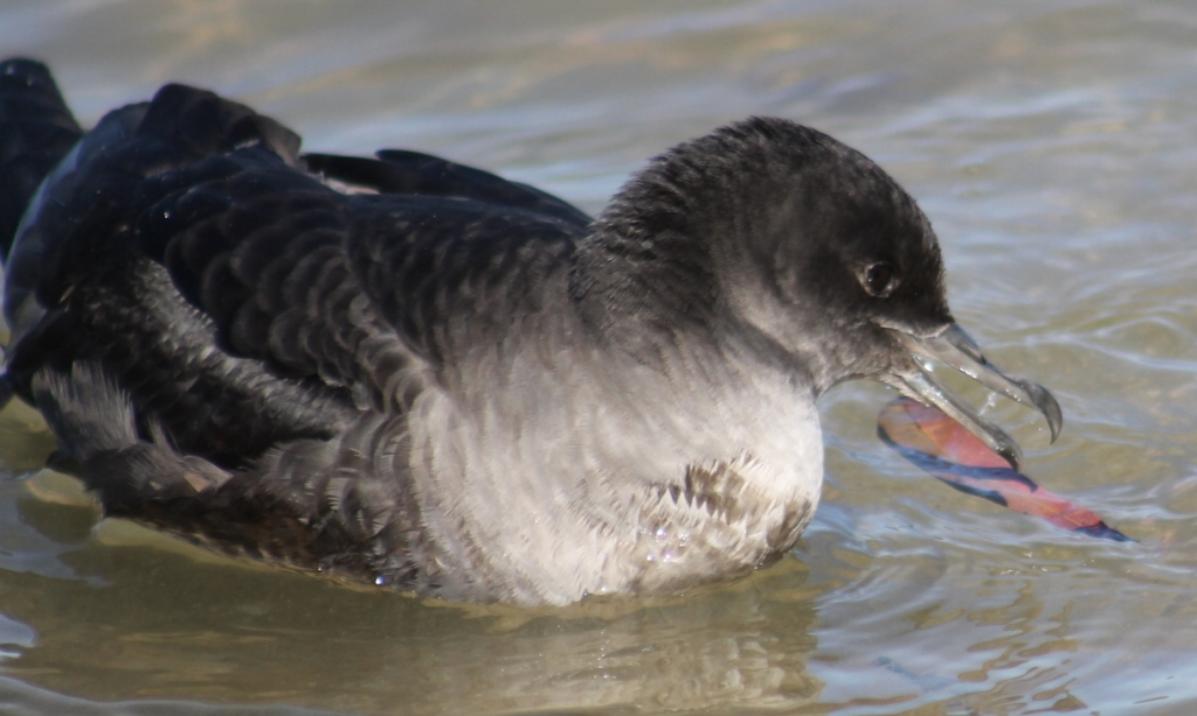
Hazard Reduction Impact On Bees: Call For Participants For Study
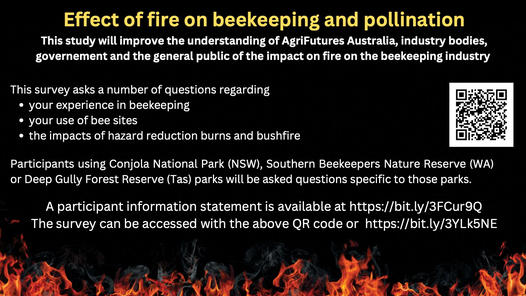
Mountain Bike Incidents On Public Land: Survey
- Mountain Bike Incidents On Public Land: Survey Launched To Gather Data On What's Happening To Public Parks - Community Land - Bush Reserves In Pittwater
- Mother Brushtail Killed On Barrenjoey Road: Baby Cried All Night - Powerful Owl Struck At Same Time At Careel Bay During Owlet Fledgling Season: calls for mitigation measures - The List of 'What You can Do' as requested
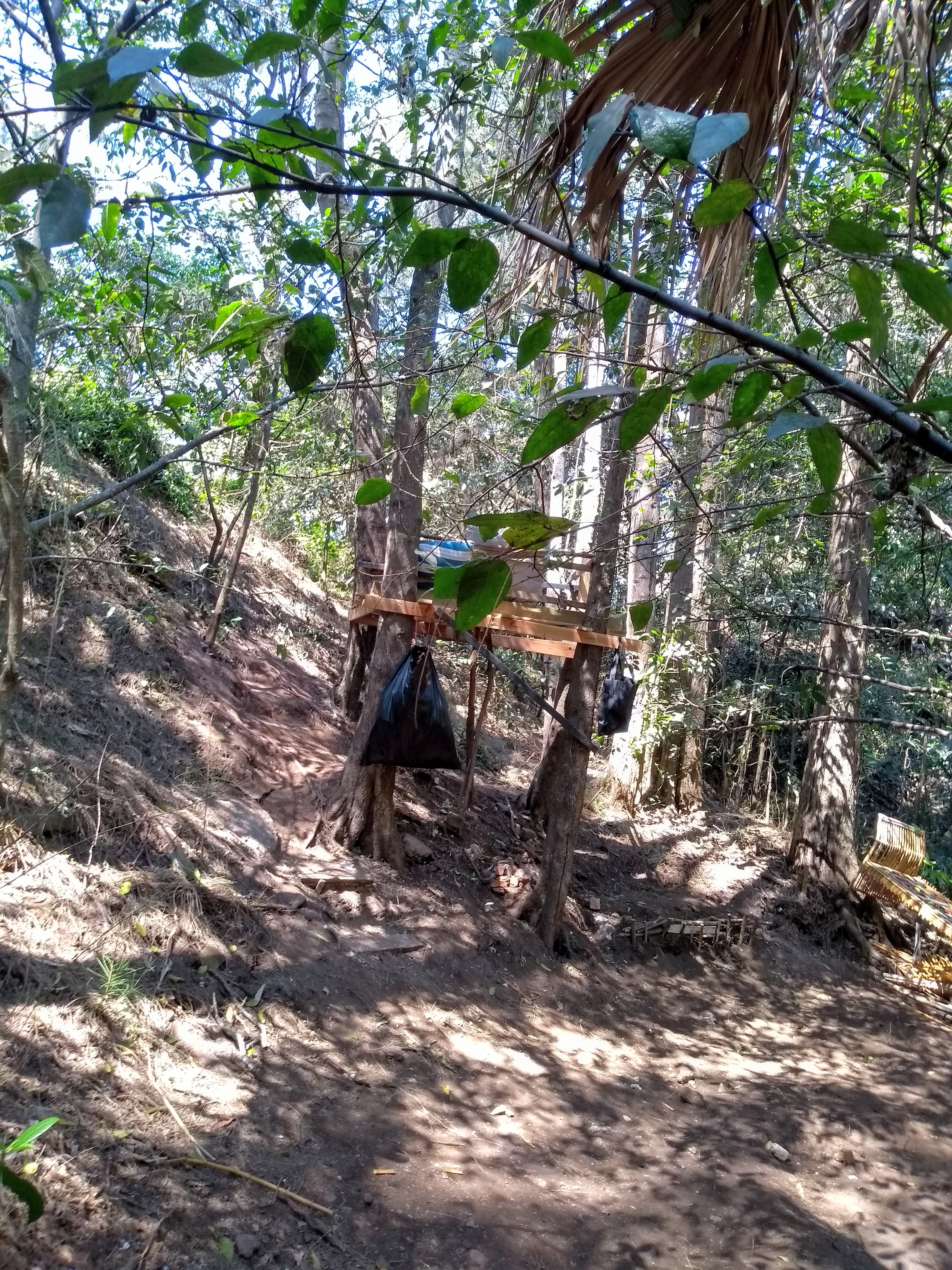
Communities And Industry To Have Their Say As NSW Accelerates Renewable Energy Transition
Next Steps To Beat Plastic Pollution In NSW: Have Your Say
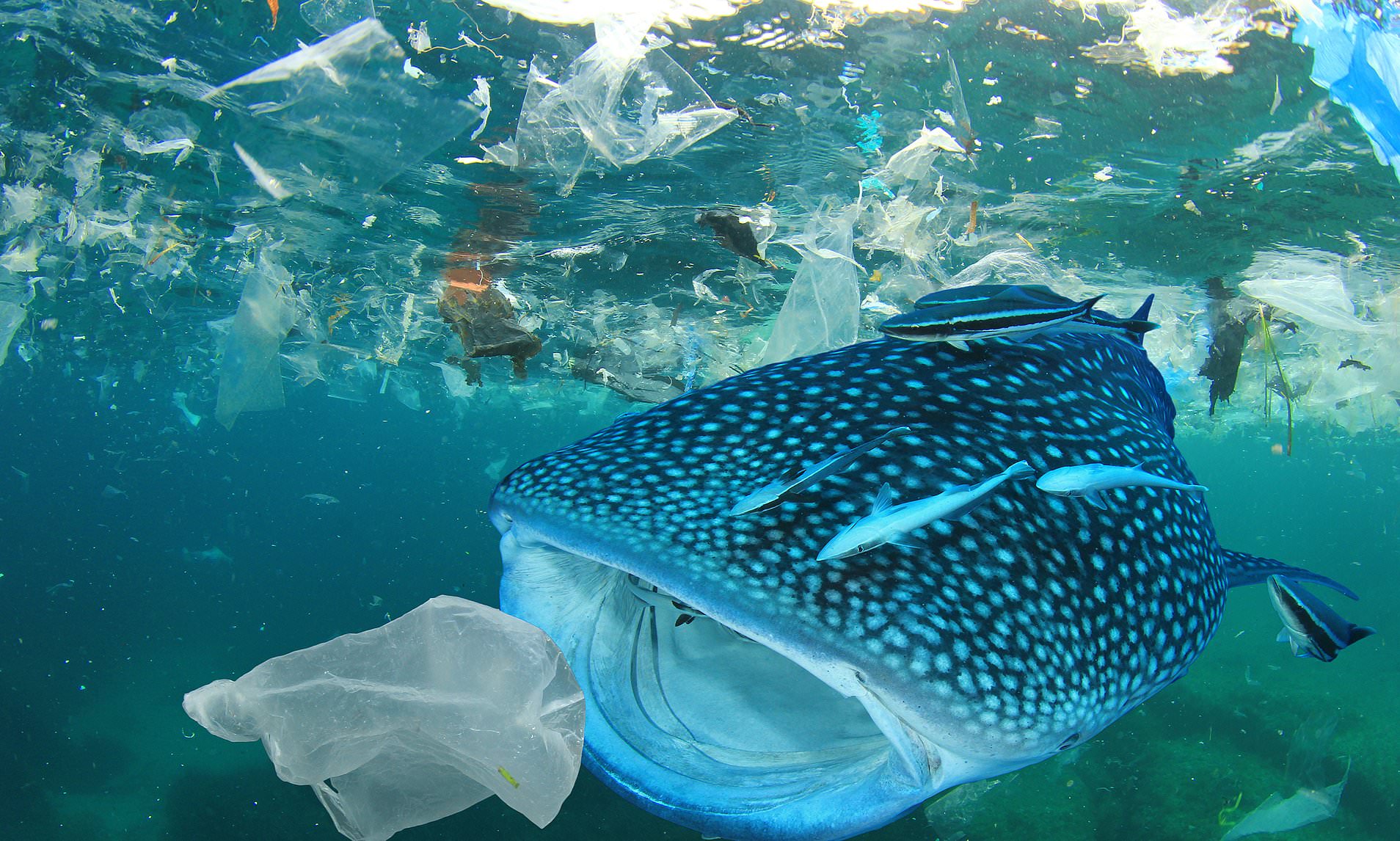
- Are frequently littered or release microplastics into the environment;
- Contain harmful chemical additives; or
- Are regulated or proposed to be in other states and territories.
- Items containing plastic such as lollipop sticks, cigarette butts, bread tags and heavyweight plastic shopping bags are some of the problematic products that could be redesigned or phased out.
Creative Christmas: Avalon Christmas Tree Decoration Program
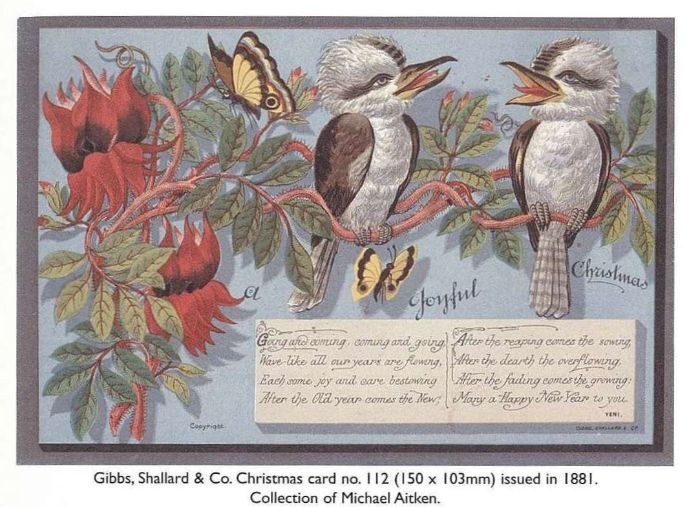
Join The Avalon Christmas Tree Decoration Program
Wakehurst Parkway Update: REF For Proposed Works Available - Feedback Closes December 6
Sydney Local Native: Pittwater Edition Published
- average maximum height and width
- a description of the plant's form
- flower colour and flowering season
- an overview of the plant's best features
- its preferences for soil, water and light
- where it is naturally distributed.
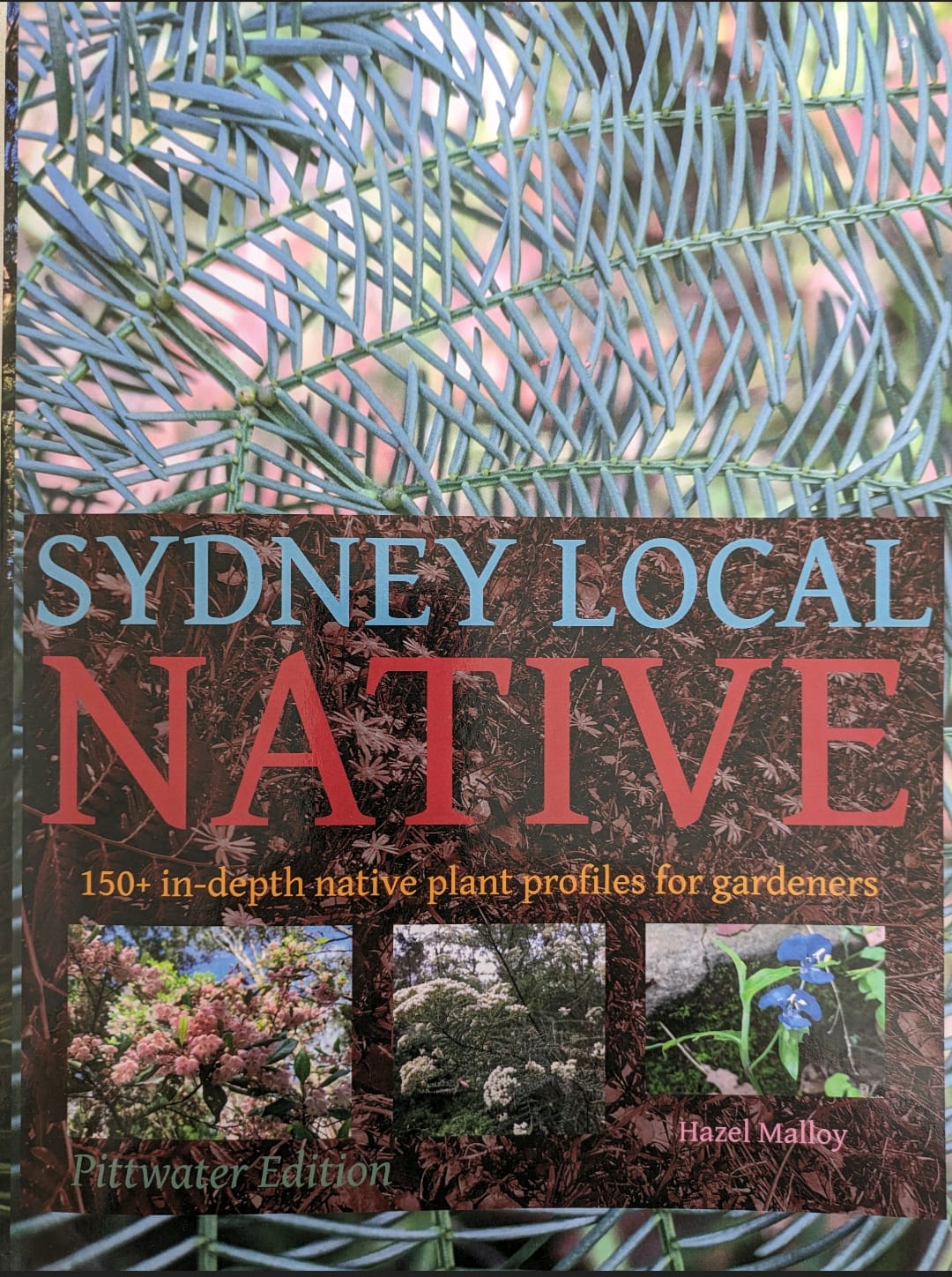
Please Look Out For Wildlife During Heatwave Events

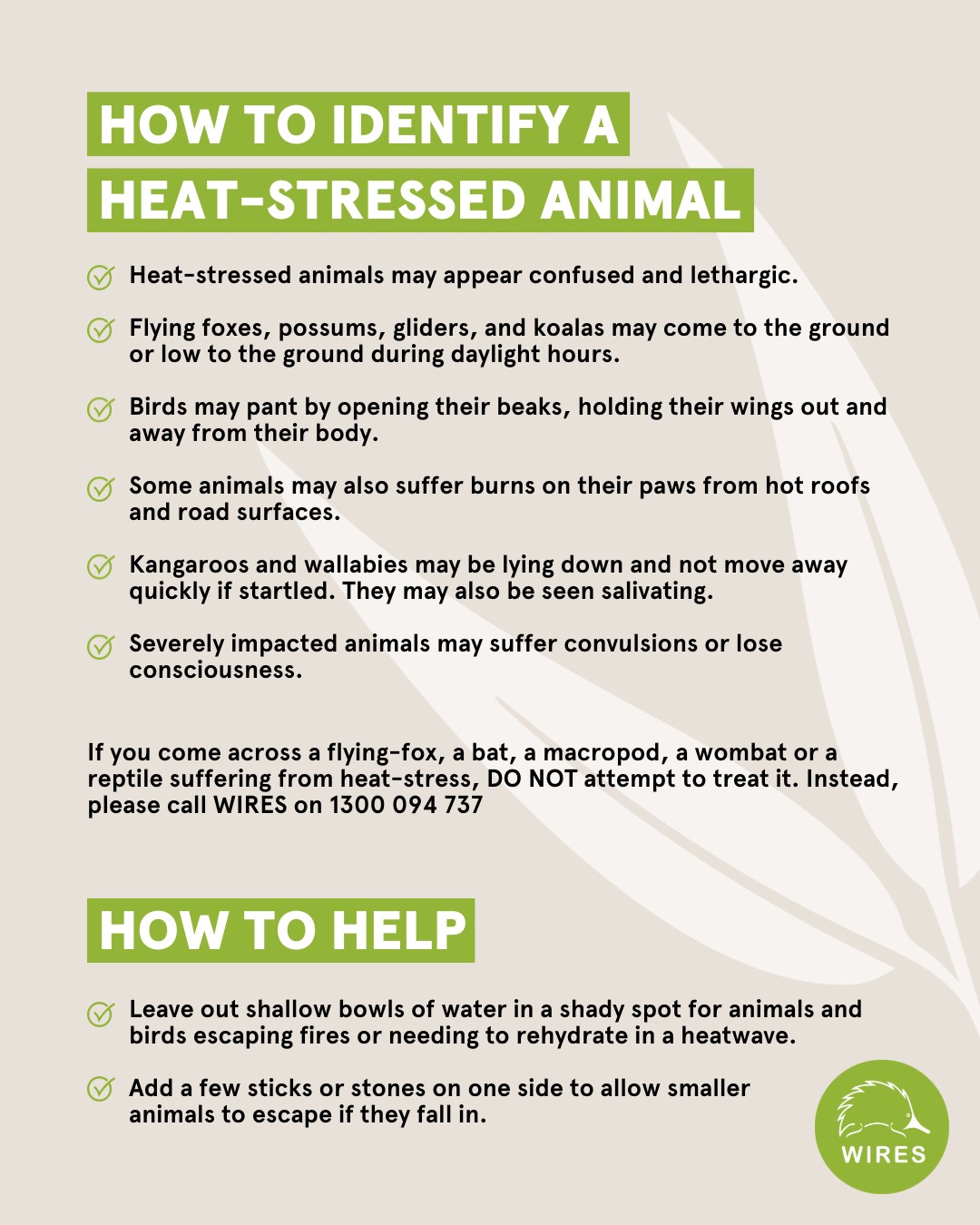
Palmgrove Park Avalon: New Bushcare Group
 Palmgrove Park Avalon is a remnant of the Spotted Gum forest that was once widespread on the lower slopes of the Pittwater peninsula. This bushland’s official name and forest type is Pittwater and Wagstaffe Endangered Ecological Community, endangered because so much has been cleared for suburban development. Canopy trees, smaller trees and shrubs, and ground layer plants make up this community. Though scattered remnant Spotted Gums remain on private land, there is little chance of seedlings surviving in gardens and lawns. More information HERE
Palmgrove Park Avalon is a remnant of the Spotted Gum forest that was once widespread on the lower slopes of the Pittwater peninsula. This bushland’s official name and forest type is Pittwater and Wagstaffe Endangered Ecological Community, endangered because so much has been cleared for suburban development. Canopy trees, smaller trees and shrubs, and ground layer plants make up this community. Though scattered remnant Spotted Gums remain on private land, there is little chance of seedlings surviving in gardens and lawns. More information HERE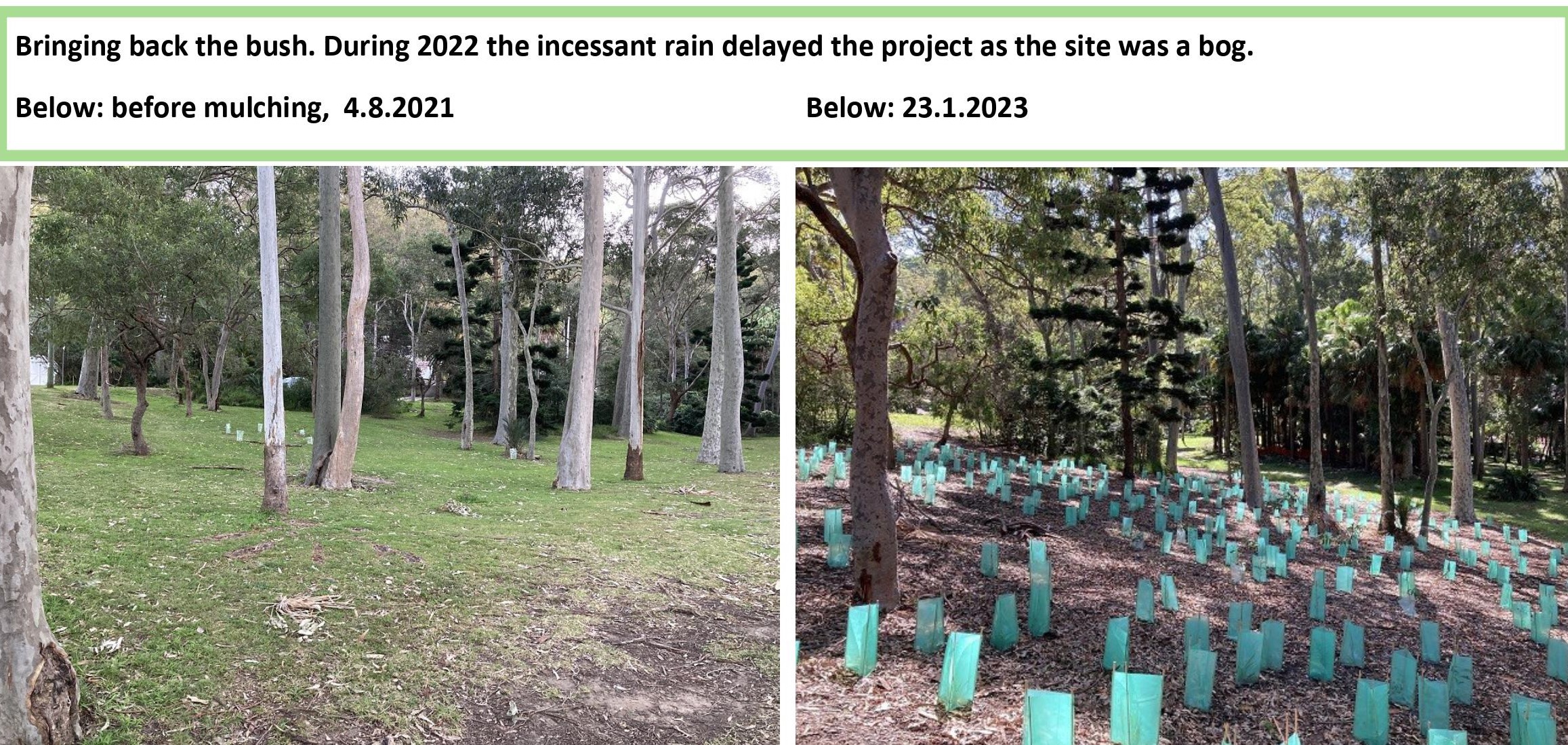
PNHA Guided Nature Walks 2023
Our walks are gentle strolls, enjoying and learning about the bush rather than aiming for destinations. Wear enclosed shoes. We welcome interested children over about 8 years old with carers. All Welcome.
So we know you’re coming please book by emailing: pnhainfo@gmail.com and include your phone number so we can contact you if weather is doubtful.
The whole PNHA 2023 Guided Nature Walks Program is available at: http://pnha.org.au/test-walks-and-talks/
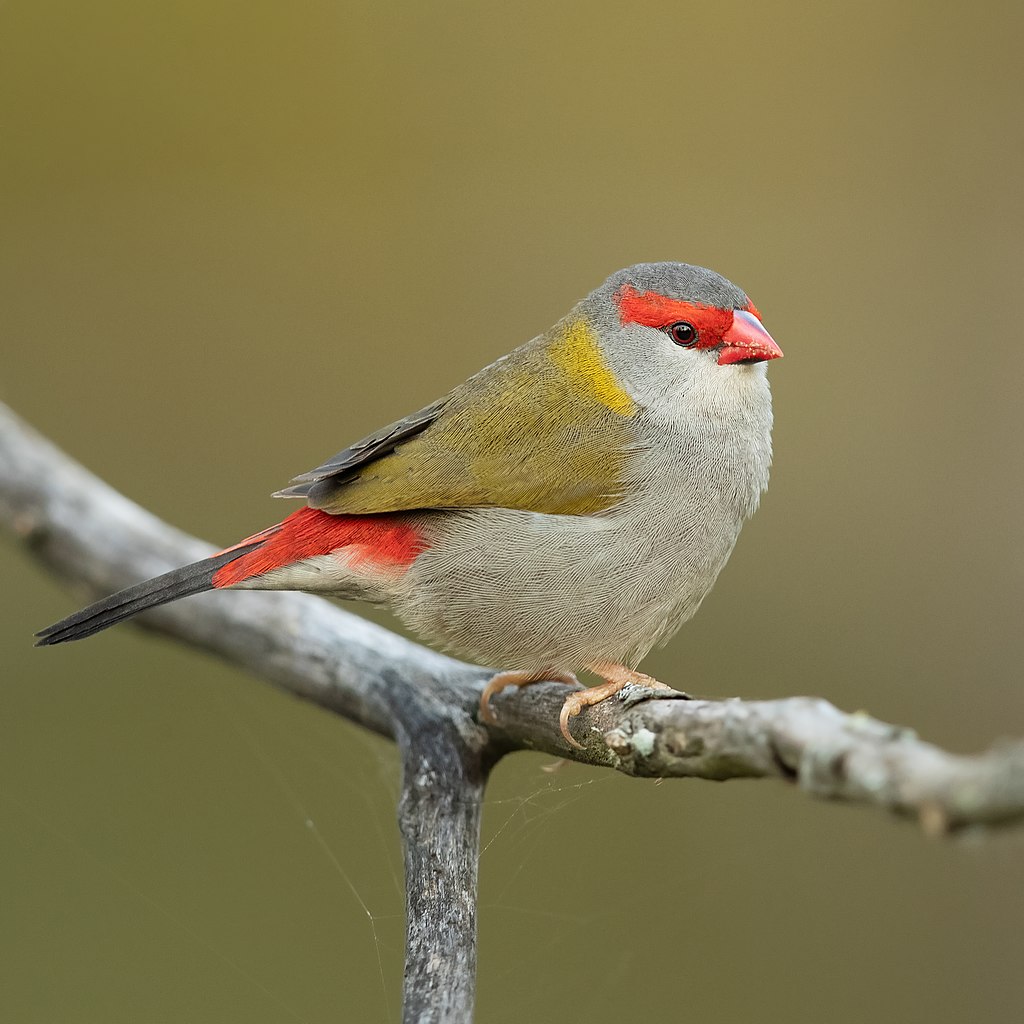
Red-browed finch (Neochmia temporalis). Photo: J J Harrison
Report Fox Sightings
%20(1).jpg?timestamp=1675893929686)
Marine Wildlife Rescue Group On The Central Coast
A new wildlife group was launched on the Central Coast on Saturday, December 10, 2022.
Marine Wildlife Rescue Central Coast (MWRCC) had its official launch at The Entrance Boat Shed at 10am.
The group comprises current and former members of ASTR, ORRCA, Sea Shepherd, Greenpeace, WIRES and Wildlife ARC, as well as vets, academics, and people from all walks of life.
Well known marine wildlife advocate and activist Cathy Gilmore is spearheading the organisation.
“We believe that it is time the Central Coast looked after its own marine wildlife, and not be under the control or directed by groups that aren’t based locally,” Gilmore said.
“We have the local knowledge and are set up to respond and help injured animals more quickly.
“This also means that donations and money fundraised will go directly into helping our local marine creatures, and not get tied up elsewhere in the state.”
The organisation plans to have rehabilitation facilities and rescue kits placed in strategic locations around the region.
MWRCC will also be in touch with Indigenous groups to learn the traditional importance of the local marine environment and its inhabitants.
“We want to work with these groups and share knowledge between us,” Gilmore said.
“This is an opportunity to help save and protect our local marine wildlife, so if you have passion and commitment, then you are more than welcome to join us.”
Marine Wildlife Rescue Central Coast has a Facebook page where you may contact members. Visit: https://www.facebook.com/profile.php?id=100076317431064
- Ph: 0478 439 965
- Email: marinewildlifecc@gmail.com
- Instagram: marinewildliferescuecc
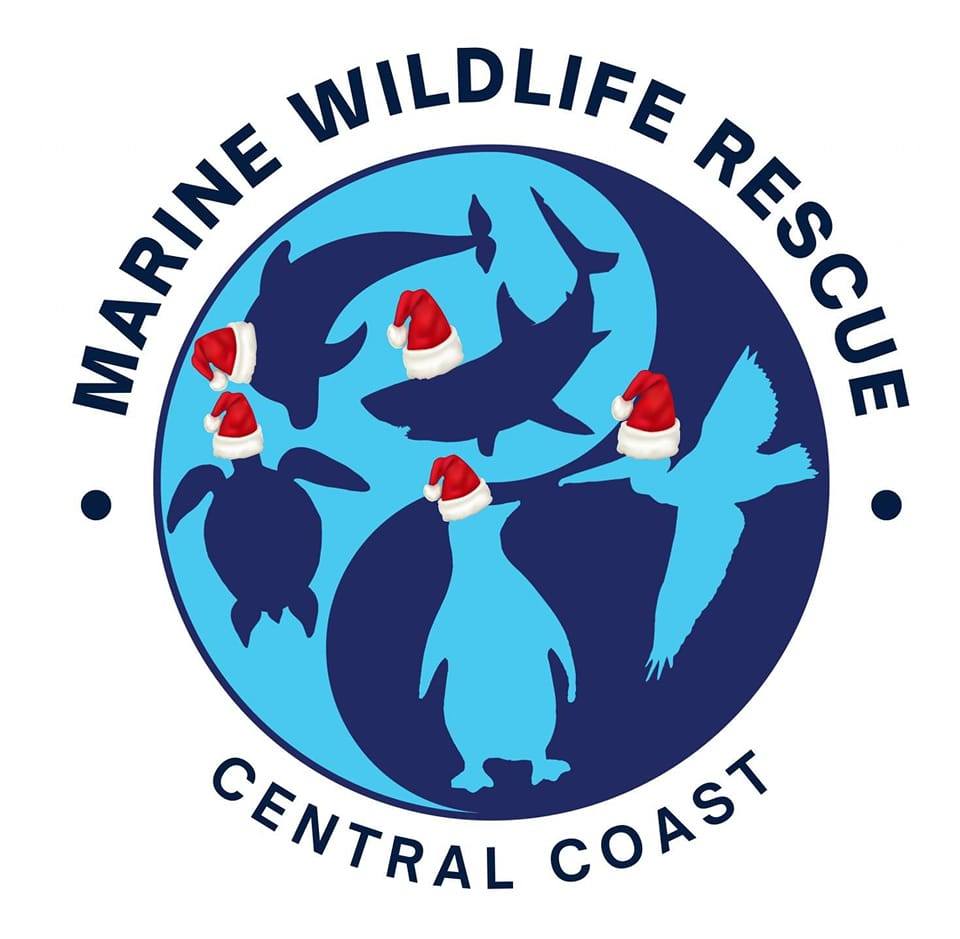
Watch Out - Shorebirds About
.JPG.opt1460x973o0,0s1460x973.jpg?timestamp=1663629195339)
Possums In Your Roof?: Do The Right Thing
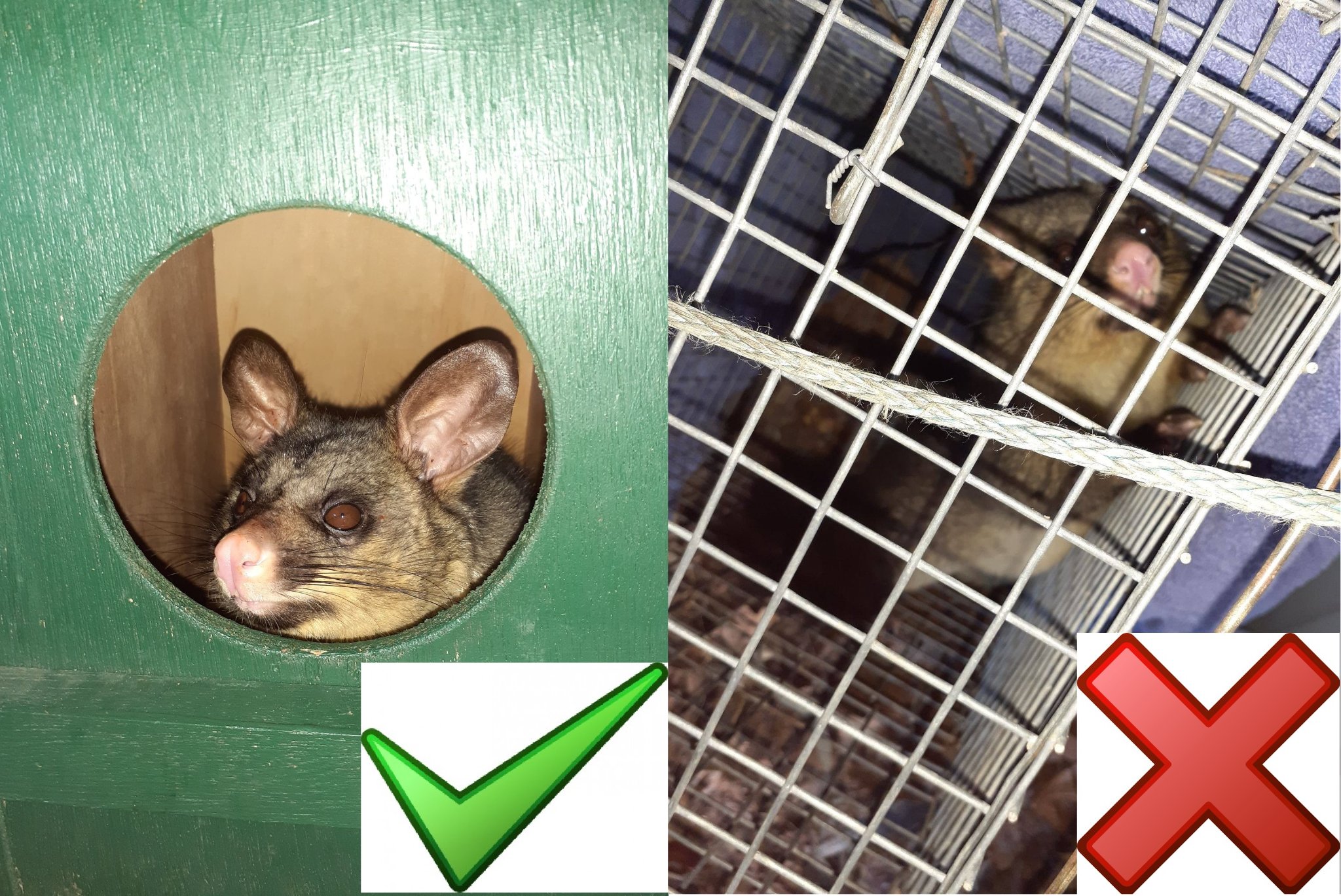
Aviaries + Possum Release Sites Needed

Bushcare In Pittwater
Where we work Which day What time
Avalon
Angophora Reserve 3rd Sunday 8:30 - 11:30am
Avalon Dunes 1st Sunday 8:30 - 11:30am
Avalon Golf Course 2nd Wednesday 3 - 5:30pm
Careel Creek 4th Saturday 8:30 - 11:30am
Toongari Reserve 3rd Saturday 9 - 12noon (8 - 11am in summer)
Bangalley Headland 2nd Sunday 9 to 12noon
Bayview
Winnererremy Bay 4th Sunday 9 to 12noon
Bilgola
North Bilgola Beach 3rd Monday 9 - 12noon
Algona Reserve 1st Saturday 9 - 12noon
Plateau Park 1st Friday 8:30 - 11:30am
Church Point
Browns Bay Reserve 1st Tuesday 9 - 12noon
McCarrs Creek Reserve Contact Bushcare Officer To be confirmed
Clareville
Old Wharf Reserve 3rd Saturday 8 - 11am
Elanora
Kundibah Reserve 4th Sunday 8:30 - 11:30am
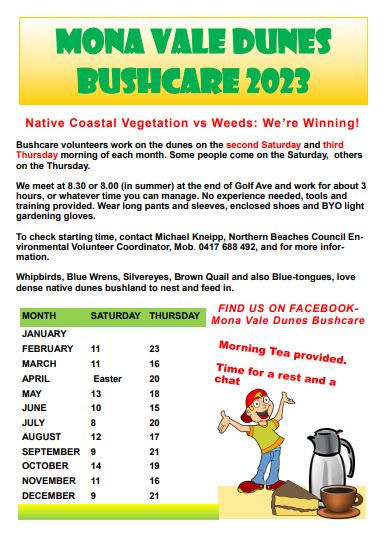 Mona Vale
Mona Vale Mona Vale Beach Basin 1st Saturday 8 - 11am
Mona Vale Dunes 2nd Saturday +3rd Thursday 8:30 - 11:30am
Newport
Bungan Beach 4th Sunday 9 - 12noon
Crescent Reserve 3rd Sunday 9 - 12noon
North Newport Beach 4th Saturday 8:30 - 11:30am
Porter Reserve 2nd Saturday 8 - 11am
North Narrabeen
Irrawong Reserve 2nd Saturday 2 - 5pm
Palm Beach
North Palm Beach Dunes 3rd Saturday 9 - 12noon
Scotland Island
Catherine Park 2nd Sunday 10 - 12:30pm
Elizabeth Park 1st Saturday 9 - 12noon
Pathilda Reserve 3rd Saturday 9 - 12noon
Warriewood
Warriewood Wetlands 1st Sunday 8:30 - 11:30am
Whale Beach
Norma Park 1st Friday 9 - 12noon
Western Foreshores
Coopers Point, Elvina Bay 2nd Sunday 10 - 1pm
Rocky Point, Elvina Bay 1st Monday 9 - 12noon
Friends Of Narrabeen Lagoon Catchment Activities

Gardens And Environment Groups And Organisations In Pittwater
Sensitive Ecosystems At Risk From Mine Waste
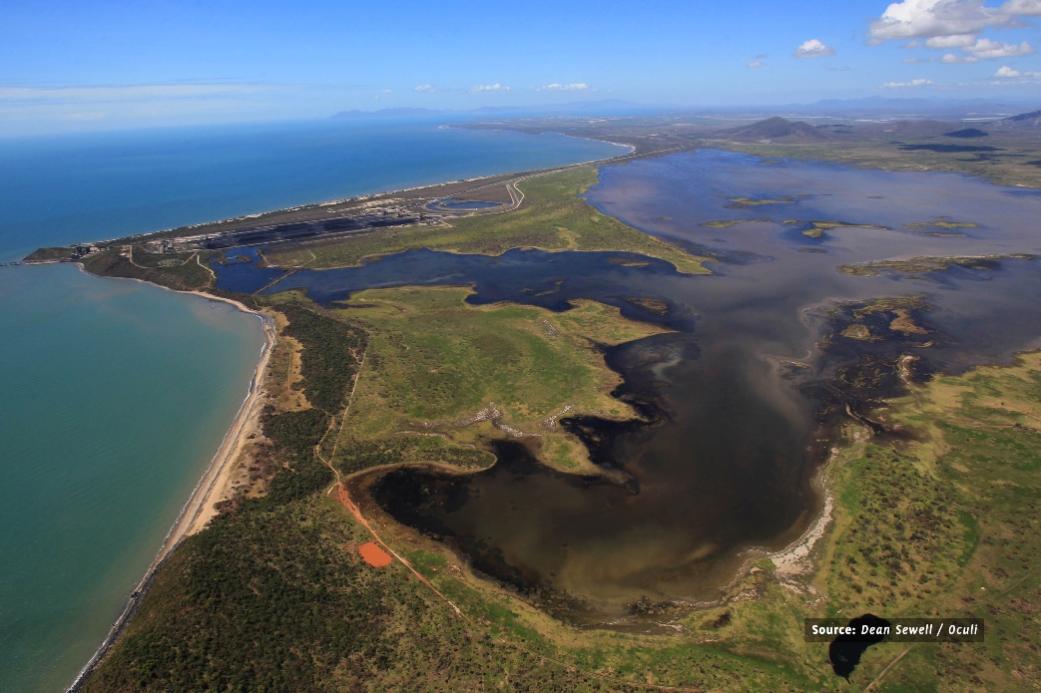
Australian Diners Will Soon Know If They’re Eating Aussie Seafood
The government’s Murray-Darling bill is a step forward, but still not enough
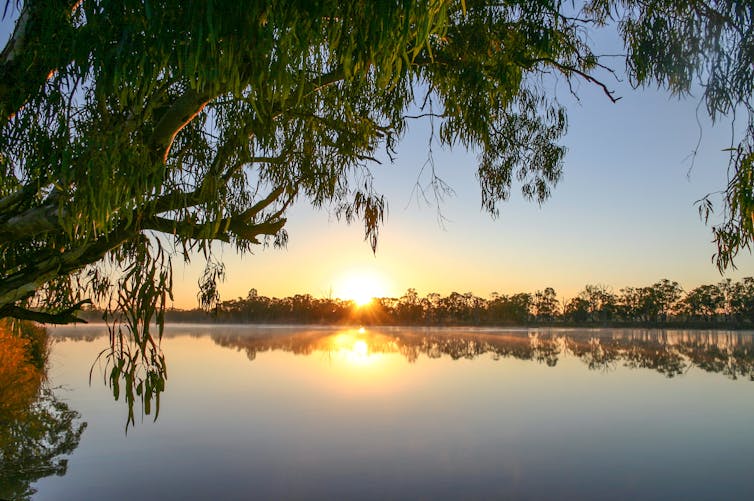
This week, the Senate is debating changes to Australia’s most important water laws. These changes seek to rescue the ailing A$13 billion Murray-Darling Basin Plan to improve the health of our nation’s largest river system.
The Water Amendment (Restoring Our Rivers) Bill 2023 is a crucial step forward. It proposes to lift the Coalition-era cap on water buybacks, allowing the federal government to recover more water for the environment through the voluntary purchase of water entitlements from irrigators.
It also proposes to extend the deadlines for the many beleaguered water-offsetting projects put forward by state governments.
Through the Wentworth Group of Concerned Scientists – an independent group working to secure the long-term health of Australia’s land, water and biodiversity – we strive to restore river health for the basin’s communities, industries and ecosystems. Here we ask whether the bill can fulfil the Albanese government’s 2022 election promise to deliver the plan.
Securing Support Of The Greens And Crossbenchers
The bill is central to Prime Minister Anthony Albanese’s five-point election promise to deliver the plan, and Federal Water Minister Tanya Plibersek’s subsequent commitment to implement the Murray-Darling Basin Plan in full.
With the Coalition voting against the bill in the lower house, the federal government secured the support of the Greens with measures that considerably strengthen the bill.
It is now up to key crossbench Senators to secure passage through parliament. But they have said the bill doesn’t go far enough, citing serious concerns it excludes First Nations water rights and interests and ignores climate change.
The federal government must pass the bill in the next two sitting weeks to avoid triggering a statutory deadline, after which unfinished water offset projects would be cancelled and water recovery would be required instead.
Water Act And Basin Plan: Where Are We At?
Born of the crisis of the Millennium drought, the Water Act 2007 was announced by the Howard government to “once and for all” address over-allocation of water in the Murray-Darling Basin.
Five years later, the Basin Plan 2012 was established to recover 3,200 billion litres of water for the environment from other uses, or to implement projects that deliver “equivalent” outcomes. That includes securing 450 billion litres for the health of the River Murray, Coorong and Lower Lakes.
But this volume of water fell substantially short of the Murray-Darling Basin Authority’s best estimate of what was needed to “ensure the return to environmentally sustainable levels of extraction”, and did not take climate change into account.
All water recovery targets were expected to be met by June 2024. But while some progress has been made, water recovery has almost stalled in the past decade.
Only 26 billion litres have been recovered of the crucial 450 billion litres.
Of the 36 water offset projects meant to be operational by 2024, 16 are not likely to be complete, contributing to a likely shortfall of between 190 billion and 315 billion litres.
No onground work has commenced to alleviate flow “constraints”, leaving thousands of hectares of floodplain forests in the River Murray disconnected from their channels and at risk of drying out and dying.
The Water Act and the plan do not provide for First Nations people’s water rights and interests. And they fail to deal with climate change.
Reforms to both the legislation and the plan are desperately needed to address these major shortcomings.
Voluntary Buybacks Are Necessary
The new bill represents a clear step towards the first of the Albanese government’s five-point promises to “deliver on water commitments” by removing the cap on buybacks.
Without buybacks, it is unlikely the federal government will be able to deliver the 3,200 billion-litre plan in full.
While the Senate Committee acknowledged the impacts of buybacks on communities, the committee found some concerns were “overinflated and not supported by the high-quality evidence base”, referring to a literature review.
The Wentworth Group has long argued for funding to establish a regional transition fund to support impacted communities through these reforms. As part of these reforms, “significant transitional assistance” was announced by Plibersek.
Statutory Guarantees Are Needed
The bill requires additional measures to guarantee the unfinished business to which parliament agreed more than a decade ago:
a legally binding 450 billion litre water recovery target. The public needs a legal recourse if governments fail to deliver the full volume. We understand the intent of today’s announcement is to make the target a statutory requirement, in line with other water recovery targets under the plan.
improved integrity of the water offset method and withdrawal of unviable water offset projects The agreement reached today allows the Commonwealth to remove non-viable projects. Significant flaws in the method used to calculate water offsets still need to be addressed.
milestones in the bill’s proposed “constraints roadmap” which specify targets linked to incentive payments.
transparency and accountability measures to restore public confidence in water reform, such as whole-of-basin hydrological modelling, water accounting and auditing, and validation of annual permitted take models.
Several of these measures were announced today. We’re yet to see details but the high-level agreement is encouraging.
Urgent Reforms Can’t Wait To 2027
Australia’s water laws have failed to address the rights and interests of Indigenous people. Indigenous peoples own a mere 0.2% of surface water entitlements in the Murray-Darling Basin.
In 2022, the Albanese government committed to “increasing First Nations ownership of water entitlements and participation in decision making”.
The Senate Committee found “overwhelming support […] that significantly more needs to be done to incorporate the values and interests of First Nations people in Basin Plan management”.
Many solutions can be readily incorporated into the bill. It should be amended so the legislation is consistent with the United Nations Declaration on the Rights of Indigenous Peoples, and recommendations of Indigenous organisations, such as the Murray-Lower Darling Rivers Indigenous Nations.
The $100 million announced today for the Aboriginal Water Entitlement Program is welcome, although much was already committed and the remainder won’t make up for the lost value given entitlement prices, according to analysis commissioned by the Murray-Lower Darling Rivers Indigenous Nations.
The bill also needs to provide greater clarity for basin communities on how climate change will be incorporated into the Basin Plan review, and strategies for adapting to climate change. This cannot wait until 2027 – communities need to prepare now for their future.![]()
Celine Steinfeld, Director, Wentworth Group of Concerned Scientists & Adjunct Lecturer, UNSW Sydney and Michael Vanderzee, , Australian National University
This article is republished from The Conversation under a Creative Commons license. Read the original article.
We’ve committed to protect 30% of Australia’s land by 2030. Here’s how we could actually do it
James Fitzsimons, Deakin UniversityIn the mid 1990s, only 7% of Australia’s land was protected for conservation. Now, it’s more than tripled to 22%.
But to reach our ambitious goal of boosting protection to 30% by 2030, we’ll have to sharpen our focus and boost funding.
In December last year, Australia joined 195 other nations in signing on to the Global Biodiversity Framework to tackle the world’s worsening biodiversity crisis. Each nation agreed, in brief, to set a goal of “30x30” – protecting at least 30% of land, freshwater and ocean ecosystems by 2030.
Our territorial waters already have 45% under varying forms of protection. But land can be harder. The question now is – how do we get to 30%, which includes land and freshwater ecosystems? In a new report, we show how we can do it.
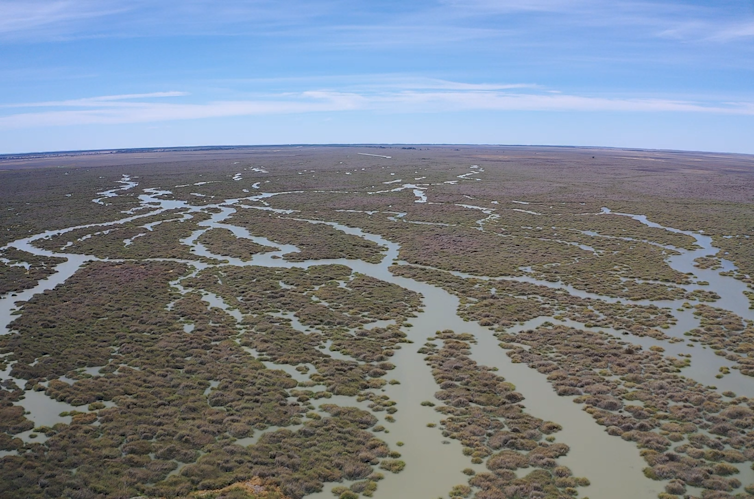
Four Steps To 30%
1. Establish a new dedicated land fund
Buying land to protect it works, and works well. Between 1996 and 2013, the government’s National Reserve System Program channelled funds to state governments and land trusts to buy tracts of land to protect some of our most endangered and least protected ecosystems, such as native grasslands and wetlands.
Under fund-matching provisions, the program led to new state government and philanthropic money invested in conservation. If we fund a new A$5 billion program, we can begin making conservation gains again.
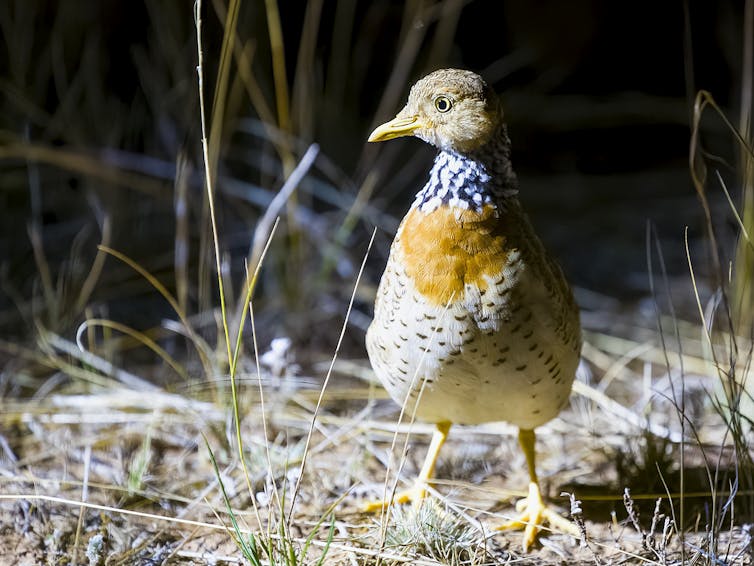
2. Support creation of new Indigenous Protected Areas
Since the 1990s, two-thirds of the growth in Australia’s protected lands has come from expansion of Indigenous Protected Areas. Combined, these 84 areas now cover over 87 million hectares and account for fully half of all of our conservation estate on land across iconic places such as the Kimberley, Arnhem Land, Cape York and the vast deserts of central Australia.
Traditional Owners are managing species such as bilbies, rock-wallabies and Gouldian finches to protect biodiversity. We will need more of these areas to hit our goal. One problem is funding has been largely short-term and insecure – we’ll need long-term funding for existing areas as well as new ones.
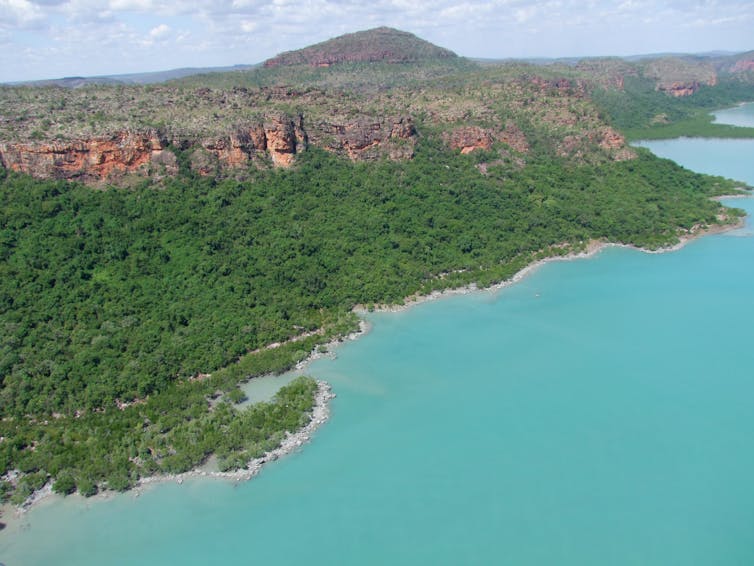
3. More conservation on private land
For decades, environmentally focused private landholders have placed conservation covenants over their land. When the land is sold, the covenant goes with it, obliging the new owner to keep conserving nature.
To get to 30% protection, we will have to encourage more permanent covenants. That’s because many of our under-protected bioregions and ecosystems overlap with where we live – think coastal scrub or native grassland.
To galvanise this sector, we’ll need direct federal support for conservation covenant programs run by the states and territories.
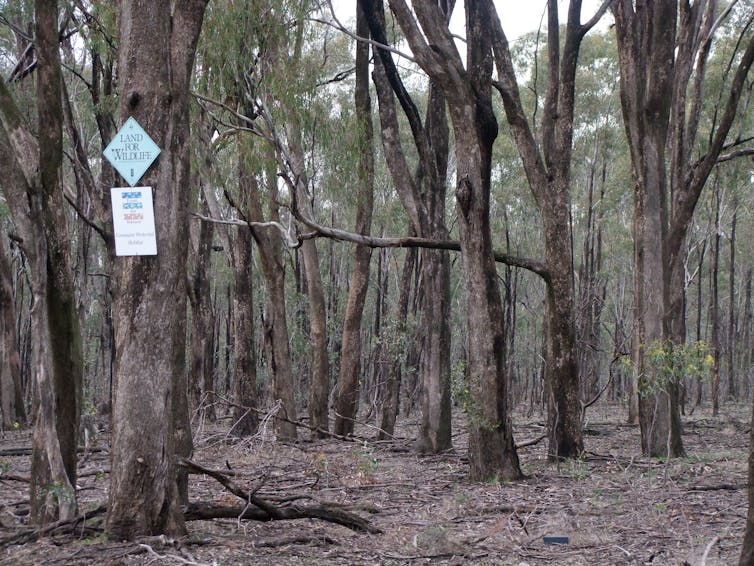
4. Scour public land for opportunities
In the 1990s and 2000s, Australia’s Regional Forest Agreements were dogged by controversy. But in retrospect, these logging-conservation deals led to significant gains in converting public forests into national parks.
As Victoria and Western Australia announce an end to native forest logging, we should explore the areas previously set aside for logging with an eye to protection based on ecosystem, carbon and water values. First Nations communities have rightly asked to be involved in what happens next.
Conservation Isn’t Just About Hitting A Target
Why do we need all four methods? To avoid temptation. When we set targets such as “30% of land”, it can be easy to look for the easy route. In Australia’s case, that might be by mainly conserving large new tracts of desert – many of which are already well represented in our protected estate.
Instead, we should look at what the 30% goal is for – to stave off the extinction crisis and stop the biodiversity freefall. To do that means protecting adequate samples of all of Australia’s unique species and ecosystems.
Australia is already internationally seen as an example of how to expand a nation’s protected areas. For the past 30 years, the expansion of the estate has largely been done well, increasingly focused on comprehensive, adequate and representative protection. New protected areas tend to cover landscapes and ecosystems with little or no protection.
While our national parks are known and valued by most Australians, agreements with Indigenous and private landholders are less known but increasingly vital.
Australia’s network of privately protected areas is already one of the largest in the world. Our network includes conservation covenants held by individual landholders, as well as land owned by conservation land trusts. These matter a great deal, because many threatened ecosystems and habitat for threatened species occur largely on private land. Protecting private land will have an increasingly important role.
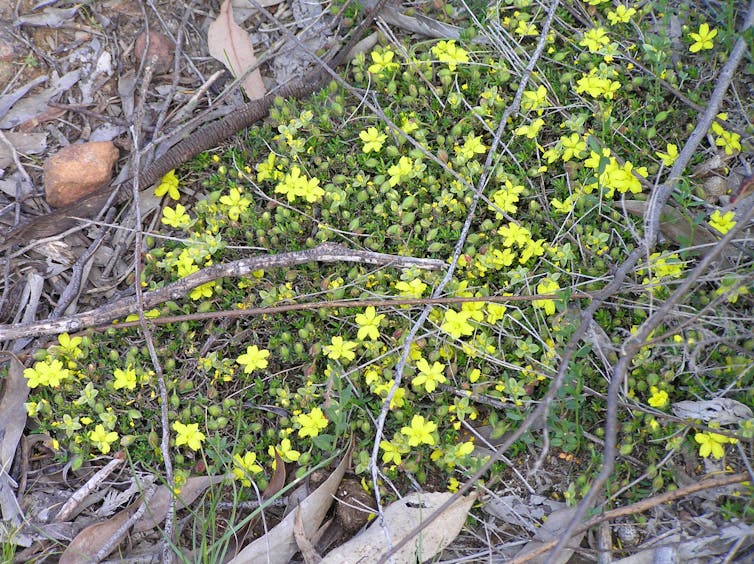
Progress Is Welcome, But There’s More To Do
Despite these successes, the growth of Australia’s conservation estate has slowed since federal funding for land purchases ended in 2013. Science tells us we urgently need more safe spaces for nature to protect wildlife, people and the planet.
Importantly, new protected areas have to come with funds for management. Drawing a line on a map isn’t job done. Our ecosystems are under great pressure from climate change, feral species and human use. If we don’t fund ongoing management, hard won gains for threatened species can quickly be lost.
The government’s proposed Nature Repair Market might help, but secure ongoing government funding will still be critical.
Australia has the toolkit to get to 30x30. Now we need substantial investment and interest to sharpen our tools. ![]()
James Fitzsimons, Adjunct Professor in Environmental Sciences, Deakin University
This article is republished from The Conversation under a Creative Commons license. Read the original article.
As disasters and heat intensify, can the world meet the urgency of the moment at the COP28 climate talks?

Eight years ago, the world agreed to an ambitious target in the Paris Agreement: hold warming to 1.5°C to limit further dangerous levels of climate change.
Since then, greenhouse gas emissions have kept increasing – and climate disasters have become front page news, from mega-bushfires to unprecedented floods.
In 2023, the world is at 1.2°C of warming over pre-industrial levels. Heatwaves of increasing intensity and duration are arriving around the world. We now have less than 10 years before we reach 1.5°C of warming.
This week, the COP28 climate talks will begin against a backdrop of evermore strident warnings from climate scientists and world leaders. United Nations chief António Guterres has warned climate action is “dwarfed by the scale of the challenge” and that we have “opened the gates of hell”. In his latest climate letter, Pope Francis quotes bishops from Africa who dub the climate crisis a “tragic and striking example of structural sin”.
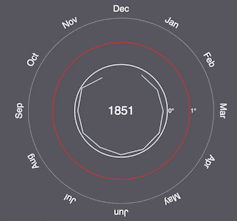
In the United Arab Emirates, the 198 nations in the UN’s climate framework will gather for COP28. Can we expect to see real progress – or half-measures?
Watch for these three key issues facing negotiators.
1. Taking Stock Of Progress On Climate Action
This year, a critical issue will be the global stocktake, the key mechanism designed to ratchet up climate ambition under the 2015 Paris Agreement. This is the first time each nation’s emission cut targets and benefits from climate adaptation or economic diversification plans have been assessed.
The stocktake reveals what track we are on. Do the combined emission cut promises from all countries mean we can limit warming to 1.5°C? If not, what is the “emissions gap” – and how much more ambitious do nation’s emission reductions need to be?
There’s been progress, but not nearly enough. If all national emissions pledges became a reality, global warming would peak between 2.1-2.8°C.
That leaves an emissions gap of around 22.9 gigatonnes of carbon dioxide equivalent over the period to 2030.
It is very good that the worst-case scenarios – unchecked warming and 4+ degrees of global heating by 2100 are now looking unlikely. But a 2°C world would bring unacceptable harm and irreversible damage.
We’ll need much more ambitious targets and support to cut global greenhouse gas emissions 43% by 2030 and 60% by 2035 compared with 2019 levels if we are to reach net zero CO₂ emissions by 2050 globally. A major measure of COP28’s success will be whether the major emitting nations agree on more ambitious emission reduction actions.
2. Who Pays For Climate Loss And Damage?
For decades, nations have wrestled over the fraught question of who should pay for loss and damage resulting from climate change.
Now we’re close to finalising arrangements for the new Loss and Damage Fund. This will be the second major issue for negotiators at COP28.
So far, governments have drawn up a blueprint for the new fund. Expect to see debate over who will manage the fund – the World Bank? A UN agency? – and whether emerging economies such as China will provide funds. To date, there’s no target for how much money the fund will hold and disburse. The blueprint must be formally adopted at COP28 before it can begin operating.
Why a new fund? Other climate finance commitments are aimed at cutting emissions or helping societies adapt to climate impacts. This fund deals specifically with the loss and damage from the unavoidable impacts of climate change, like rising sea levels, prolonged heatwaves, desertification, the acidification of the sea, extreme weather and crop failures.
Think of the damage from the unprecedented floods in Pakistan or Libya, for instance.
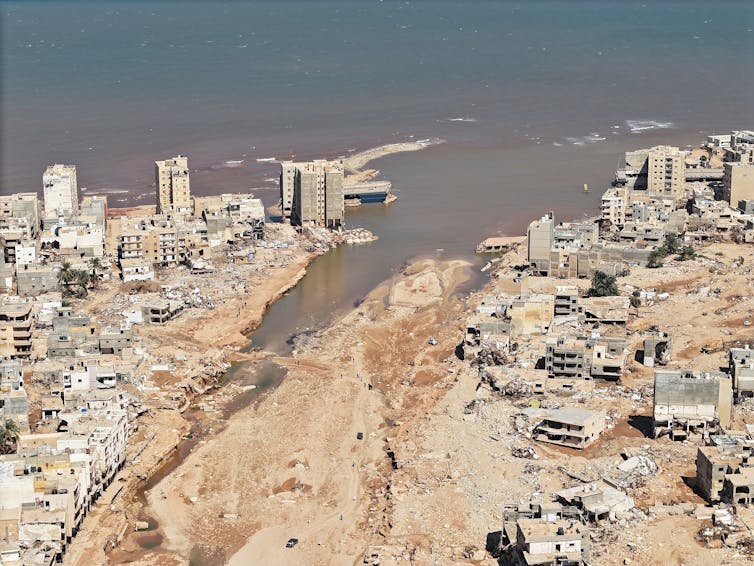
3. Where’s The Climate Finance?
A major issue in climate negotiations is how countries can transform their economies so they are “climate ready”, with lower emissions and boosted resilience. For developing countries, this requires massive levels of investment and new technologies to let them “leapfrog” fossil fuel dependency.
This is likely to be a critical sticking point. To date, climate finance has flowed too slowly. Under the Paris Agreement, rich countries promised to provide funds of A$150 billion a year every year. This has been slow in coming, though it is nudging closer, with $130 billion flowing in 2021.
Unless we see significant progress on climate finance – including making the Loss and Damage Fund a reality and meeting the existing commitments – we’re unlikely to see progress on other key issues such as ratcheting up emission cuts under the stocktake mechanism, phasing out fossil fuels and work on preserving biodiversity.
How Do You Build A 198-Government Consensus?
One reason climate negotiations advance slowly is the need for consensus.
All 198 governments must agree on each decision. This means any one nation or group of countries can block a proposal or force the wording to be changed in order for it to be approved.
The votes of less wealthy countries – including small island nations and least developed countries – therefore carry as much weight as the G20 nations, who account for about 85% of global GDP. This has in the past worked to increase the level of climate action, including the focus on 1.5°C as the global warming target.
The COP28 President is Sultan Ahmed al-Jaber, who has attracted controversy due to the fact he heads the Abu Dhabi National Oil Company. Expect to see considerable debate over wording. Will governments agree to the “phasing down of fossil fuels” or just the “phasing down of unabated fossil fuels”?
It might sound like quibbling but it’s not – the second option, for instance, implies the heavy use of yet-to-be-proven carbon capture and storage technologies and offsets.
Sultan al-Jaber has, to his credit, promoted some progressive agenda items including a focus on the conservation, restoration, and sustainable management of nature to help achieve the goals of the Paris Agreement.
Here, there are welcome commonalities with the major global biodiversity pact struck late last year, the Global Biodiversity Framework, aimed at stemming the extinction of species and degradation of ecosystems. Healthy ecosystems store carbon and help people adapt to the climate change already here.
As nations prepare for a fortnight of intense negotiation, the stakes are higher than they have ever been. Now the question is – can the world community seize the moment? ![]()
Brendan Mackey, Director, Griffith Climate Action Beacon, Griffith University
This article is republished from The Conversation under a Creative Commons license. Read the original article.
COP28: inside the United Arab Emirates, the oil giant hosting 2023 climate change summit
Emilie Rutledge, The Open University and Aiora Zabala, The Open UniversityThe United Arab Emirates (UAE), the world’s seventh largest oil producer, will host the 28th UN climate change summit (COP28) in Dubai from November 30 to December 12. Presiding over the conference will be the chief executive of the UAE state-owned oil company Adnoc, Sultan al-Jaber.
Given fossil fuels account for nearly 90% of the carbon dioxide emissions driving climate change, many have argued that there is a clear conflict of interest in having oil and gas producers at the helm of climate talks. The UAE is alleged to flare more gas than it reports and plans to increase oil production from 3.7 million barrels a day to 5 million by 2027.
You can listen to more articles from The Conversation narrated by Noa.
Some contend that the oil and gas industry could throw the brake on greenhouse gas emissions by investing its vast revenues into plugging gas flares and injecting captured carbon underground. But independent assessments maintain that the industry will need to leave at least some of its commercially recoverable reserves permanently underground to limit global warming. No oil-exporting country but Colombia has yet indicated it will do this.
Dubai appears determined to undermine even this small victory. An investigation has released documents showing the UAE hosts planned to advise a Colombian minister that Adnoc “stands ready” to help the South American country develop its oil and gas reserves.
The UK invited ridicule by expanding its North Sea oil fields less than two years after urging the world to raise its climate ambitions as summit host. The UAE seems destined for a similar fate – before its talks have even begun.
Oil Consumption & Dependence
The UAE’s fast-growing population of 9.9 million (only 1 million are Emirati citizens) has the sixth highest CO₂ emissions per head globally.
Citizens are used to driving gas-guzzling cars with fuel priced well below international market rates and using air conditioning for much of the year thanks to utility subsidies. Visiting tourists and conference-goers have come to expect chilled shopping malls, swimming pools and lush golf greens that depend entirely on energy-hungry desalinated water.
Despite decades of policies aimed at diversifying the country’s economy away from oil, the UAE’s hydrocarbon sector makes up a quarter of GDP, half of the country’s exports and 80% of government revenues. Oil rent helps buy socioeconomic stability, for instance, by providing local people with public-sector sinecures.

This state of affairs is a central tenet of the Arabian Gulf social contract, in which citizens of the six gulf states mostly occupy bureaucratic public sector positions administering an oil-based economy with expatriate labour dominating the non-oil private sector.
Tech-Fixes, Targets And The Future
How does the UAE plan to cut its own emissions?
Adnoc and other international oil companies are banking on select technologies (to sceptics, “green cover” for further climate damage) to preserve their core business model: extracting oil.
Adnoc, along with the wider oil and gas industry, has invested in carbon sequestration and making hydrogen fuel from the byproducts of oil extraction. According to the Intergovernmental Panel on Climate Change (IPCC), such measures, even if fully implemented, will only have a small impact on greenhouse gas emissions.
The UAE was the first in the Middle East to ratify the Paris climate agreement and to commit to net zero emissions by 2050. With near limitless sunshine and substantial sovereign wealth, the UAE ranks 18th globally per capita and first among Opec countries for solar power capacity. Solar now meets around 4.5% of the UAE’s electricity demand and projects in the pipeline will see output rise from 23 gigawatts (GW) today to 50GW by 2031.
The Barakah nuclear power plant (the Arab world’s first) started generating electricity in 2020. While only meeting 1% of the country’s electricity demand, when fully operational in 2030, this may rise to 25%.
The oil sector is inherently capital-intensive, not labour-intensive, and so it cannot provide sufficient jobs for Emiratis. The UAE will need to transition to a knowledge-based economy with productive employment in sectors not linked to resource extraction.
In the UAE, sovereign wealth fund Mubadala is tasked with enabling this transition. It has invested in a variety of high-tech sectors, spanning commercial satellites to research and development in renewable energy.
But even if the UAE was to achieve net zero by some measure domestically, continuing to export oil internationally means it will be burned somewhere, and so the climate crisis will continue to grow.
Self-Interest
Is disappointment a foregone conclusion in Dubai?
Already one of the hottest places in the world, parts of the Middle East may be too hot to live within the next 50 years according to some predictions.
Rising temperatures risk the UAE’s tourism and conference-hosting sectors, which have grown meteorically since the 1990s (third-degree burns and heatstrokes won’t attract international visitors). A show-stopping announcement to further its global leadership ambitions is not out of the question.
At some point, one of the major oil-exporting countries must announce plans to leave some of its commercially recoverable oil permanently untapped. COP28 provides an ideal platform. A participating country may make such a commitment with the caveat that it first needs to build infrastructure powered by renewable energy and overhaul its national oil company’s business model to one that supplies renewable energy, not fossil fuel, globally.
The UAE has the private capital and sovereign wealth required to build a post-oil economy. But will it risk being the first mover?

Don’t have time to read about climate change as much as you’d like?
Get a weekly roundup in your inbox instead. Every Wednesday, The Conversation’s environment editor writes Imagine, a short email that goes a little deeper into just one climate issue. Join the 20,000+ readers who’ve subscribed so far.![]()
Emilie Rutledge, Senior Lecturer in Economics, The Open University and Aiora Zabala, Lecturer in Economics and the Environment, The Open University
This article is republished from The Conversation under a Creative Commons license. Read the original article.
Green growth or degrowth: what is the right way to tackle climate change?
Mark Fabian, University of WarwickNearly all the world’s governments and vast numbers of its people are convinced that addressing human-induced climate change is essential if healthy societies are to survive. The two solutions most often proposed go by various names but are widely known as “green growth” and “degrowth”. Can these ideas be reconciled? What do both have to say about the climate challenge?
The crude version of green growth – the solution that dominates the discourse of developed countries – is essentially that technology will save us if we get the incentives right. We can stick with the idea that economic growth is the central determinant of human flourishing, we just need technological fixes for unsustainable industrial practices. These will emerge if we get prices pointing in a green direction, which is first and foremost about carbon taxes.
Yet this sort of thinking still seems head-in-the-sand. Yes, the emissions intensity of per-capita GDP growth is generally falling, in part because added economic value increasingly comes from ideas not widgets.
Sweden, for example, has increased its GDP by 76% but its domestic energy use by only 2.5% since 1995. But we are still missing carbon reduction deadlines by wide margins and struggling to enact meaningful carbon pricing.
Eco-Socialism And Political Suicide: The Caricature Of Degrowth
The crude version of degrowth is that to ensure sustainability, GDP must contract. Endless growth got us to where we are, and endless growth will kill us. We need to throw out the status quo and make our revolutionary way to eco-socialism. Rich countries need to stop where they are and transfer wealth to poor countries so we can equitably share what we have.
This sort of thinking is easily caricatured as political suicide and more likely to undermine enthusiasm for sustainability than achieve it.
Yet these caricatures can be easily dismissed. While it’s hard to pin down exactly what each camp stands for, since they represent amorphous agglomerations of ideas in a fast-moving discourse, it’s clear many advocates of both green growth and degrowth are sophisticated in their views and share many points of agreement.
Where Green Growth And Degrowth Agree
The first is that contemporary industry is too environmentally intensive – it crosses multiple planetary boundaries in its carbon emissions, ocean acidification, nitrogen, phosphorus loading and so on.
Second, to avoid ecological collapse, sectors such as fossil fuels, fast fashion, industrial meat farming, air travel, plastics and many more need to draw down their economic activity.
Meanwhile, other sectors need to grow. These include clean energy, obviously, but also biodegradable materials, green steel and pesticide-free agriculture, on and on. Effecting this structural transition will require both carbon taxes and more muscular industrial policy of the Green New Deal sort.
Third, environmental damage is both licensed and exacerbated by a narrow policy focus on gross domestic product (GDP). We need to shift priorities away from GDP and towards frameworks and budgets – such as those used in New Zealand, the Australian Capital Territory and other places – that do a far better job than GDP does of measuring whether we are using our resources effectively to advance human wellbeing.
And many of these wellbeing goals can be achieved using a fraction of the wealth of advanced nations. For example, Cuba, with about an eighth of the GDP per capita, has similar life expectancy and literacy rates to the United States.
New Ways To Measure And Increase Human Wellbeing
A complementary approach is to measure comprehensive wealth – financial, natural, human, and social – rather than income. If economic activity substitutes a relatively small amount of financial capital concentrated in few hands for a huge amount of natural capital, then it isn’t sustainable nor does it increase total wealth.
Finally, we need to measure productivity – the extent to which we can do more with less. Economic growth models stress that only long-run improvements in productivity lead to sustained increases in wealth. Simply increasing investment, of the kind associated with extractive industries, provides only a transitory boost.
Another virtue of productivity growth is creative destruction: when innovation clears out outmoded industries, ideas, and ways of working. Today creative destruction is held back by the power of vested interests, notably in fossil fuels, to lobby governments to slow the industrial transition required to address climate change.
Quality of life frameworks, wealth accounts, and productivity growth all have problems and present measurement difficulties, but they point us in the right direction. They help us to understand GDP as a means, not an end. Twentieth century statistics cannot measure 21st century progress.
Green growth and degrowth advocates also agree that getting people to practise less carbon intensive lifestyles, especially in rich countries, is politically and culturally difficult. Witness the recent outcry in Spain when the government legislated that public and commercial buildings could not be cooled below 27 or heated above 19 degrees respectively.
That’s why sweeteners are fundamental to the political logic of Green New Deals: for example, the proceeds of carbon taxes can be returned to households as compensation.
Where Green Growth And Degrowth Disagree
What green growth and degrowth advocates disagree most about is how deeply we need to alter our political economy to survive climate change.
Green growth is broadly optimistic about the capacity of liberal democracy’s incremental style to get the green transition done in time. It has faith in markets, and even as it recognises the need for green industrial policy it is cautious about government’s ability to micromanage it.
Degrowth believes something more radical is in order, with equality at its core. We need to understand what is “sufficient” for people to live good lives, and then redistribute from people who have far more than they need to people who have much less.
This approach would include the provision of energy-efficient social housing, and international aid for green development. Government must adopt the climate transition as its mission in the manner of winning a total war. It must get involved in the economy and society in a big way, including by regulating things like private jets and low emission traffic zones.
The problem for degrowthers is that getting such a radical agenda off the ground requires first and foremost a change in public values. But the movement’s focus on international political economy – its tendency to target its efforts at bureaucrats and quasi-governmental agencies like the Intergovernmental Panel on Climate Change (IPCC) – undermines cultural change by feeding populist narratives about technocratic overreach.
Spain’s experience illustrates that citizens haven’t internalised the sorts of lifestyle changes degrowth believes are required. Politically hopeless slogans like “degrowth” that don’t even capture the essence of the movement need to be tossed out, and much more attention needs to be given to marketing the experience of living green in sustainable societies.![]()
Mark Fabian, Assistant professor of public policy, University of Warwick
This article is republished from The Conversation under a Creative Commons license. Read the original article.
Driving a greener future: how your electric car could help power your neighbourhood
Alan Brent, Te Herenga Waka — Victoria University of WellingtonA new concept – the “grid of grids” – is revolutionising the way we think about energy.
In essence, the grid of grids signifies a shift from a single unified energy network to a collection of smaller networks, capable of operating together or independently as required. It can create a flexible and resilient energy infrastructure that could help contribute to a sustainable future.
In our recent research, we explored the integration of smaller-scale renewable energy systems (microgrids) with a fleet of electric vehicles (EVs).
Under the grid of grids concept, national and international energy infrastructure would become part of a dynamic network. Each point in this network would represent a smaller hub – a community, town or even business district.
EVs would be part of this network, not merely extracting power but actively participating in a reciprocal energy exchange. This approach turns every EV into a decentralised power unit, capable of contributing to and benefiting from the broader energy system.
But how can communities achieve this? Smart community energy solutions are the key.
Understanding Microgrids
A microgrid is essentially a self-sufficient energy system that provides power for a particular geographic area, such as a university, hospital complex, business centre or neighbourhood.
Microgrids ensure that even in times of disruptions, communities can keep the lights on. They are flexible, adaptive – and, importantly, they can empower local groups to take control of their energy destiny.
Smart microgrids take this a step further. They leverage advanced information and communications technologies, such as sophisticated sensors and automated control systems, and the Internet of Things (a network of devices that connect and exchange data with other devices and systems over the internet). This enables smart microgrids to optimise energy distribution and ensure efficiency.
Our recent research examined the economic viability of microgrids across all 16 regions of Aotearoa New Zealand using the “Stochastic Microgrid Optimisation Under Uncertain Loads and Distributed Energy Resources” (SMOULDER) web tool.
SMOULDER represents a five-year project that investigated the role of artificial intelligence in optimising microgrids.
The SMOULDER web tool helps determine the optimal size of various microgrid configurations. The technologies considered are solar panels, wind turbines, batteries and hydrogen microgrids for neighbourhoods and communities. SMOULDER also evaluates the economic impact of EV charging patterns during peak or off-peak times.
How Do EVs Fit Into The Puzzle?
When an EV is parked, it can do more than merely wait for its next journey. It can integrate into the local microgrid, actively contributing by channelling unused stored energy back into the system.
This can enhance the efficiency of energy utilisation. It can also allow us to harness the potential of variable renewable sources such as solar and wind.
So, when an EV is not in use, and the local microgrid is experiencing peak demand, it transfers the excess energy back into the grid.
Conversely, during periods of light load, such as the middle of the night with excess wind power, the EV intelligently charges, ensuring a sustainable and efficient exchange within the community microgrid.
This strategic and dynamic interaction optimises energy usage within the community microgrid, providing both economic and environmental benefits.
A Buffer Against Fluctuating Prices
Microgrid solutions, enhanced by the collaboration with EVs, offer a pathway to significant cost savings. By harnessing local, renewable resources, these systems reduce reliance on centralised power grids, mitigating the impact of fluctuating energy prices.
The grid of grids concept enables microgrids to achieve greater economic self-sufficiency, establishing a buffer against the uncertainties of the broader energy market.
Establishing microgrids and building towards the grid of grids has a cost that will need to be managed by individuals, organisations and communities. But once established, these grids will have broader benefits as Aotearoa New Zealand moves towards a sustainable future.
This article was written with the assistance of Dr Soheil Mohseni, Senior Energy Forecasting Analyst at Ausgrid and Research Fellow, Te Herenga Waka — Victoria University of Wellington![]()
Alan Brent, Professor and Chair in Sustainable Energy Systems, Te Herenga Waka — Victoria University of Wellington
This article is republished from The Conversation under a Creative Commons license. Read the original article.
We analysed citizen science to find Australia’s top 10 most elusive birds
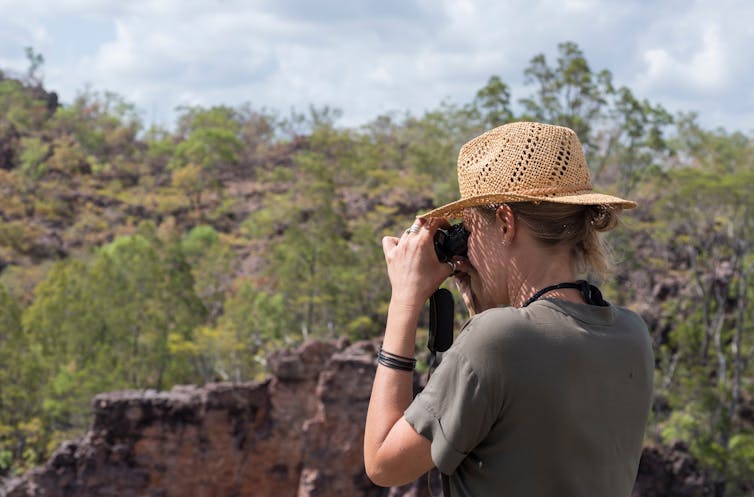
Australia is one of the greatest places to see birds. We are fortunate to have more than 800 different bird species across the nation. At least 370 species are found nowhere else on Earth. They range from the iconic Australian magpie to the migratory short-tailed shearwater, the golden-shouldered parrot and the delightful superb fairy-wren.
Every day, thousands of birdwatchers are out spotting birds. Yet despite this enthusiasm, there’s a lot still to learn. More than 200 species are already listed as threatened with extinction but others may also be struggling and we just don’t know it yet.
In our new research, we used citizen science data to rank Australia’s birds in terms of how well they are known. We looked at how often birdwatchers spot each species and where they find birds, compared with how often they look, to determine rates of survey success. This quantifies how “well known” each species is.
We found a quarter of all Australian bird species can be considered well surveyed and adequately represented in our sightings databases. Many of these species have ranges that overlap with the densely populated regions of Australia. And some, like the southern cassowary and eastern rosella, are well known to most Australians. At the other end of the spectrum, some birds are very hard to find. Here’s Australia’s top 10 most elusive birds.
Taking Advantage Of Citizen Science
Before smartphones took off, birders would take notes in their private notebooks. They might share details of interesting sightings on internet forums or birdwatching clubs, but otherwise most knowledge was locked away from scientists and conservationists.
Now birders are increasingly taking advantage of easy-to-use birding apps such as eBird run by Cornell Lab of Ornithology in the United States, and Birdata from Birdlife Australia.
Collectively, these two platforms contain more than 40 million bird occurrence records spanning the entire country. That represents 3.8 million volunteer hours, or more than 430 years of effort.
Using these apps, birdwatchers and scientists alike can quickly collate bird records at a specific location.
As conservation scientists and ornithologists, we wanted to work out how to identify species we know very little about because poorly known species may be disappearing without us realising. While some researchers have already highlighted serious declines in poorly known species like the red goshawk, swift parrot and buff-breasted buttonquail, we recognised citizen science databases as a vast untapped source of knowledge for all of our native birds.

Australia’s Most Elusive Birds
In our new study, published in the journal Emu (Austral Ornithology), we looked at millions of citizen science bird records. We focused on 581 terrestrial, native species.
We found a group of 56 “hide and seek” champions of Australia. These are the species which are seen least often by birdwatchers. Many of these species exhibit cryptic behaviour or are primarily nocturnal, which explains why they are not regularly seen by citizen scientists. However, we have serious concerns for a handful of these species.
The Coxen’s fig parrot emerges as a species of major concern. Birders recorded more than 300,000 surveys within this species’ range in the rainforests of south-east Queensland and northern New South Wales. Yet only four sightings of this tiny green parrot are documented in our combined citizen science database. None of these sightings were accompanied by photo or video evidence. In fact there has never been a photo of a live bird of this species. Our research suggests this species is well and truly “lost to science” and may already be extinct.
Another species of increasing concern is the buff-breasted buttonquail of far north Queensland. Only seven sightings of this bird are recorded in our combined dataset. Recent research suggests many reported sightings of this species may be mistaken. As with the Coxen’s fig parrot, no photo of a living buff-breasted buttonquail has ever been taken. Nevertheless, there is some hope for this elusive species, as its range has been less comprehensively surveyed by birdwatchers. There is now a concerted effort to find them.
We Can All Play A Role
Our analysis shows much of Australia is not frequented by birdwatchers, so birds in our least populated areas are still poorly known to contemporary science. Some of the most sparsely surveyed regions include Australia’s many deserts, and remote areas such as the Nullarbor Plain, Arnhem Land and western Cape York Peninsula.
Australians can help these elusive birds by heading outdoors with a smartphone and a pair of binoculars. Records of scarce birds will become increasingly important as species continue to decline. Even records of more common birds in backyards have value too. The more information we have, the more chance we can slow the rate of extinction and conserve our amazing birdlife.![]()
Louis Backstrom, PhD Student, University of St Andrews and James Watson, Professor, The University of Queensland
This article is republished from The Conversation under a Creative Commons license. Read the original article.
Pittwater Reserves: Histories + Notes + Pictorial Walks
A History Of The Campaign For Preservation Of The Warriewood Escarpment by David Palmer OAM and Angus Gordon OAM
A Stroll Around Manly Dam: Spring 2023 by Kevin Murray and Joe Mills
A Stroll Through Warriewood Wetlands by Joe Mills February 2023
A Walk Around The Cromer Side Of Narrabeen Lake by Joe Mills
America Bay Track Walk - photos by Joe Mills
An Aquatic June: North Narrabeen - Turimetta - Collaroy photos by Joe Mills
Angophora Reserve Angophora Reserve Flowers Grand Old Tree Of Angophora Reserve Falls Back To The Earth - History page
Annie Wyatt Reserve - A Pictorial
Aquatic Reflections seen this week (May 2023): Narrabeen + Turimetta by Joe Mills
Avalon's Village Green: Avalon Park Becomes Dunbar Park - Some History + Toongari Reserve and Catalpa Reserve
Bairne Walking Track Ku-Ring-Gai Chase NP by Kevin Murray
Bangalley Headland Bangalley Mid Winter
Bangalley Headland Walk: Spring 2023 by Kevin Murray and Joe Mills
Banksias of Pittwater
Barrenjoey Boathouse In Governor Phillip Park Part Of Our Community For 75 Years: Photos From The Collection Of Russell Walton, Son Of Victor Walton
Barrenjoey Headland: Spring flowers
Barrenjoey Headland after fire
Bayview Baths
Bayview Wetlands
Beeby Park
Bilgola Beach
Botham Beach by Barbara Davies
Bungan Beach Bush Care
Careel Bay Saltmarsh plants
Careel Bay Birds
Careel Bay Clean Up day
Careel Bay Playing Fields History and Current
Careel Creek
Careel Creek - If you rebuild it they will come
Centre trail in Ku-ring-gai Chase National Park
Chiltern Track- Ingleside by Marita Macrae
Clareville Beach
Clareville/Long Beach Reserve + some History
Coastal Stability Series: Cabbage Tree Bay To Barrenjoey To Observation Point by John Illingsworth, Pittwater Pathways, and Dr. Peter Mitchell OAM
Cowan Track by Kevin Murray
Curl Curl To Freshwater Walk: October 2021 by Kevin Murray and Joe Mills
Currawong and Palm Beach Views - Winter 2018
Currawong-Mackerel-The Basin A Stroll In Early November 2021 - photos by Selena Griffith
Currawong State Park Currawong Beach + Currawong Creek
Deep Creek To Warriewood Walk photos by Joe Mills
Drone Gives A New View On Coastal Stability; Bungan: Bungan Headland To Newport Beach + Bilgola: North Newport Beach To Avalon + Bangalley: Avalon Headland To Palm Beach
Duck Holes: McCarrs Creek by Joe Mills
Dunbar Park - Some History + Toongari Reserve and Catalpa Reserve
Dundundra Falls Reserve: August 2020 photos by Selena Griffith - Listed in 1935
Elsie Track, Scotland Island
Elvina Track in Late Winter 2019 by Penny Gleen
Elvina Bay Walking Track: Spring 2020 photos by Joe Mills
Elvina Bay-Lovett Bay Loop Spring 2020 by Kevin Murray and Joe Mills
Fern Creek - Ingleside Escarpment To Warriewood Walk + Some History photos by Joe Mills
Iluka Park, Woorak Park, Pittwater Park, Sand Point Reserve, Snapperman Beach Reserve - Palm Beach: Some History
Ingleside
Ingleside Wildflowers August 2013
Irrawong - Ingleside Escarpment Trail Walk Spring 2020 photos by Joe Mills
Irrawong - Mullet Creek Restoration
Katandra Bushland Sanctuary - Ingleside
Lucinda Park, Palm Beach: Some History + 2022 Pictures
McCarrs Creek
McCarr's Creek to Church Point to Bayview Waterfront Path
McKay Reserve
Mona Vale Beach - A Stroll Along, Spring 2021 by Kevin Murray
Mona Vale Headland, Basin and Beach Restoration
Mona Vale Woolworths Front Entrance Gets Garden Upgrade: A Few Notes On The Site's History
Mother Brushtail Killed On Barrenjoey Road: Baby Cried All Night - Powerful Owl Struck At Same Time At Careel Bay During Owlet Fledgling Season: calls for mitigation measures - The List of what you can do for those who ask 'What You I Do' as requested
Mount Murray Anderson Walking Track by Kevin Murray and Joe Mills
Mullet Creek
Narrabeen Creek
Narrabeen Lagoon Catchment: Past Notes Present Photos by Margaret Woods
Narrabeen Lagoon Entrance Clearing Works: September To October 2023 pictures by Joe Mills
Narrabeen Lagoon State Park
Narrabeen Lagoon State Park Expansion
Narrabeen Rockshelf Aquatic Reserve
Nerang Track, Terrey Hills by Bea Pierce
Newport Bushlink - the Crown of the Hill Linked Reserves
Newport Community Garden - Woolcott Reserve
Newport to Bilgola Bushlink 'From The Crown To The Sea' Paths: Founded In 1956 - A Tip and Quarry Becomes Green Space For People and Wildlife
Pittwater Reserves: The Green Ways; Bungan Beach and Bungan Head Reserves: A Headland Garden
Pittwater Reserves, The Green Ways: Clareville Wharf and Taylor's Point Jetty
Pittwater Reserves: The Green Ways; Hordern, Wilshire Parks, McKay Reserve: From Beach to Estuary
Pittwater Reserves - The Green Ways: Mona Vale's Village Greens a Map of the Historic Crown Lands Ethos Realised in The Village, Kitchener and Beeby Parks
Pittwater Reserves: The Green Ways Bilgola Beach - The Cabbage Tree Gardens and Camping Grounds - Includes Bilgola - The Story Of A Politician, A Pilot and An Epicure by Tony Dawson and Anne Spencer
Pittwater spring: waterbirds return to Wetlands
Pittwater's Lone Rangers - 120 Years of Ku-Ring-Gai Chase and the Men of Flowers Inspired by Eccleston Du Faur
Pittwater's Great Outdoors: Spotted To The North, South, East + West- June 2023: Palm Beach Boat House rebuild going well - First day of Winter Rainbow over Turimetta - what's Blooming in the bush? + more by Joe Mills, Selena Griffith and Pittwater Online
Pittwater's Parallel Estuary - The Cowan 'Creek
Resolute Track at West Head by Kevin Murray
Resolute Track Stroll by Joe Mills
Riddle Reserve, Bayview
Salvation Loop Trail, Ku-Ring-Gai Chase National Park- Spring 2020 - by Selena Griffith
Seagull Pair At Turimetta Beach: Spring Is In The Air!
Stapleton Reserve
Stapleton Park Reserve In Spring 2020: An Urban Ark Of Plants Found Nowhere Else
Stony Range Regional Botanical Garden: Some History On How A Reserve Became An Australian Plant Park
The Chiltern Track
The Chiltern Trail On The Verge Of Spring 2023 by Kevin Murray and Joe Mills
The Resolute Beach Loop Track At West Head In Ku-Ring-Gai Chase National Park by Kevin Murray
Topham Track Ku-Ring-Gai Chase NP, August 2022 by Joe Mills and Kevin Murray
Towlers Bay Walking Track by Joe Mills
Trafalgar Square, Newport: A 'Commons' Park Dedicated By Private Landholders - The Green Heart Of This Community
Tranquil Turimetta Beach, April 2022 by Joe Mills
Turimetta Beach Reserve by Joe Mills, Bea Pierce and Lesley
Turimetta Beach Reserve: Old & New Images (by Kevin Murray) + Some History
Turimetta Headland
Turimetta Moods by Joe Mills: June 2023
Turimetta Moods (Week Ending June 23 2023) by Joe Mills
Turimetta Moods: June To July 2023 Pictures by Joe Mills
Turimetta Moods: July Becomes August 2023 by Joe Mills
Turimetta Moods: August Becomes September 2023 ; North Narrabeen - Turimetta - Warriewood - Mona Vale photographs by Joe Mills
Turimetta Moods: Mid-September To Mid-October 2023 by Joe Mills
Warriewood Wetlands - Creeks Deteriorating: How To Report Construction Site Breaches, Weed Infestations + The Long Campaign To Save The Warriewood Wetlands & Ingleside Escarpment March 2023
Warriewood Wetlands and Irrawong Reserve
Whale Beach Ocean Reserve: 'The Strand' - Some History On Another Great Protected Pittwater Reserve
Wilshire Park Palm Beach: Some History + Photos From May 2022
Winji Jimmi - Water Maze

2023 Australian Junior Surfing Titles
Surfing NSW Wraps Up High-Performance Training Camp At URBNSURF In Preparation For 2023 Australian Junior Surfing Titles
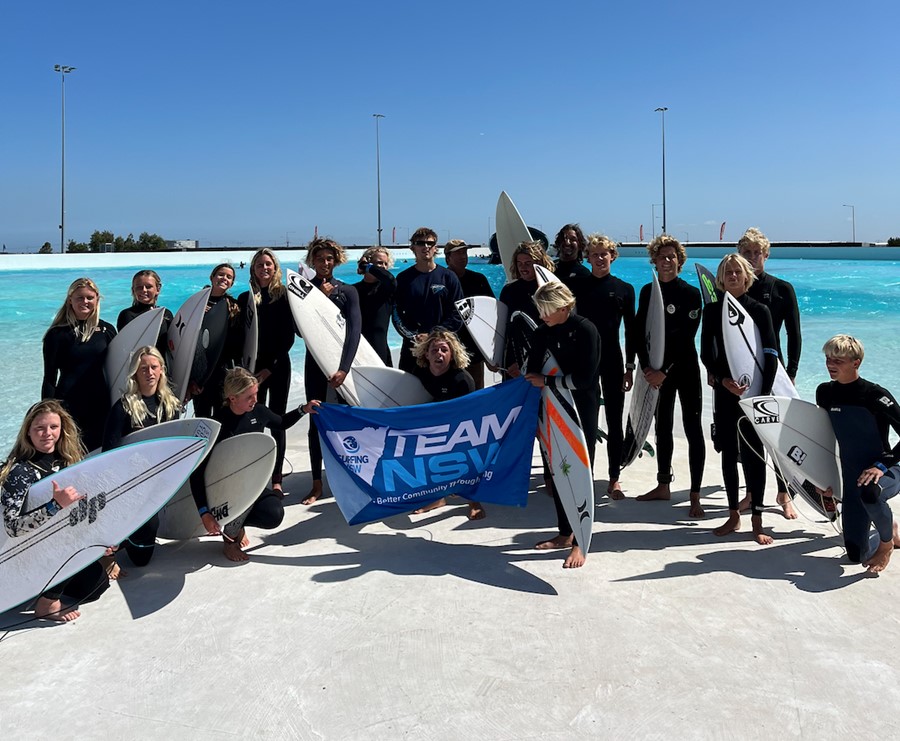
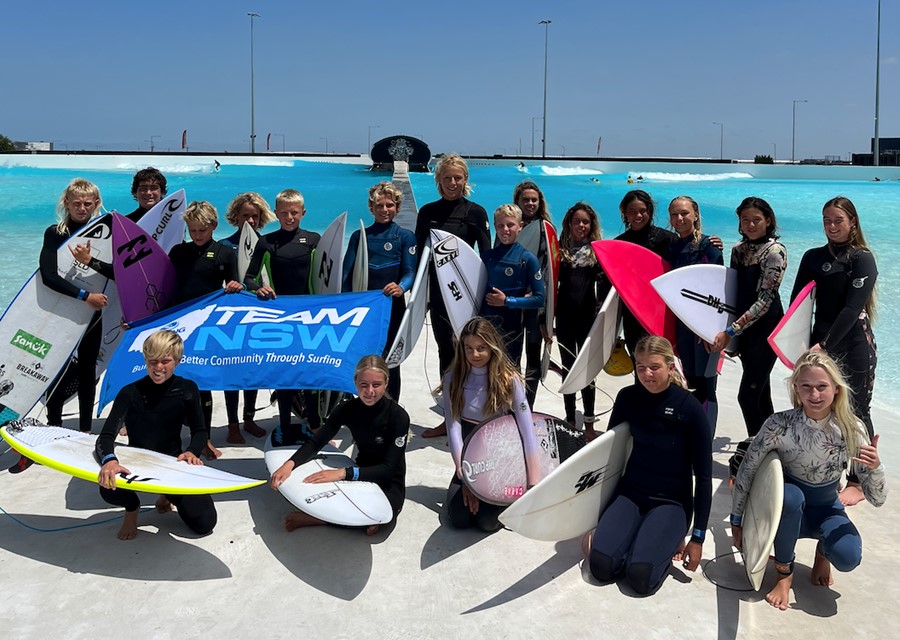
Australian Junior Surfing Team 2023
Monday 27 November - Maroubra, SYDNEY
On Wednesday 22nd November, Surfing NSW’s (SNSW) High Performance team hit up Melbourne’s great URBNSURF wave pool for a team bonding and training session before they get set for the Australian Junior Surfing Titles at Phillip Island, Victoria running 25th November to Sunday 3rd December.
The NSW Team includes three student-athletes from the Narrabeen Sports High School Surfing Academy, along with an Avalon Beach surfer and a North Steyne Boardriders club member.
This team of very talented young athletes have been undergoing a vigorous training campaigning in order to prepare for the Australian Junior Titles. Prior to this training camp at URBNSURF the team completed a five day surf intensive training camp last month at the Surfing Australia High Performance Centre (HPC) in Casuarina NSW.
The High-Performance camp brought together our state’s top Juniors to train and prepare them for Aussie’s. With facilities from within the HPC along with elite coaches such as Matty Cattle, Luke Egan, Kai Otton and Nathan ‘Noodles’ Webster, SNSW aims to strengthen our Junior Team NSW athletes in order for them to take on some of the nations best junior surfers.
The team, selected from their results at the State Junior and Grommet Titles, provides NSW’s top junior surfers with the resources and pathways to reach their full potential.
Team Manager and Performance Pathways Coordinator, Ryan Haworth expressed his excitement for the Junior High Performance Program (JHPP) and said “We have some really incredible surfers and an amazing line-up of experienced coaches. Our Team will be one to watch at Aussies.”
Surfing NSW is honoured to announce the 2023 Junior Aussies Team below. Special mention also goes out to our State athletes Fletcher Kelleher, Milla Brown, Keira Buckpitt, Lennix Smith, Kash Brown and Harley Walters who will not be competing at the Australian Junior Titles as they were representing Australia at the Junior ISA World Games, go team!
2023 Surfing NSW Junior Aussies Team
U18 Boys: Baxter Hurt, Sol Gruendling, Fred Carmody, Jimmi Hill, Dane Henry, Eden Hasson, Samuel Lowe, Joel Emery, Harry O’Brien
U18 Girls: Imojen Enfield, Shyla Short, Lilah Pearce, Juniper Harper, Jemma Holley, Sydney Chevalier, Natalie Fensom, Zahlia Short, Tahlia Hirst
U16 Boys: Ben Zanatta, Felix Byrnes, Jackson Woolnough, Sullivan Tucker, Ocean Lancaster, Phoenix Vischer, Max Mcgillavray, Rene Galloway, Lachlan Arghyros
U16 Girls: Ruby Trew, Ocea Curtis, Kyla Renes, Macey Jolley, Grace Gosby, Ava Arghryos, Poppy O’Reilly, Mia Baker, Alice Hodgson
U14 Boys: Jaggar Phillips, Hunter Sutcliffe, Rio Luther Barr, Joey Silk, Ashton Mekisic, Eli Clarke, Kade Kelly, Harry Blanchfield, Locana Cullen, Carter Crowley, Malakai Carson
U14 Girls: Lucy Darragh, Lani Cairncross, Mali Adam, Halo Banfield, Lyla Freudenstein, Madora Barton, Malia Watson, Olivia Shannon, Pearl Eaton, Alana Fletcher, Sophia Lamberger
Out with injury - Tahlia Tebb and Quincy Symonds
MR Shield Schools Teams:
U19 Boys: Lachlan Smith and Brin Valaire – Newcastle Grammar School
U19 Girls: Lucy Darragh and Holly Wishart – Kiama High
U16 Boys: Chex Dempsey and Taj Daley – Tumbi Umbi Campus
U16 Girls: Mia Baker and Ocea Curtis – Byron Bay High School
Allstars:
U19 Boys: Sol Gruendling, Fred Carmody
U19 Girls: Jemma Holley, Imojen Enfield
U16 Boys: Felix Byrnes, Phoenix Vischer
U16 Girls: Grace Gosby, Ruby Trew
2023 Team NSW and JHPP Qualification Process as per the Surfing Australia rulebook. Qualifications are as follows:
U18 & U16 Boys: 1st – 8th from the Junior State Titles.
U18 & U16 Girls : 1st – 8th from Junior State Titles.
U14 Boys & U14 Girls: 1st – 8th from Grommet State Titles.
_________________________________________________________________
Swell Picks Up And Delivers Punchy Day Of Action At The Woolworths Australian Junior Surfing Titles; Ruby Trew- Grace Gosby Win U16 Allstars
PHILLIP ISLAND, VIC, December 2nd, 2023
Finalists have been decided, and winners crowned on day seven of the Woolworths Australian Junior Surfing Titles.
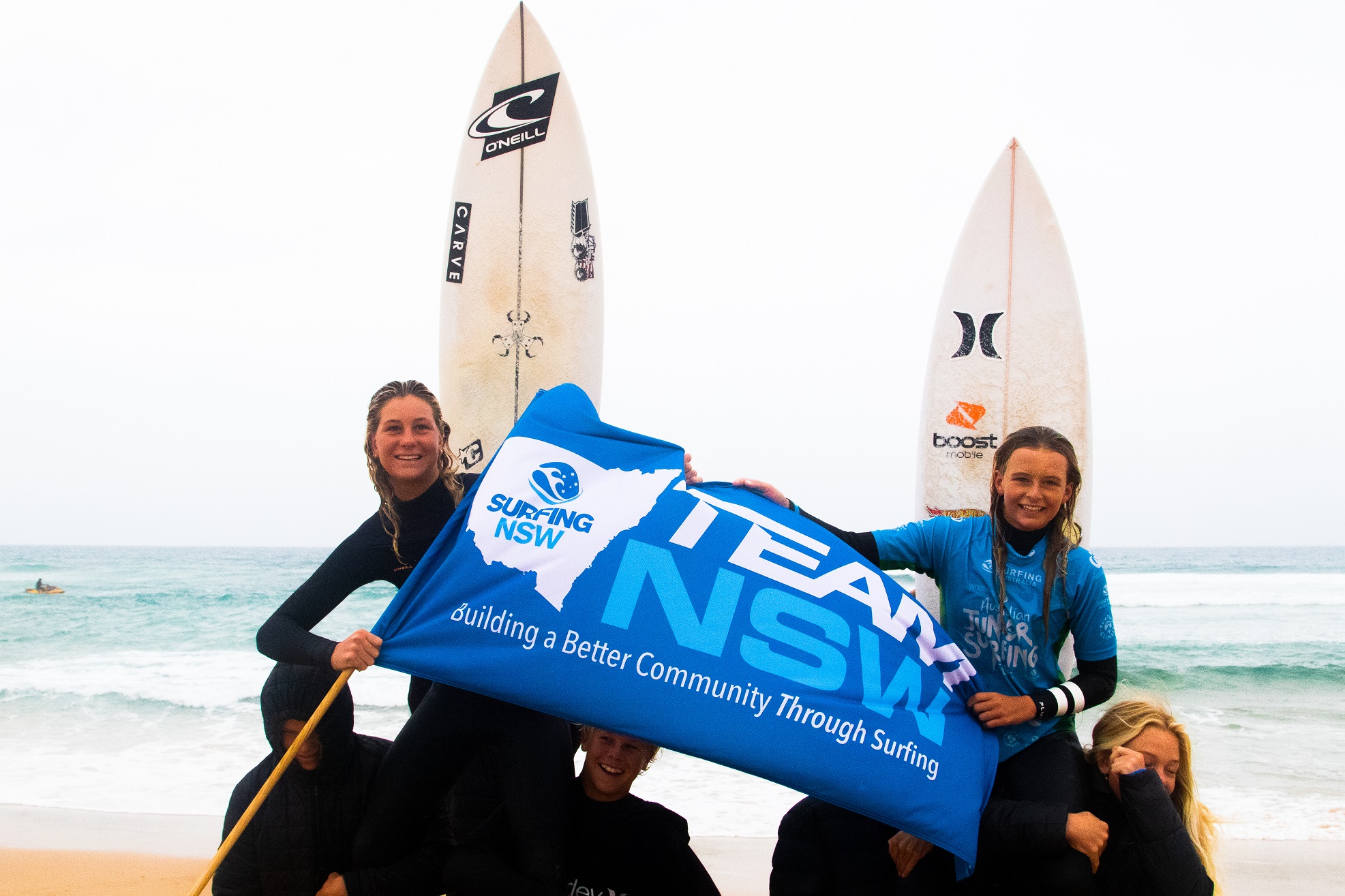
Jimmi Hill (NSW) set the competition alight with an impressive aerial manoeuvre as part of a 9.25-ride to book his spot in the U18 Men’s decider. He'll be joined in the final by Macklin Flynn (WA), Eden Hasson (NSW), who won the second semifinal, and Willem Watson (VIC).
Willow Hardy (WA) was the standout in the U18 Women's semis, posting an excellent 9.00 ride to win her heat. She'll face Natalie Fensom (NSW), Sarah Young (QLD) and Jordy Halford (QLD) in the final.
Earlier, Ruby Trew and Grace Gosby from NSW took out the Under 16 Girls Allstars schools division. It was a tight battle throughout, with Sara Hickson (VIC) starting off strong, getting the early lead. However, NSW stayed in it, and Ruby Trew pulled off an incredible final ride, scoring a 6.23 ride in a mad minute flurry of waves where a NSW, Victorian and WA surfer all got waves.
Ruby said: "It was kinda nerve-racking , the conditions were so tricky but we got it done and it was great to take the win.
"Conditions have been pretty tricky all week but we've all been supporting each other. It has been raining and windy but we're getting through it as long as we just keep frothing on whatever the conditions are and everyone is doing their best, everyone's happy."
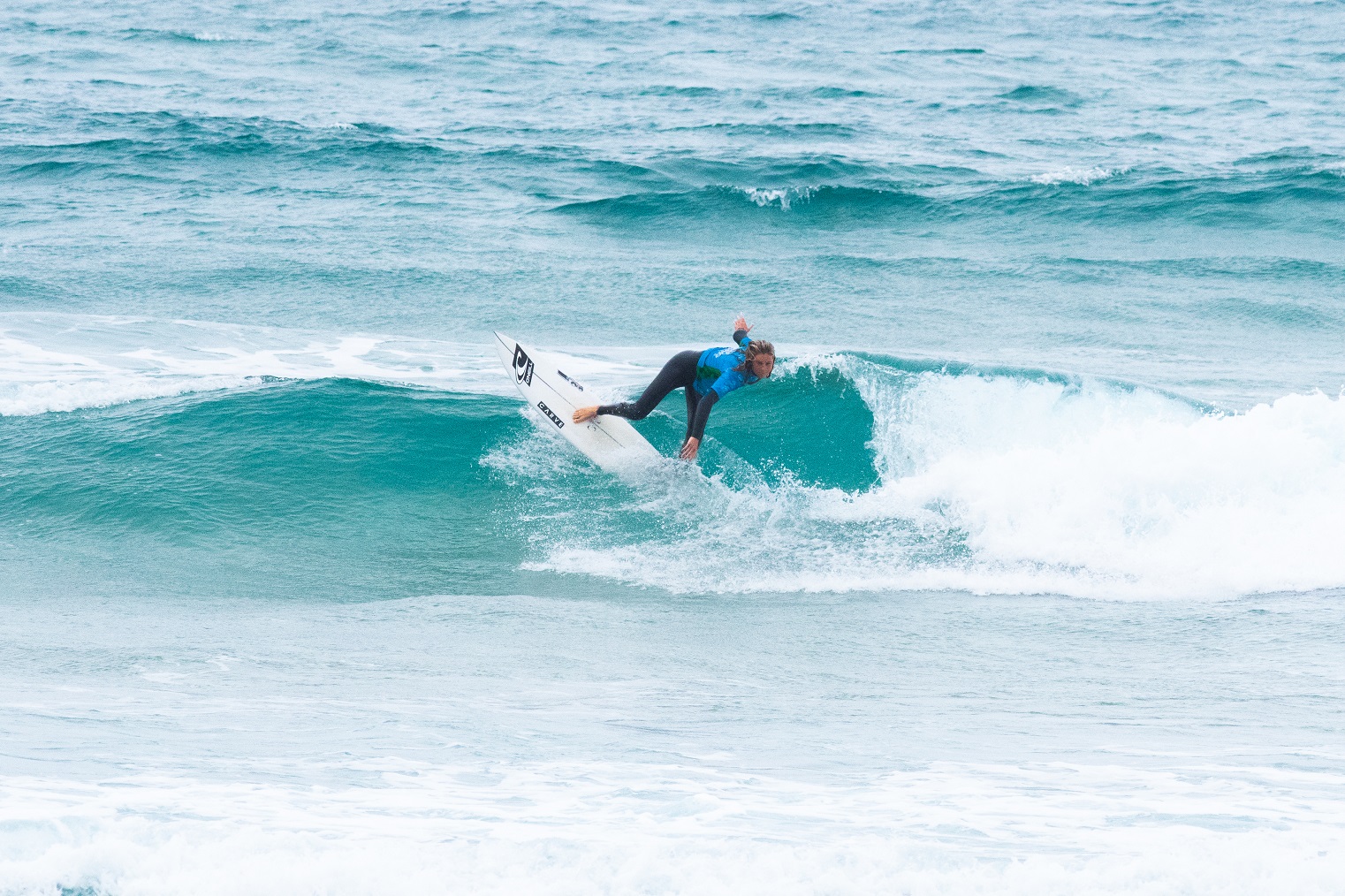
Ruby Trew in action at the Woolworths Australian Junior Surfing Titles. Image: Noah Clifford / Surfing Australia
Siblings Luca Martin and Will Martin (QLD) took out the U16 Boys MR Shield schools division final, with Luca laying down a solid foundation early in the heat and then Will shutting it down in the second half. The two put in a dominant performance in a final that remarkably had three sets of brothers in it!
Luca said: "So stoked to get the win with my brother. It's so good because we understand each other and we don't really get angry at each other if we waste more time. We can just surf our best when we're with each other.
"I was looking at an early start to get one good wave but fumbled. Seven minutes in I finally got a wave that I could do a few turns on. It means a lot to me that we won."
In the upcoming
In the upcoming U14 Boys Semifinals Heat 1 features all NSW athletes: Locana Cullen, Carter Crowley and Jaggar Phillips. Semifinal Heat 2 features Cruz Uros (WA) Luca Martin (QLD) and Hunter Sutcliffe (NSW). In the upcoming U14 Girls Semifinals Lucy Darragh and Lani Cairncross are still in for NSW.
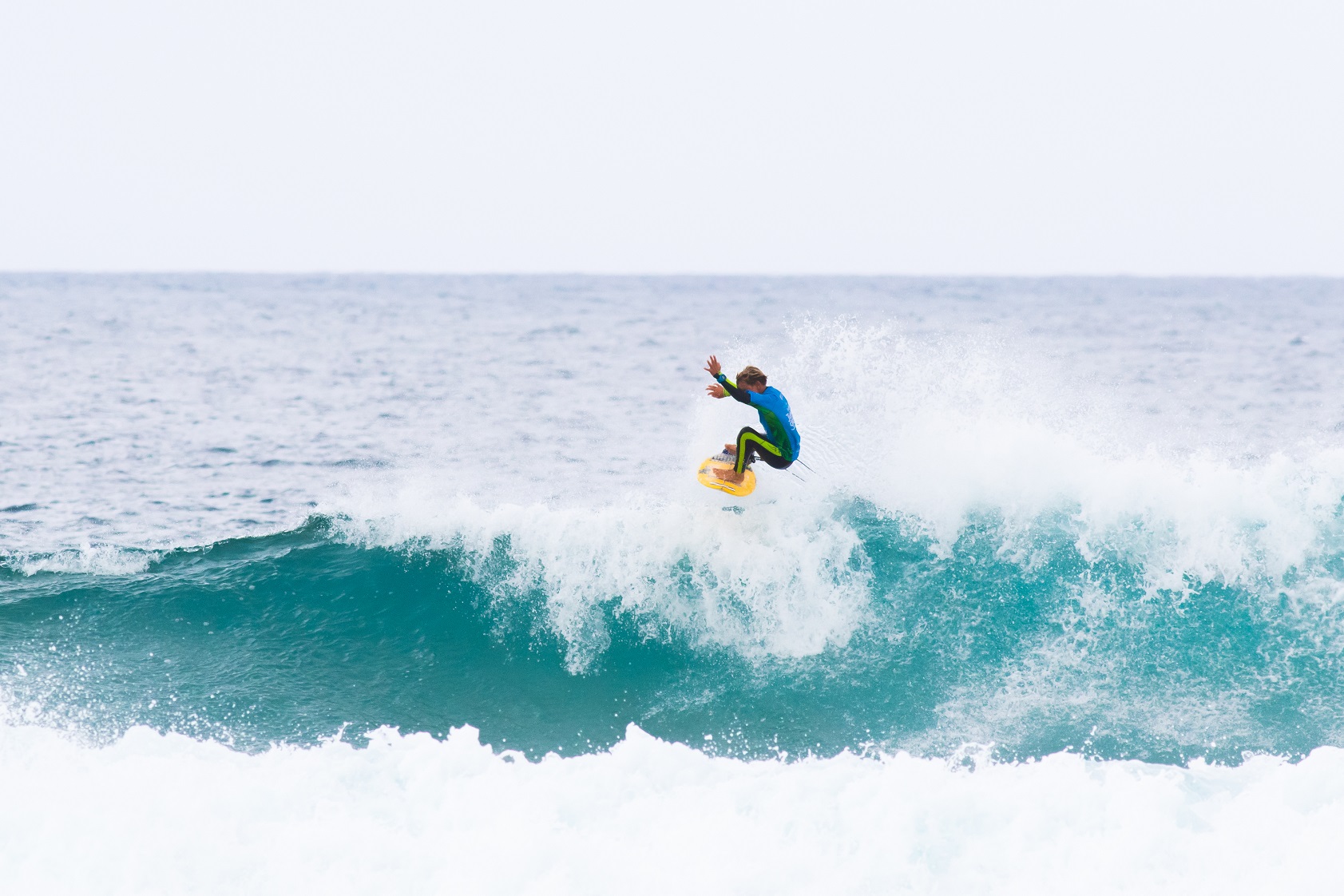
Locana Cullen in action at the Woolworths Australian Junior Surfing Titles. Image: Noah Clifford / Surfing Australia
In the U16 Men semifinals North Steyne Boardriders Member Ben Zannatta is matched against Maverick Wilson (WA) and Jesse Fergusson (QLD) in Heat 2. Evans Head's Max McGillivray will meet Mitchell Peterson (QLD) and Okie Fraser (WA) in Heat 1.
In the U16 Women semfinals Grace Gosby, also a member of the Cronulla Sharks Boardriders, will meet Meika Locke (QLD) Samantha Arderne (QLD) in Heat 2, while Kingscliff's Ava Arghryros is matched against Ziggy Mackenzie (QLD) and Olive Hardy (WA) in Heat 1.
In other results, Queensland won the State Team final ahead of NSW and Western Australia.
Contest Director, Liam Robertson said: "There was some incredible surfing today at Cape Woolamai. We saw an increase in swell with a new groundswell filling in providing great waves for the schools division finals. We are expecting this swell to hold in for tomorrow's final day with all remaining Australian Champions to be crowned!"
Find all the results on LiveHeats.
More information on website HERE.
You can watch the final day live on KommunityTV.
Day 7 Finals results:
U16 Girls Allstars
- Grace Gosby / Ruby Trew (NSW) - 12.18
- Sara Hickson / Sophie Wilkinson (VIC) - 11.35
- Eliza Richardson / Meika Locke (QLD) 9.13
- Rosie Gillett / Indie Siedmiogrodzki (WA) - 6.28
U16 Boys Allstars
- Maverick Wilson / Okie Fraser (WA) - 12.83
- Mitchell Peterson / Will Martin (QLD) - 12.03
- Phoenix Vischer / Felix Byrnes (NSW) - 9.66
- Jerry Kelly / Rye Cicero (VIC) - 8.76
U19 Girls Allstars
- Eva Bassed / Sarsha Pancic (VIC) - 12.41
- Kaleisha Launders / Willow Hines (WA) - 9.38
- Imojen Enfield / Jemma Holley (NSW) - 6.96
- Gisele Sinclair / Jordy Halford (QLD) - 6.96
U19 Boys Allstars
- Willem Watson / Lucas Hickson (VIC) - 12.20
- Sol Gruendling / Fred Carmody (NSW) - 10.60
- Jesse Siedmiogrodzki / Otis North (WA) - 9.73
- Riley Munro / Zyah Hession (QLD) - 8.13
U16 Girls MR Shield
- Meika Locke / Sea White (QLD) - Palm Beach Currumbin SHS - 12.21
- Olive Hardy / Mia Jacobs (WA) - Margaret River SHS - 10.05
- Sara Hickson / Sophie Wilkinson (VIC) - Dromana Secondary College - 9.71
- Ocea Curtis / Mia Baker (NSW) - Byron Bay High School - 8.68
U16 Boys MR Shield
- Luca Martin / Will Martin (QLD) - Palm Beach Currumbin SHS - 11.33
- Fynn Lange / Reef Lange (WA) - Margaret River SHS - 9.76
- Jarrah Cicero / Rye Cicero (VIC) - Foster Secondary College - 9.28
- Ashton Crowley / Arley Partridge (SA) - Cardijn College - 8.63
U19 Girls MR Shield
- Willow Hardy / Ruby Berry (WA) - Margaret River SHS 1 - 14.61
- Holly Wishart / Lucy Darragh (NSW) - Kiama High School - 9.93
- Maia Taite / Anamika Jakhwal (SA) - Southern Montessori - 8.45
- Armanie Barber / Rosie Richardson (QLD) - Sunshine Beach SHS - 3.93
U19 Boys MR Shield
- Riley Munro / Davi Glazer (QLD) - Palm Beach Currumbin SHS - 15.51
- Macklin Flynn / Cruz Sheridan (WA) - Margaret River SHS - 12.33
- Jack Bassett / Remy Roberts (VIC) - St. Ignatius College - 11.38
- Lachlan Smith / Brin Valaire (NSW) - Newcastle Grammar School - 8.52
State Tag Team Final:
- Queensland - 33.71
- New South Wales - 31.99
- Western Australia - 29.34
- Victoria - 27.21
- South Australia - 16.83
- Tasmania - 14.01
About the Woolworths Australian Junior Surfing Titles:
The Woolworths Australian Junior Surfing Titles encompass individual divisions for U14 – U18 Junior Men and Women as well as school surfing divisions for U16 – U19 (Allstars & MR Shield) Junior Men and Women and is the final major counting event on the National Junior Rankings, awarding 10,000 points to every age division winner.
Surfing Australia would like to acknowledge the Bunurong people as the traditional owners of the land on which the competition will be held and we pay our respects to elders, past, present and emerging and thank them for the opportunity.
The event is supported by major partner Woolworths, presenting partner Surfers for Climate, media partner KommunityTV and supporting partners Le Tan, Ruffie, Wax Fresh, Destination Gippsland, Bass Coast Shire Council and Surfing Victoria.
___________________________________________________
Exciting Finals Action At The Woolworths Australian Junior Surfing Titles: Loci Wins His Division!
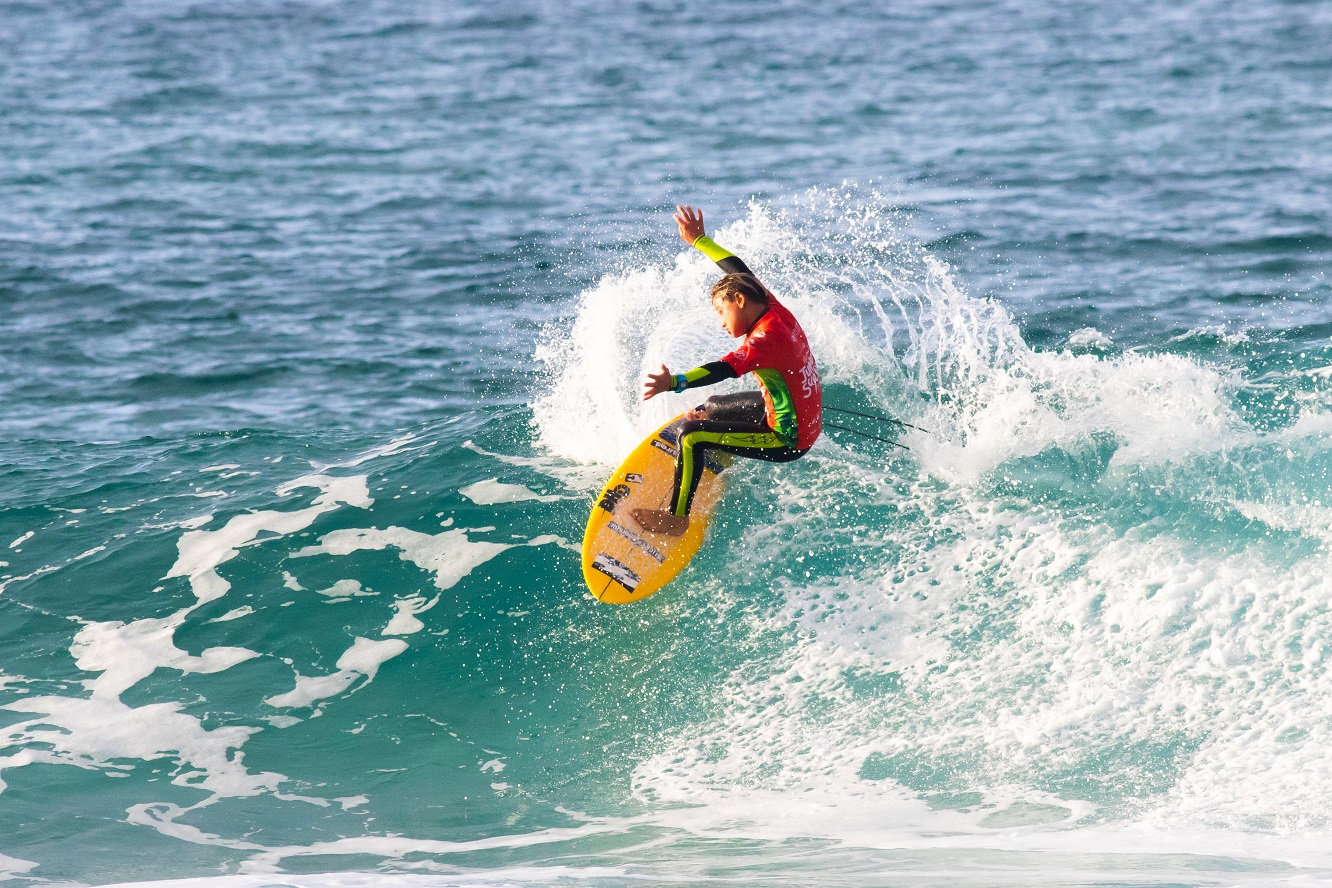
PHILLIP ISLAND, VIC
Sunday December 3rd, 2023
The Woolworths Australian Junior Surfing Titles wrapped up at Cape Woolamai with high-quality surfing in all age divisions and tightly contested finals action.
U18 Men’s winner, Eden Hasson (NSW), delivered an incredible performance against Macklin Flynn (WA) and Jimmi Hill (NSW). His powerful rail surfing and a late score of 9.2 secured his victory as Hasson was able to combo the field.
Hasson said: "I got the first two ones and then once I was in a comfortable position I kind of just loosened up and tried to go for some airs and it paid off. Yeah, I'm so happy."
Hasson said he was stoked to make the team for the 2024 ISA World Junior Surfing Championship.
"I was watching it the last couple days and watching all the boys over there ripping. That made me want to win this to get over there next year."
Willow Hardy (WA) claimed victory in the U18 Women's division with a strong back hand attack and her two final rides, which scored 6.33 and 7.00.
Hardy said: “It feels so surreal, so sick to actually get to show that I deserve to go [to the 2024 ISA World Junior Surfing Championship] in this kind of surf. I'm just so grateful. I had pretty good heats leading up to it, some of the best heats I think I've surfed. But it could've been anyone's. I was just taking my time, being patient. The weather conditions, being a little bit grovely, you can't really force anything."
Maverick Wilson (WA) produced something special to win the U16 Men's final, scoring a 9.50 on his last wave in an exciting comeback under pressure from Mitchell Peterson (QLD) and Ben Zannatta (NSW).
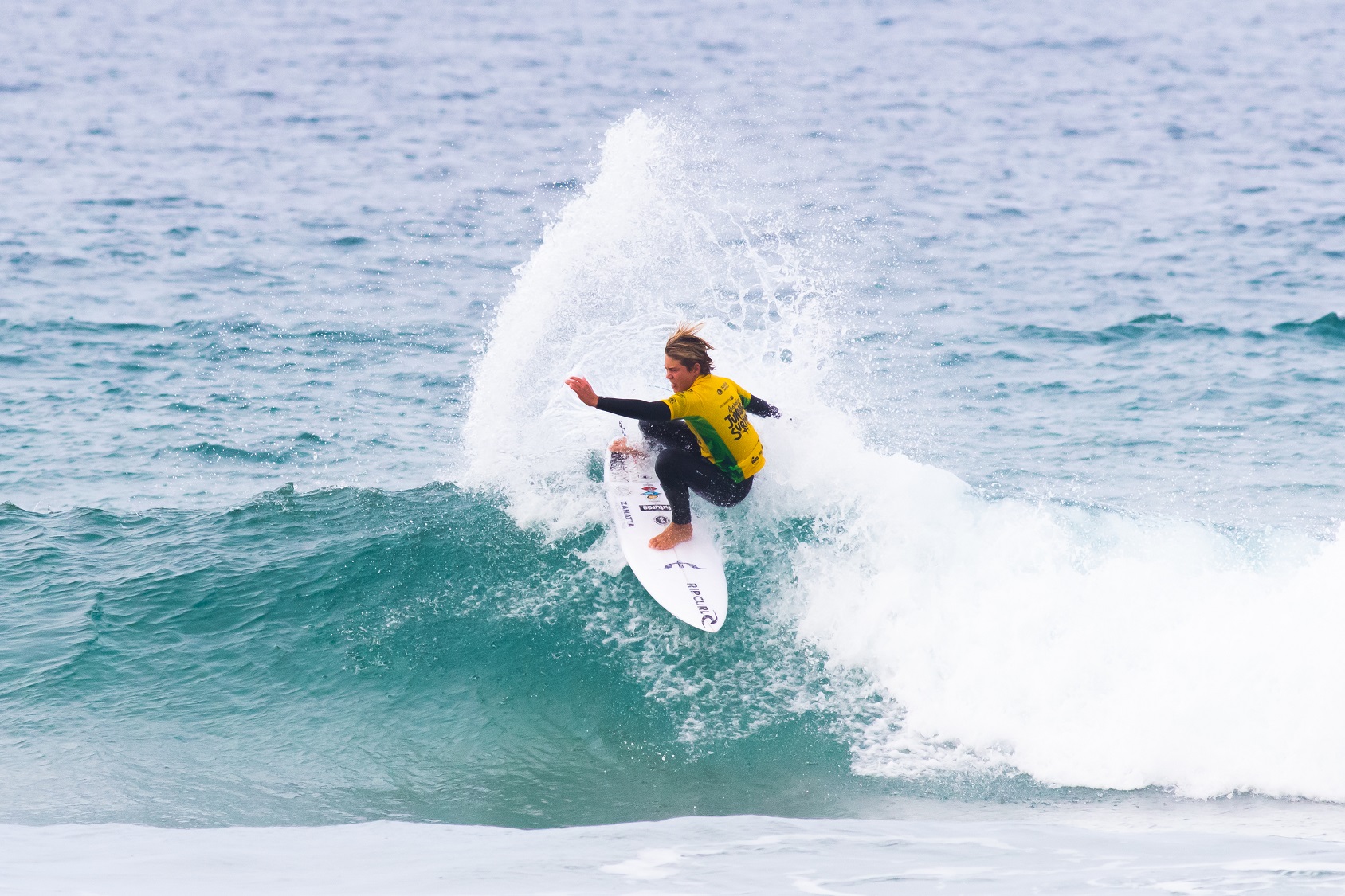
Ben Zannatta in action at the Woolworths Australian Junior Surfing Titles. Images: Noah Clifford / Surfing Australia
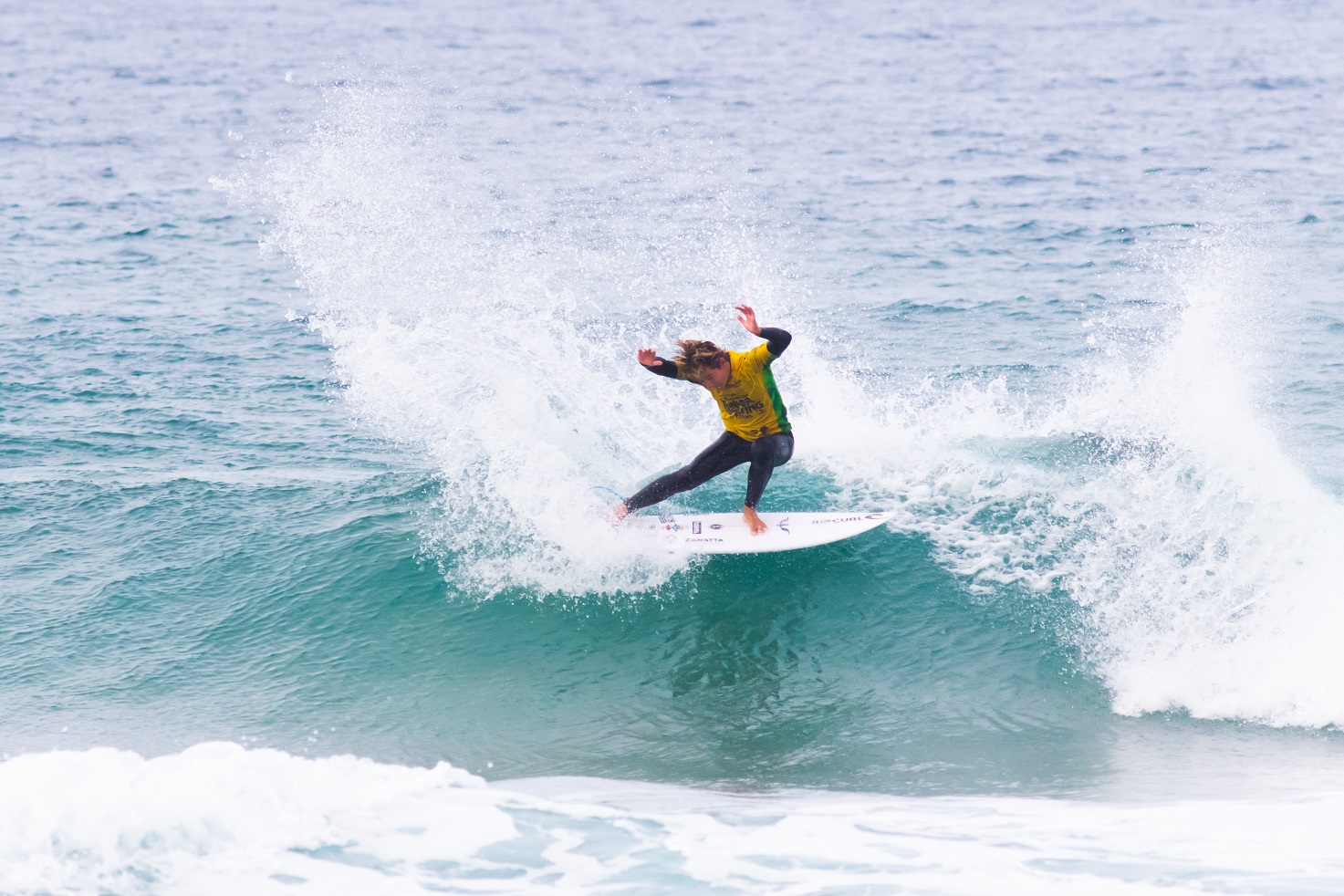
Ziggy Mackenzie (QLD) secured the U16 Women's title from state rival Samantha Arderne. While Eliza Richardson surfed an incredible final, posting the highest heat total of the day, a 17.88 (8.38 + 9.50), to win the U14 Girls title.
Locana Cullen (NSW) was another standout, winning the U14 Boys title after landing an air reverse in his semifinal heat, earning a perfect 10.00 score.
Cullen said: "It feel good to get a ten. I was very surprised that I made that. I had two good scores and there was a section so I just went for it. We had a plan, just to catch the set waves, try to do two good turns on them or something like that. Once you've locked down two good scores, go for the air."
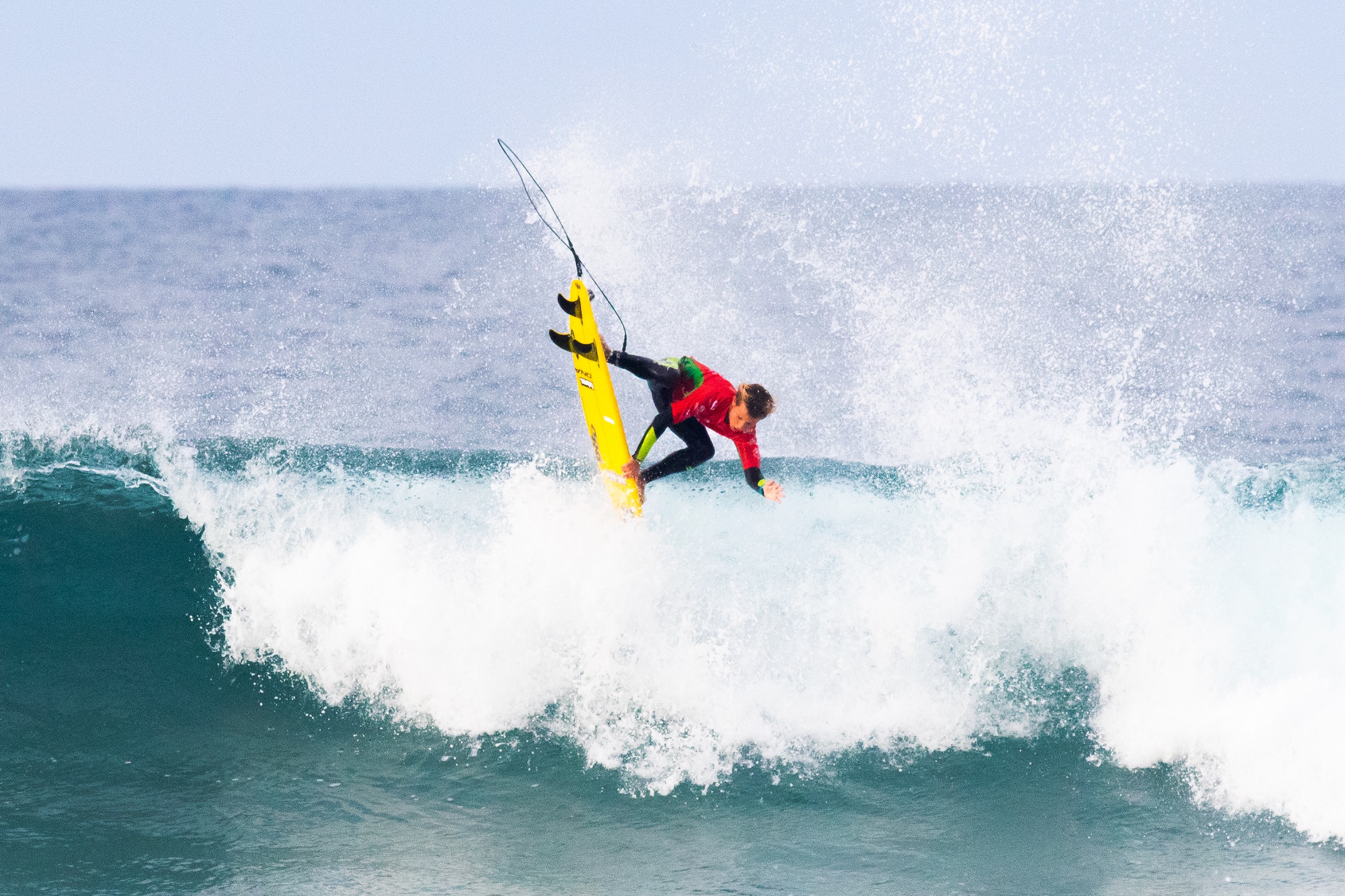
Locana Cullen in action at the Woolworths Australian Junior Surfing Titles. Images: Noah Clifford / Surfing Australia
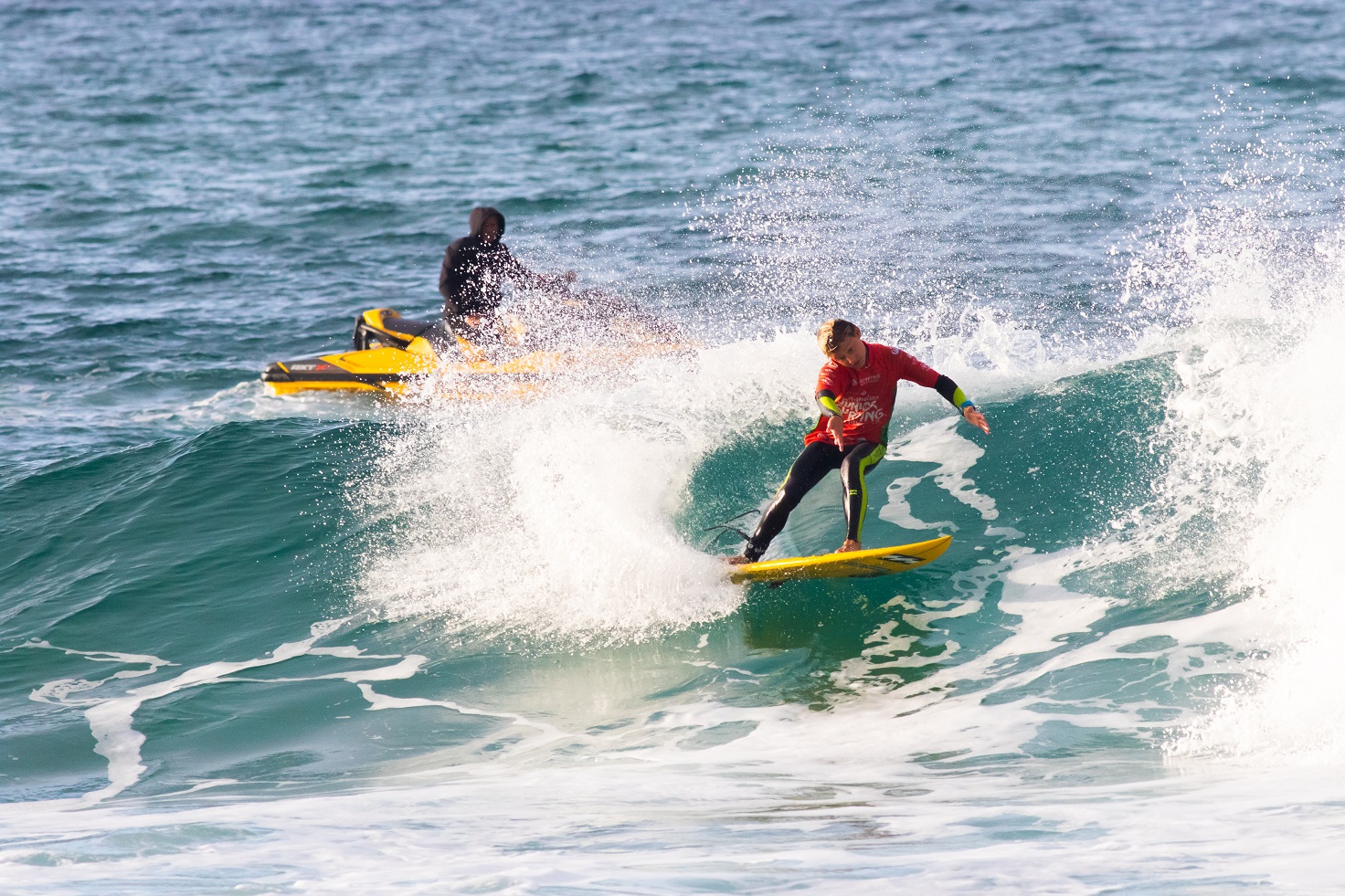
Contest Director, Liam Roberston said: "It was a fantastic end to the Woolworths Australian Junior Surfing Titles at Cape Woolamai. We were greeted with playful 2ft waves, which saw some amazing surfing and great battles go down. A massive congratulations to all the champions and overall state champion Queensland. The future of surfing in Australia is in good hands! "
Finals results:
U18 Men
- Eden Hasson (NSW) - 17.53
- Macklin Flynn (WA) - 13.08
- Jimmi Hill (NSW) - 12.98
- Willem Watson (VIC) - 12.73
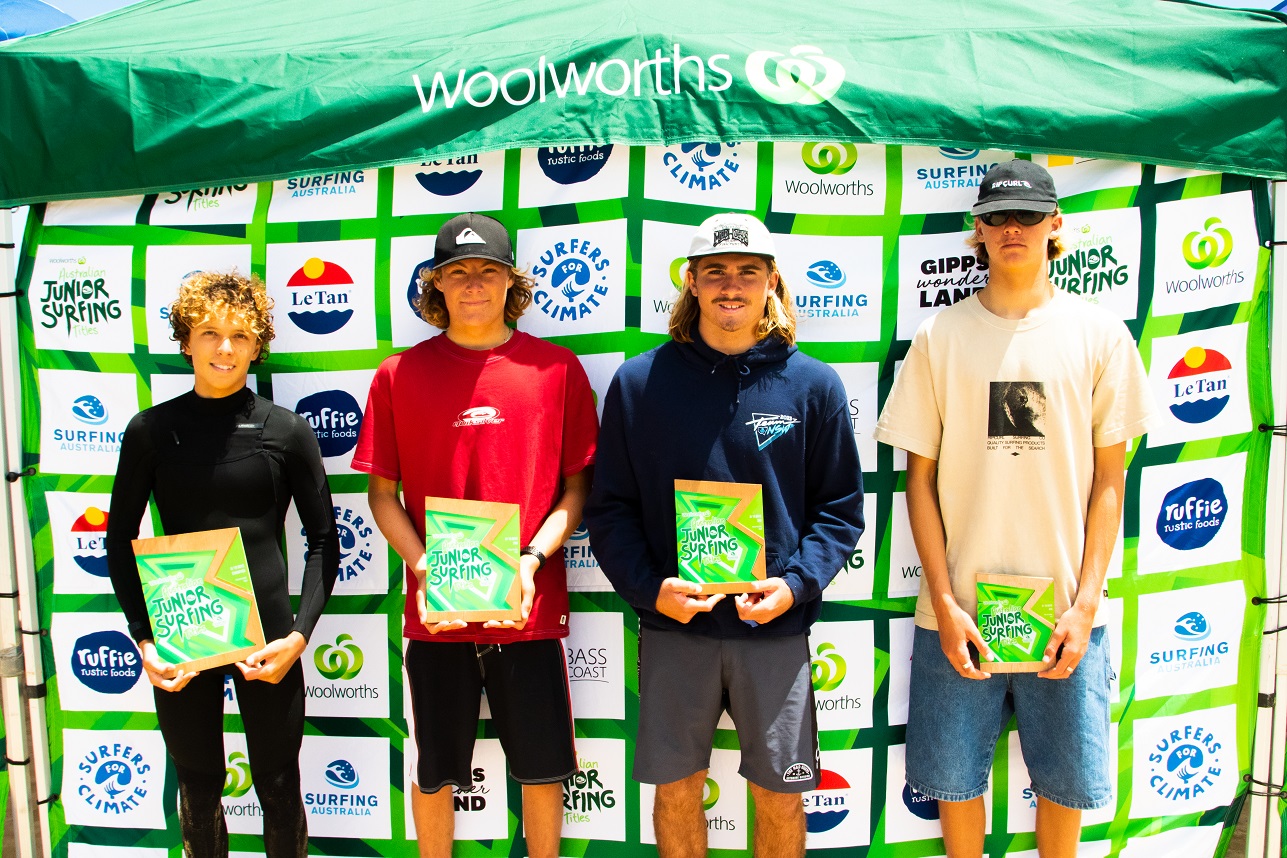
U18 Men
U18 Women
- Willow Hardy (WA) - 13.33
- Natalie Fensom (NSW) - 12.03
- Jordy Halford (QLD) - 9.38
- Sarah Young (QLD) - 9.25
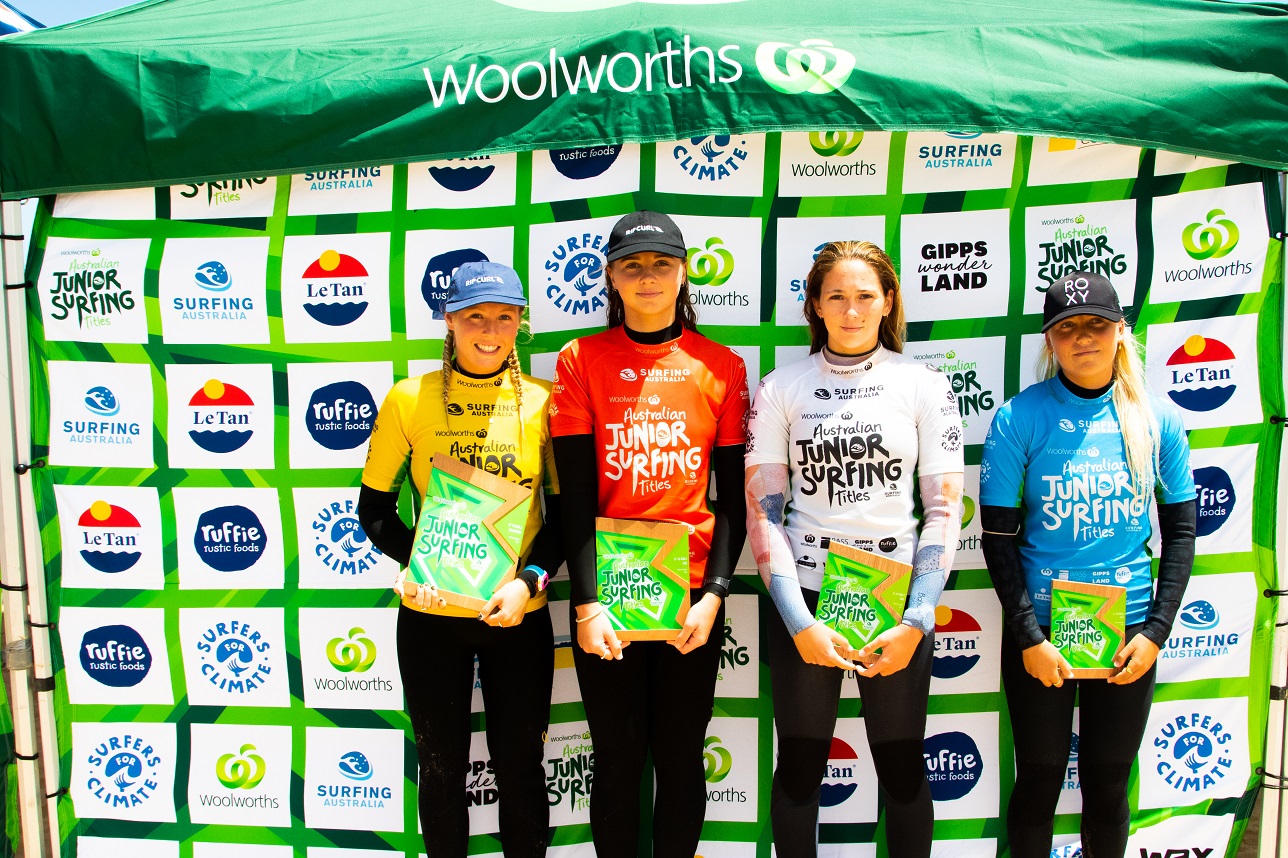
U18 Women
U16 Men
- Maverick Wilson (WA) - 17.07
- Mitchell Peterson (QLD) - 16.45
- Ben Zannatta (NSW) - 12.25
- Max Mcgillavray (NSW) - 12.10
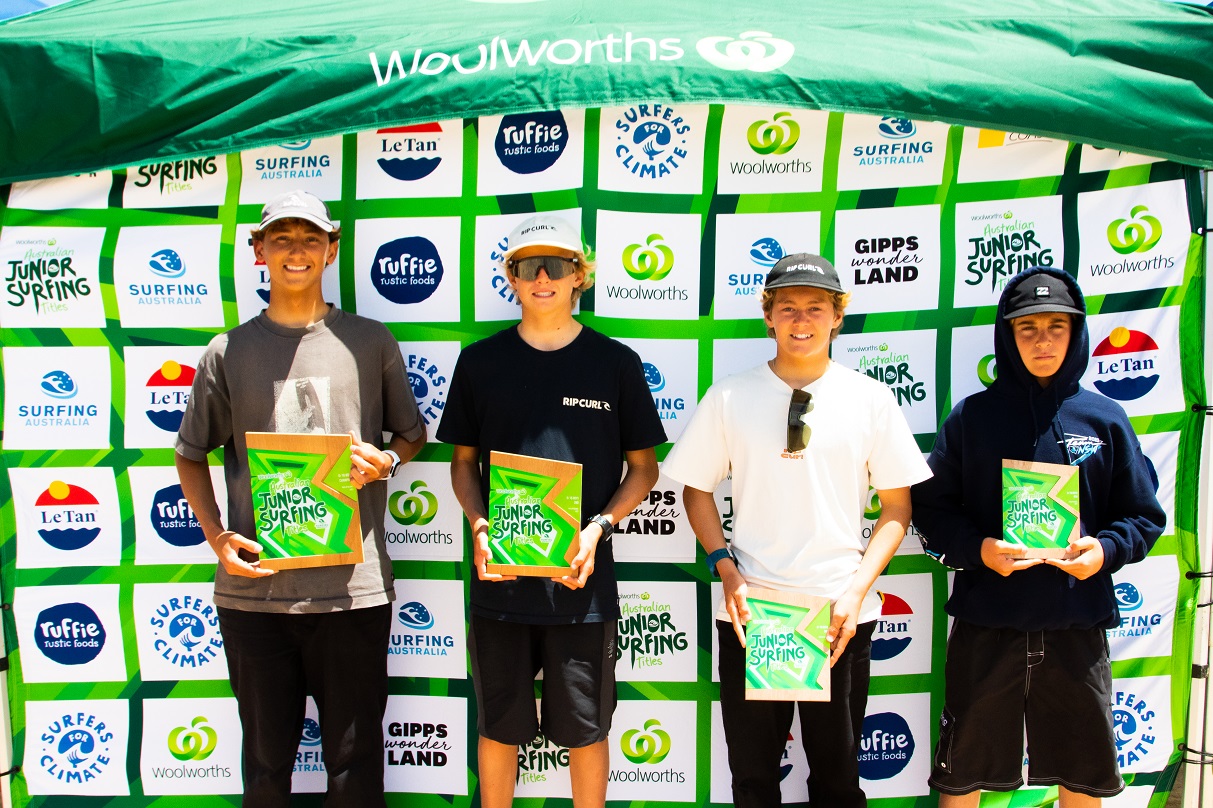
U16 Men
U16 Women
- Ziggy Mackenzie (QLD) - 13.38
- Samantha Arderne (QLD) - 11.33
- Ava Arghryros (NSW) - 10.35
- Meika Locke (QLD) - 10.26
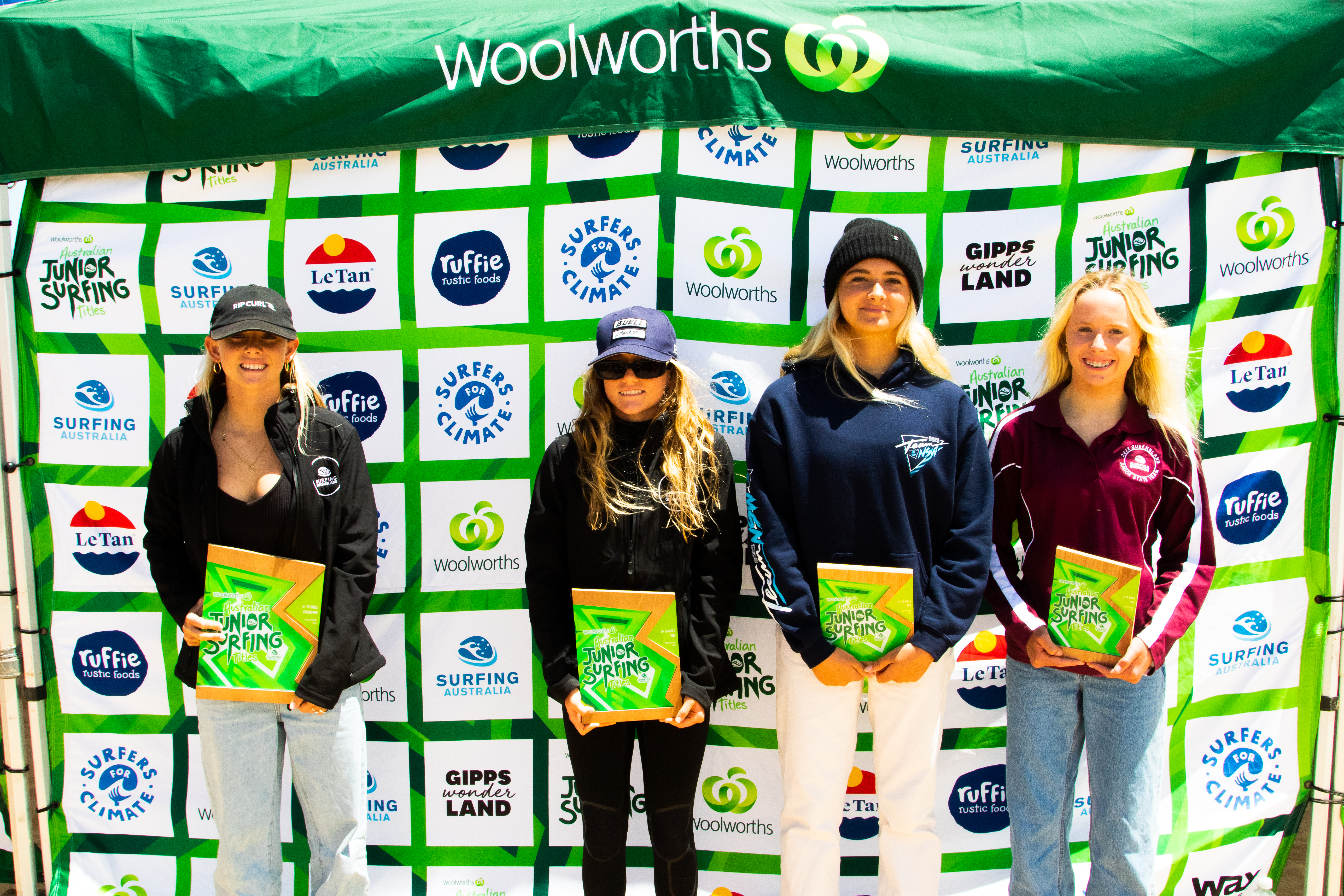
U16 Women
U14 Boys
- Locana Cullen (NSW) - 10.96
- Jaggar Phillips (NSW) - 10.50
- Hunter Sutcliffe (NSW) - 10.11
- Cruz Uros (WA) - 8.58
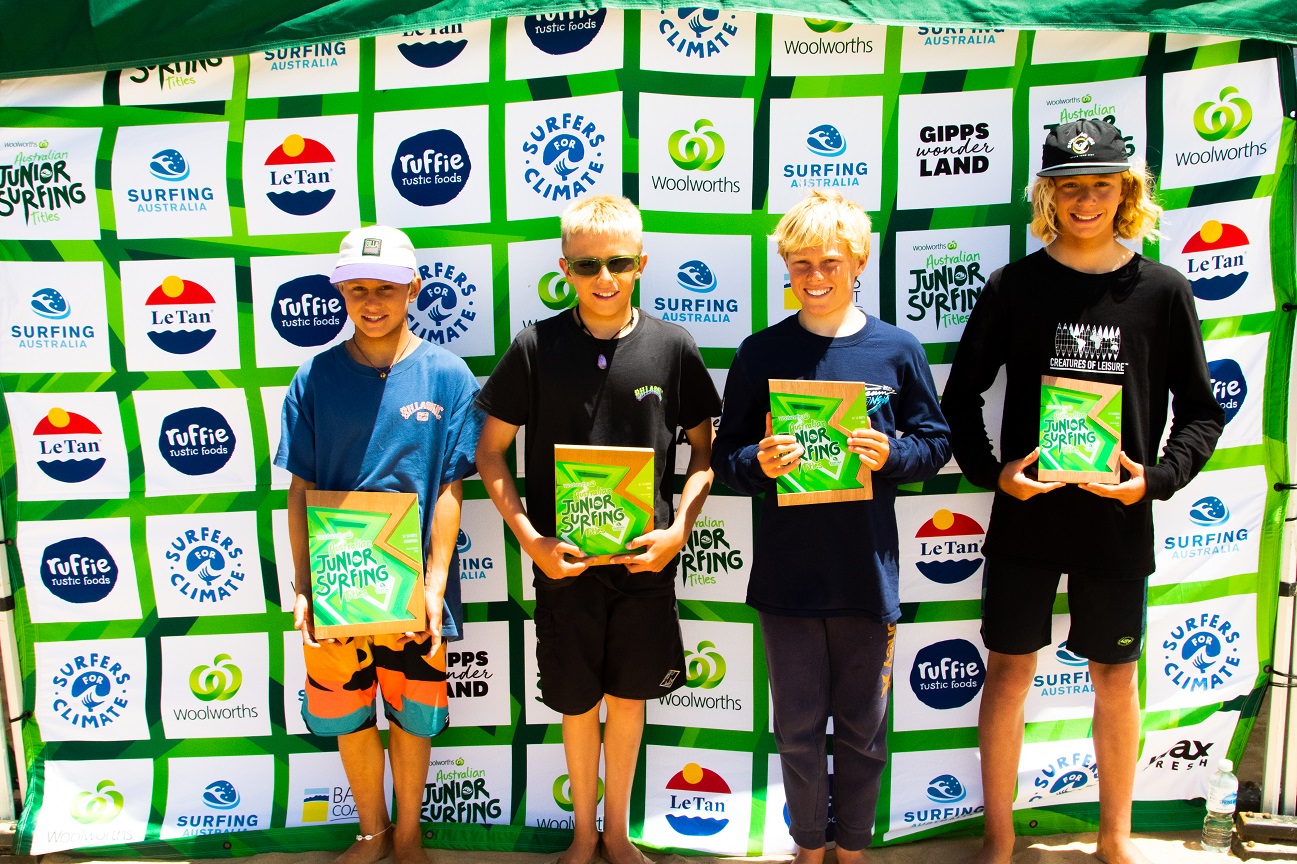
U14 Boys
U14 Girls
- Eliza Richardson (QLD) - 17.88
- Savannah Rielly (QLD) - 10.38
- Rose Holland (VIC) - 8.88
- Lani Cairncross (NSW) - 6.48
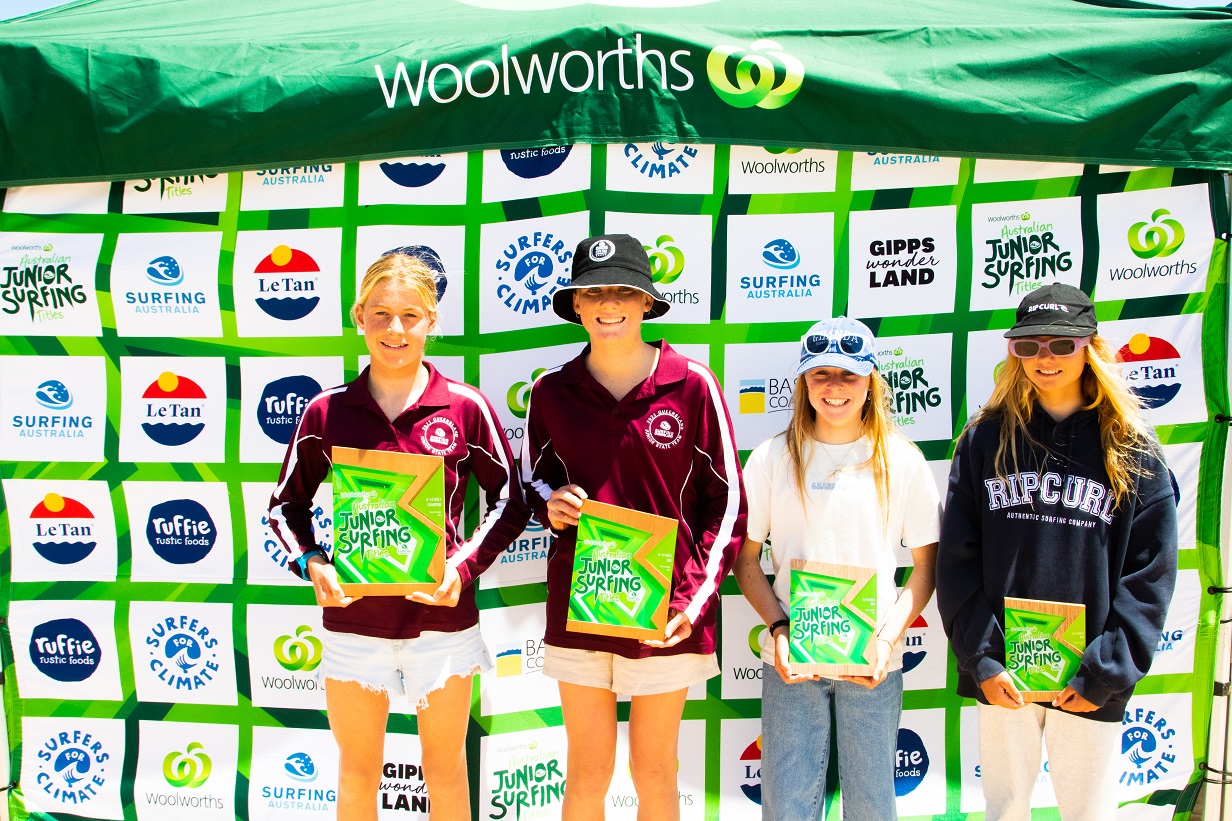
U14 Girls
Surfing Australia special awards:
Duke Kahanamoku award: Maverick Wilson
Isabel Letham award: Willow Hardy
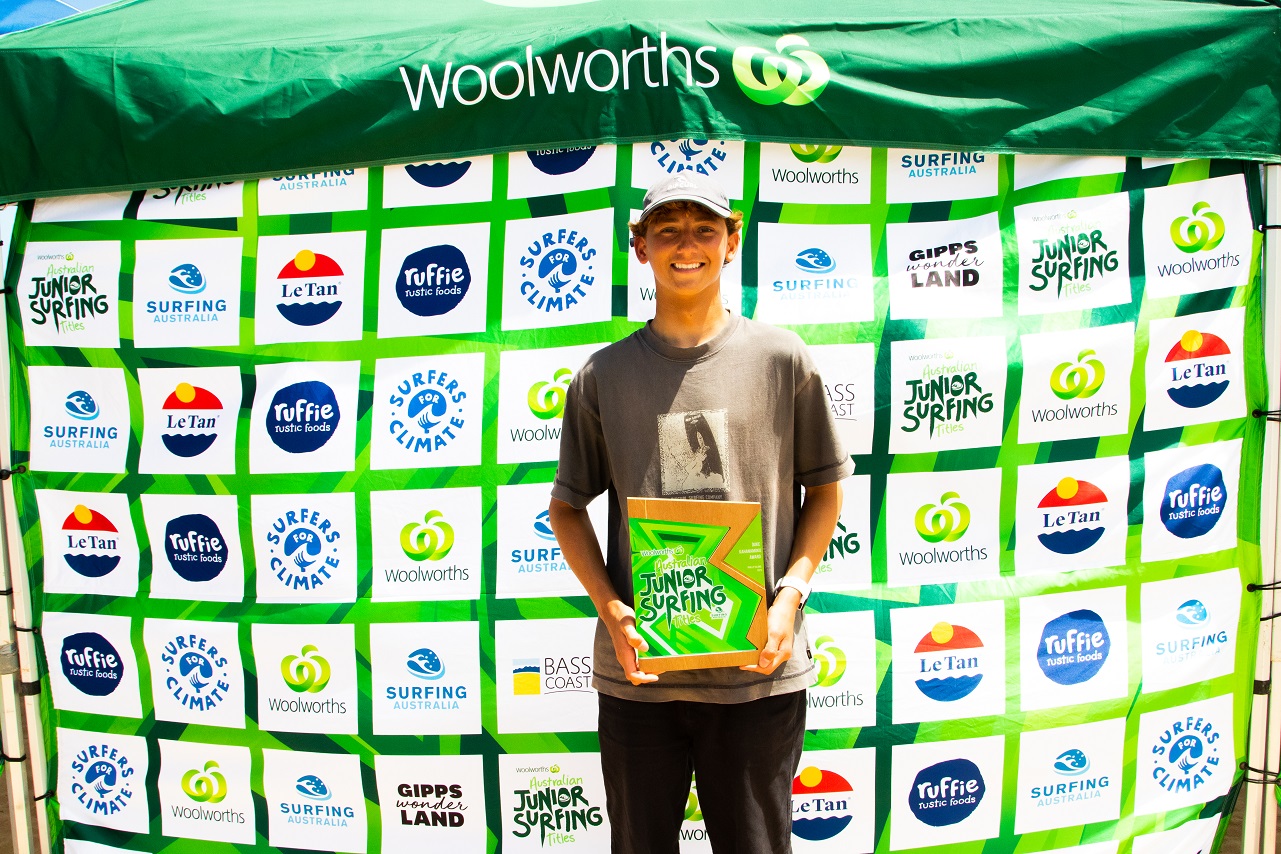
Duke Kahanamoku award: Maverick Wilson
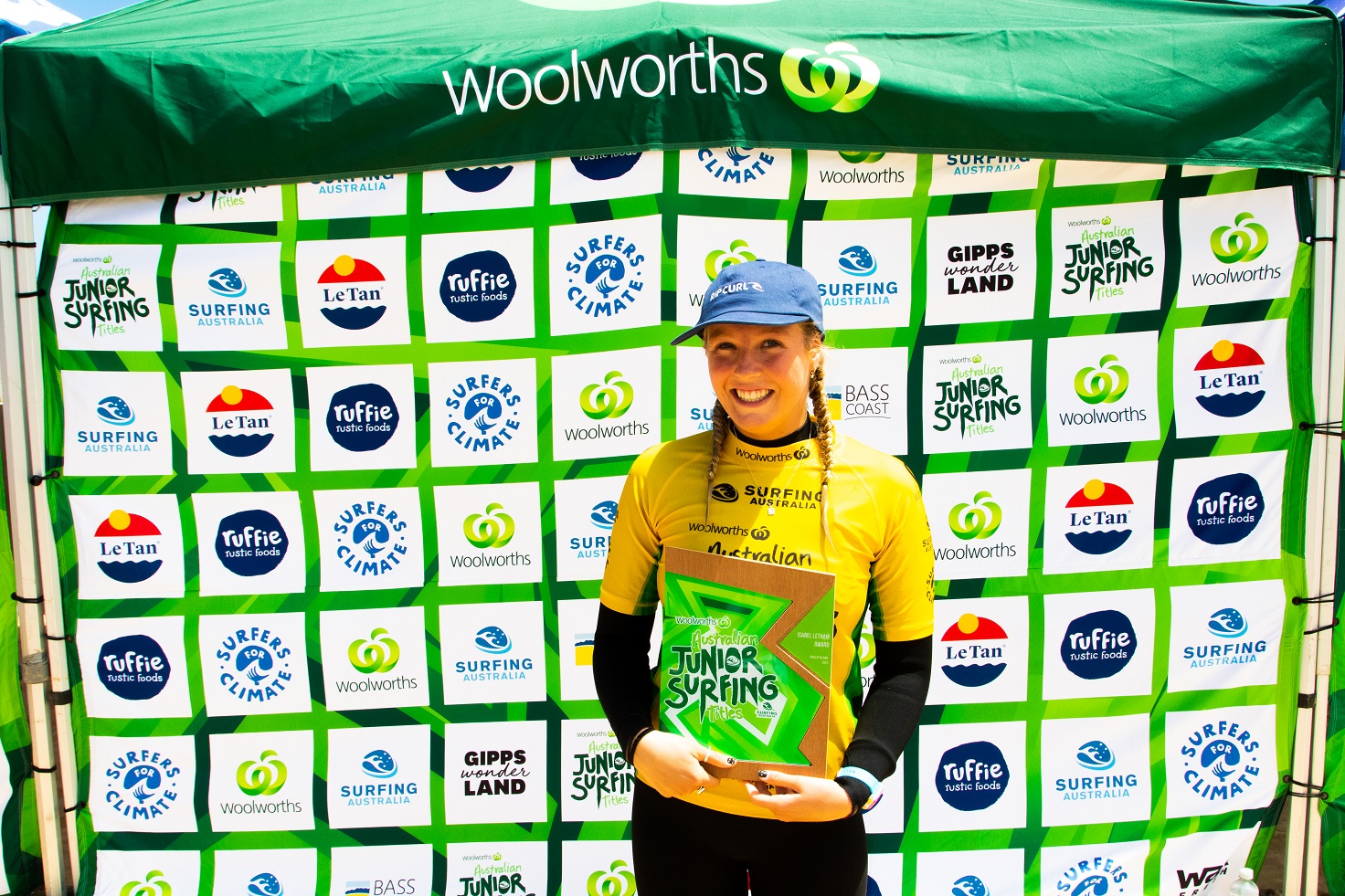
Isabel Letham award: Willow Hardy
Champion overall state (determines seeding for 2024):
- 1. QLD
- 2. WA
- 3. NSW
- 4. VIC
- 5. SA
- 6. TAS
Find all the results on LiveHeats.
More information on website HERE.
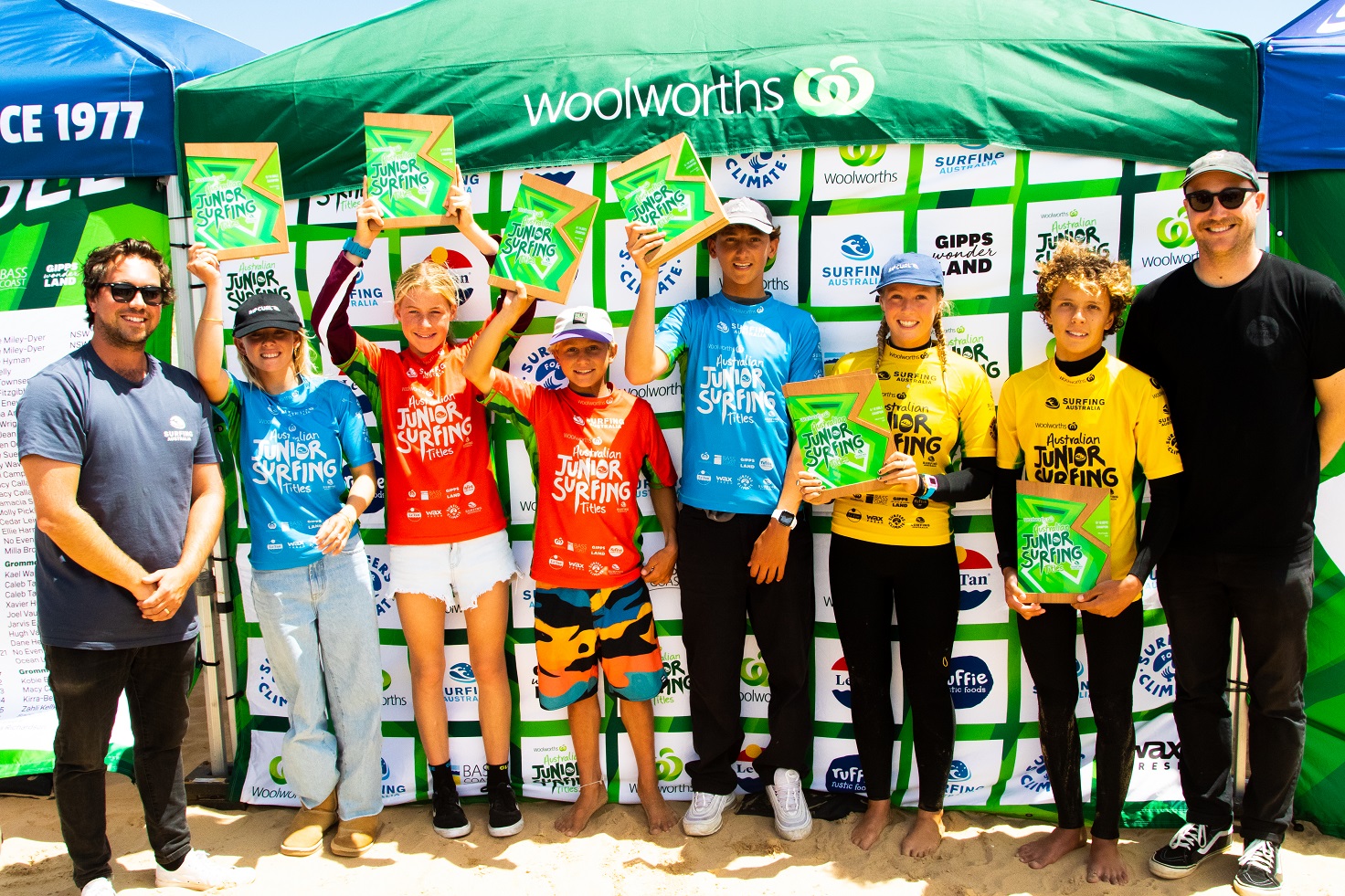
About the Woolworths Australian Junior Surfing Titles
The Woolworths Australian Junior Surfing Titles encompass individual divisions for U14 – U18 Junior Men and Women as well as school surfing divisions for U16 – U19 (Allstars & MR Shield) Junior Men and Women and is the final major counting event on the National Junior Rankings, awarding 10,000 points to every age division winner.
Surfing Australia would like to acknowledge the Bunurong people as the traditional owners of the land on which the competition will be held and we pay our respects to elders, past, present and emerging and thank them for the opportunity.
The event is supported by major partner Woolworths, presenting partner Surfers for Climate, media partner KommunityTV and supporting partners Le Tan, Ruffie, Wax Fresh, Destination Gippsland, Bass Coast Shire Council and Surfing Victoria.
Lifesavers Issue Schoolies Safety Message
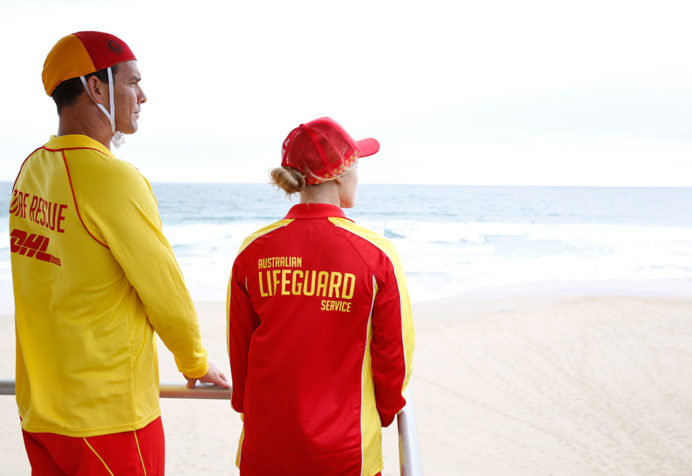 With Schoolies celebrations set to officially kick off on Saturday 18 November, surf lifesavers are reminding potential revellers that alcohol, drugs, and the ocean do not mix.
With Schoolies celebrations set to officially kick off on Saturday 18 November, surf lifesavers are reminding potential revellers that alcohol, drugs, and the ocean do not mix.- Only swim at a patrolled beach, between the red and yellow flags
- Don’t swim under the influence of alcohol or drugs
- Never swim at night
- Ask a surf lifesaver or lifeguard for advice
- Look after your mates, and know where your group is while in the water
- Call triple-zero (000) to report an in-water emergency
Opportunities:
2024 Youth Parliament NSW Applications Now Open
The next generation of youth leaders is invited to apply to participate in the Y NSW's Youth Parliament program in 2024 with submissions now open.
Young people in Years 10, 11 and 12 (or equivalent age) in all 93 NSW state electorates are invited to express interest.
The Y (formerly YMCA) Youth Parliament provides a unique platform for individuals to actively participate in the democratic process and advocate for issues that they are passionate about.
The Y NSW is calling on young people from across the state to get involved. No experience is required, and people from diverse backgrounds are encouraged to apply, with financial sponsorships open to Aboriginal and Torres Strait Islander people, people living with a disability, individuals who identify as LGBTQIA+, those experiencing financial hardship, living in out-of-home care or rural areas, and refugee and asylum-seekers.
"At the Y, we believe in the power of inspired young people and Youth Parliament offers the opportunity for our youth to learn about the parliamentary system, develop critical thinking and public speaking skills, and engage in constructive debates about issues that matter to them and their communities," explained Executive Director/Interim CEO of the Y NSW Prue Warrilow.
"Participants will have the chance to draft, debate, and advocate for mock youth-focused legislation, gaining invaluable insights into the workings of government and policy development.
"Young parliamentarians also participate in a training camp in April and a sitting held in July in NSW Parliament next year. The Y then works actively to coordinate opportunities for the participants to present their Youth Bills to Ministers and other community leaders for consideration," continued Ms Warrilow.
Youth Parliament has supported more than 1,000 participants over the last decade with 97 per cent of participants surveyed saying they felt more empowered to advocate for issues in their local communities. Testament to the value of the program, former Youth Parliamentarians have gone on to become Members of Parliament and community leaders of influence and return to the Youth Parliament program as guests and mentors.
"We are particularly excited to welcome and encourage participation from young leaders of diverse backgrounds and those living in rural and remote communities, whose unique perspectives and experiences play a crucial role in shaping the discussions and policies at the Youth Parliament," added Ms Warrilow.
"Their active engagement and representation are vital in ensuring that the voices of all youth, regardless of location, are heard and considered in the decision-making processes that will affect our collective future," she continued.
17-year-old Cooma local Josh Abrokwah represented the Snowy Manaro region in the 2023 program and worked on a bill that addressed issues faced by migrants relocating to rural areas. Josh said he hopes the experience will enhance his academic career ambitions in international relations and praised the program for providing "activities such as mock debates, the chance to better our public speaking skills, and develop our parliamentary knowledge".
17-year-old Parramatta local, Rachel Lao was a 2023 Youth Parliament participant and is passionate about gender quality. Rachel was part of the NSW 2023 Women's Committee who put forward a bill to support mothers' reintegration into the workforce after maternity leave.
"The Youth Parliament program provides the unique opportunity to not only connect with people who have various perspectives, but who are willing to debate diplomatically about social issues," explained Ms Lao.
"I think that it's really encouraging to see the activism of our generation. Youth Parliament teaches participants how to lead and engage in debate that is productive and has the potential to make change.
"The connections and friendships I have made through Youth Parliament this year are invaluable and I know that my peers will be using their voices and actions to make change beyond their involvement in this program," she continued.
To apply to take part in the 2024 Youth Parliament, young people should visit ymcansw.org.au/community-services/youth/youth-parliament/ and submit their application before 9 February 2024.
School teachers and Members of Parliament can also nominate a young person.
NSW Leads The Way In Tackling Digital Skills Shortage
November 29, 2023
Minister for Skills, TAFE, and Tertiary Education Steve Whan has launched the NSW Digital Skills and Workforce Compact.
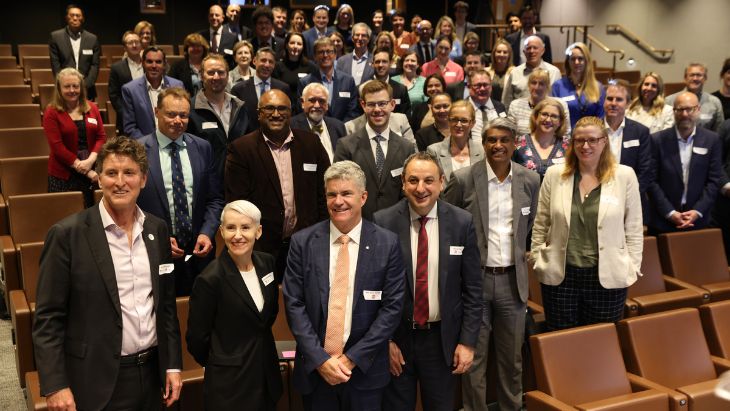
Compact partners gathered at NSW Parliament to officially launch the NSW Digital Compact.
The NSW Government is joining leaders across government, the digital industry, and education and training providers to address the projected shortage of 85,000 digital workers in NSW by 2030.
Today, the Minister for Skills, TAFE, and Tertiary Education, Steve Whan, officially launched the NSW Digital Skills and Workforce Compact at NSW Parliament House.
This collaborative effort involves the participation of 37 Compact Partners, spanning across the highest levels of industry. Combined, Compact Partners have a reach of 1.7 million students and represent over 340,000 digital workers in NSW.
The Compact will promote digital careers across the state to students, parents, and advisors, advancing tech careers in traditionally underrepresented groups such as women, First Nations people, and those residing in regional and remote areas.
The partnership will support industry in developing and implementing new employment pathways, giving new workers on-the-job training experiences to start a long-term career in the digital industry.
The Digital Compact aspires to achieve the following milestones:
- Transform the perception of digital careers, enhancing diversity in the sector, fosteringwelcoming and productive workspaces.
- Collaborate with industry partners to expand and enhance new pathway programs for techroles, including traineeships and work experiences.
- Extend the reach of mentoring and networking programs to engage a more diverse audience.
- Provide increased opportunities for the people of NSW to reskill or upskill in tech-relatedroles.
- Establish a collaborative platform with Universities, TAFE, school curriculum providers, andindustry experts to create a Digital Education Forum dedicated to enhancing tech educationand industry partnerships.
This collaborative effort marks a significant step forward in addressing the digital skills gap in NSW, ensuring a robust and inclusive digital workforce for the future.
For more information on the NSW Digital Compact visit www.nsw.gov.au/education-and-training/nsw-digital-compact
Minister for Skills, TAFE and Tertiary Education, Steve Whan said, “It’s terrific to sign this landmark agreement as the NSW Government unites with industry and education leaders to proactively tackle the looming digital skills shortage.”
“This partnership is a testament to our commitment to shaping a digitally empowered future for NSW and together, we're laying the foundation for a resilient and inclusive digital workforce for the future.”
“The NSW Digital Compact represents a significant opportunity for Government to work with industry to change people’s idea of ‘tech,’ expanding the inclusivity of the sector.”
“We're not just bridging the skills gap; we're building pathways for thousands of students, parents, and advisors to explore and embrace tech careers.”
Chair of the NSW Skills Board and CEO of Microsoft ANZ, Steven Worrall, said, “Research commissioned by the NSW Skills Board shows that NSW is projecting a shortfall of 85k digital workers by 2030”.
“We need to increase opportunities for more people to come into these roles as existing pathways won’t meet this demand. The Compact is crucial to meeting the 85,000 shortfall and ensuring we create a sector that reflects the diversity of NSW. Compact Partners intend to achieve 20% of new hires coming from alternative pathways by 2030.”
“We believe the Compact will help to provide a pipeline of diverse talent to fill these high paying, secure jobs that are being created in NSW’s digital sector.”
NSW Digital Compact Partners:
Partners from the NSW Government, Accenture, ACFIPS, ACS, AIIA, Akkodis, ANZ, AWS, Business NSW, Commonwealth Bank, Future Skills Organisation, the Institute of Applied Technology Digital, ITECA, Linkedin, Microsoft, NAB; Salesforce, Seek, TAFE NSW, Tech Council of Australia, Telstra, Westpac Group, Woolworths Group and all NSW/ACT universities.
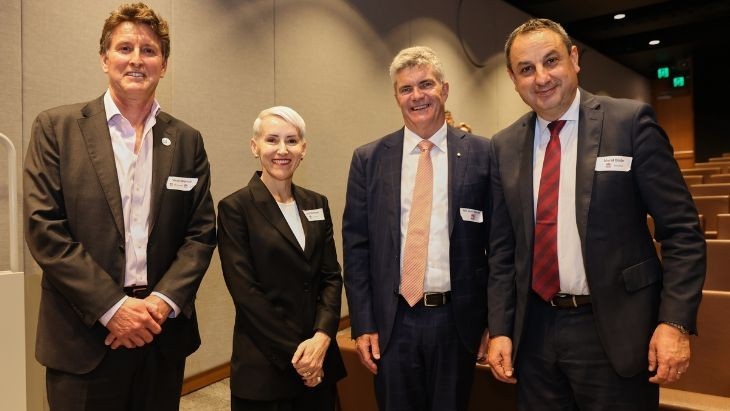
Microsoft’s Steven Worrall, Executive Director of Skills and Pathways Suzie Matthews, Minister for Skills, TAFE and Tertiary Education Steve Whan and NSW Department of Education Secretary Murat Dizdar at the launch.
Career Pathways Highlighted By Drone Race Day
Stepping out of the classroom and into the field, students from across Sydney have experienced the thrills and spills of remotely piloted aircrafts following the University of NSW’s Drone Racing Day – a joint project between UNSW’s School of Aviation and Surf Life Saving NSW.
The Drone Racing Day on 21 November 2023 was part of a larger project facilitating the implementation of a new degree through the respected Sydney-based university – that of a Bachelor of Aviation, majoring in Remotely Piloted Aircraft Systems.
The degree is a first-of-its-kind in NSW, combining theoretical and practice-based learnings- the latter facilitated by SLSNSW’s Australian Uncrewed Aerial Vehicle Service (AUAVS). It will equip students with the skills and knowledge needed to support demand in the ever-evolving field of aviation, laying the platform to produce a new line of commercial pilots, drone operators, and aviation researchers.
Gathering at Swans HQ in Moore Park as part of an activation to announce the degree, a group of Sydney’s best up-and-coming drone pilots were put to the test in a series of race formats.
Students took control of their own DJI Avata drone in timed heats of no more than four, with the quickest racers around the pre-designed track advancing throughout the day.
“This was a great opportunity for us to come here and experience flying the drones,” Knox Grammar student,
“It’s been a lot of fun and interesting to learn something new because we can’t do this sort of thing in school.”
Teacher Victoria King from Ravenswood School for Girls said the students loved getting out of the classroom for their learning.
“The main value is the hands-on experience, applying what they learn in class to the real world, and learning from people from within the field,” she said.
Dr Vanessa Huron from the University of NSW said the day acted as a fantastic tool to launch their new degree into the market.
“We are about a holistic teaching experience, with practical experience underpinned by academia,” she said.
“This has been a great opportunity for students to connect with people who have walked the path they’re currently on and it’s fascinating to see some of the students who have flown before and others flying for the first time, but it’s all sparked from the same idea of a passion or interest that can also be a career.”
Stuart Jackson from the AUAVS said there was a lot of research and time put into running the event.
“It’s almost second nature to some of these kids, seeing what they’re capable of,” he said.
“The day is very different to what we usually do, it’s quite an immersive experience today, and a way to potentially attract people to the potential of remotely piloted aircraft from a different angle.”
TAFE NSW Building Maritime Workforce As Government Commits To Delivering A Strategic Fleet
TAFE NSW Newcastle, Ultimo and Shellharbour
TAFE NSW is playing a crucial role to meet the demand for maritime workers as the Federal Government commits to improving future maritime capability, with an Australian owned and crewed strategic fleet.
The Australian Government has recently committed to delivering a Strategic Fleet of up to 12 vessels, to help Australia build resilience to freight disruptions, while supporting the maritime workforce and sovereign capability.
Australia is the fifth largest user of shipping services in the world – relying on sea transport for 99 per cent of exports. With a shortage of Australian flagged ships and high demand for skilled workers – the Government says the Strategic Fleet would be relied on in times of national crisis and emergency, helping get vital goods to affected regions and making us less reliant on international shipping.
TAFE NSW is addressing the maritime skills shortage by training a pipeline of future maritime workers, with Maritime courses offered from entry level to Advanced Diploma in several locations across the state.
“Port Botany, the Port of Newcastle and Port Kembla are important gateways for trade, with over 4,600 commercial vessels docking in these ports each year,” said Mr Greentree.
“There are a wide range of job roles from deckhands, marine mechanics and engineers to logistic and warehousing coordinators that keep this critical supply chain moving.
“In the areas around Port Botany and in the Newcastle and Illawarra regions, marine transport professionals grew by nearly a third in the last 12 months. At TAFE NSW, people can get ahead of the jobs boom and kick start their maritime career choosing from a range of accredited courses providing in-demand skills and industry licensing to get ahead.”
CEO of Maritime Industry Australia Ltd (MIAL) Angela Gillham was a member of the taskforce. She said the report identified the shortage of diverse maritime workers as a concern for Australia's economic sovereignty.
On the role of TAFE NSW in addressing the maritime skills crisis, Gillham said, “Australia’s maritime training institutions will play a crucial role in skilling the workforce we need to capitalise on the expanding and diversifying activity in this sector.”
"The pipeline of maritime workers they are building is crucial to the success of this Strategic Fleet - and the Australian shipping industry."
"The gradual decline in our sovereign fleet over the past two decades means Australia is almost entirely reliant on foreign shipping. Recent supply chain shocks, natural disasters, and the critical maritime skills shortage have all demonstrated the need for the increased national resilience that an enhanced sovereign shipping industry will bring."
“Australia is a Maritime Nation, but without urgent action to promote a strong sovereign merchant maritime capability, we are not able to capitalise on the natural advantages that this brings."
Commodore Kit Rynd FNI is the Chairperson of the Nautical Institute South East Australia Branch, and said the strategic fleet initiative is a vital investment in Australia’s economic prosperity.
“A maritime nation like Australia needs a vibrant merchant marine backbone, and the Strategic Fleet initiative provides a catalyst for the future of maritime skills in Australia,” he said.
“Our island home and our entire region is dependent on seaborne trade. The pandemic, natural disasters and international tensions have amplified the need for maritime self-sufficiency to keep our inward and outbound trade protected from disruption. East coast wind farms and the strategic fleet investment could be a boon for the Hunter region, leveraging a strong maritime heritage.
“The specialist labour requirements of modern ships warrants investment, and provides a strong, long-term sovereign skillset which is vital to the future of our import and export economies. As one of Australia’s leading providers of maritime training in both coastal and ocean seafaring, TAFE’s role is critical to ensuring the viability of the Strategic Fleet investment.
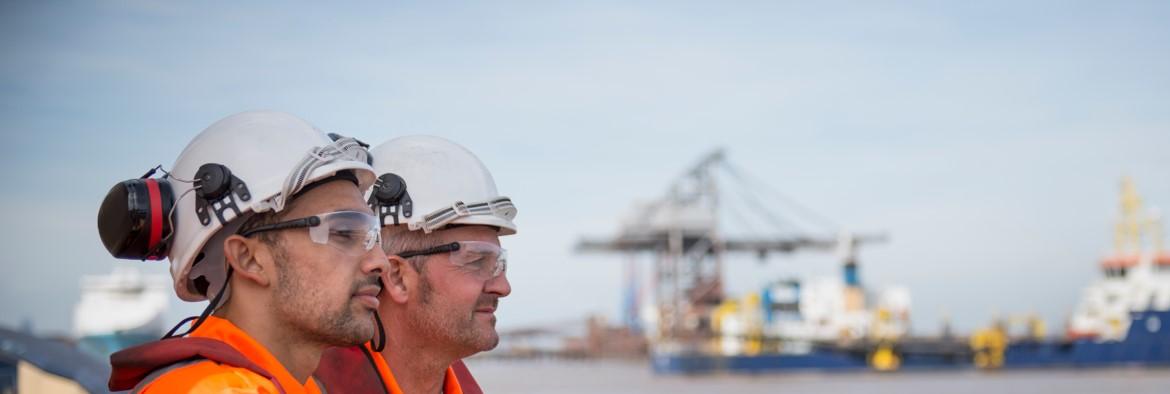
AFP Careers Bloom Under Skilled Recruitment Program
December 1, 2023
The AFP has received a boost to its workforce thanks to the rollout of a new recruitment initiative for skilled neurodivergent individuals.
The Dandelion Program aims to connect talented neurodivergent people, specifically Autistic individuals, with meaningful employment opportunities while combatting skill shortages and creating more inclusive workplaces.
The AFP launched the program in July this year, welcoming six new starters and a neurodiversity consultant to its Covert and Technical Operations (CTO) branch.
This branch is comprised of specialised areas that provide covert and technical support to AFP investigations, including data and digital surveillance collection.
The AFP’s Dandelion Program participants each demonstrated a strong technical aptitude during the recruitment assessment and successfully entered a two-year traineeship with the AFP Digital Surveillance Collection Team.
The roles will allow the new recruits to further develop their already demonstrated innate abilities in software development and data analytics skills to support the AFP’s world-leading digital surveillance and data analytics programs.
The traineeship program is managed by DXC IT, which oversees the selection, recruitment and support of trainees for AFP roles.
Throughout the program the trainees gain vocational experience at the AFP while DXC supports participants with life and work skills.
After the traineeship, the AFP then has the opportunity to employ the members full-time.
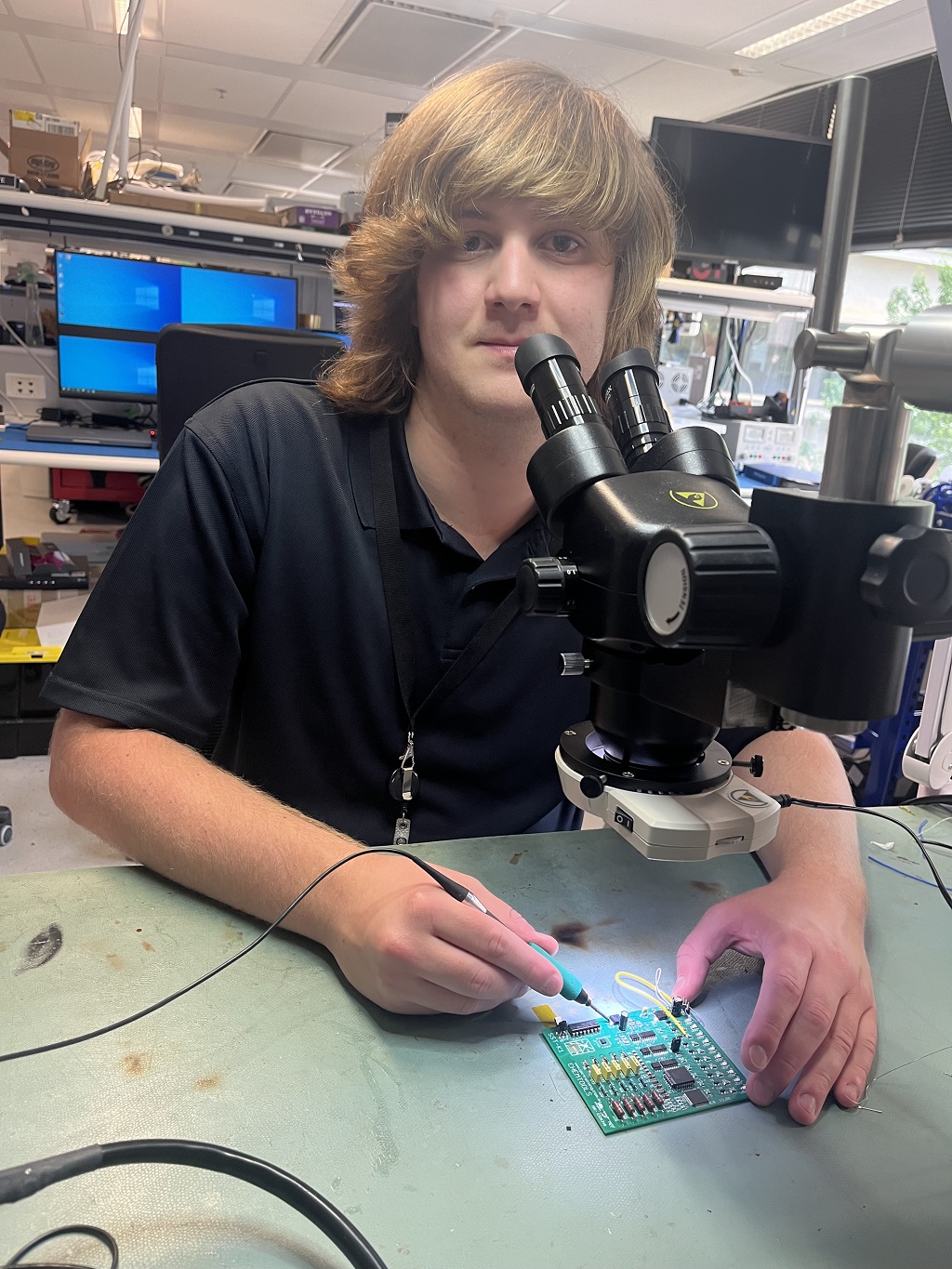
Dandelion Program: Marcus working in the lab
AFP Commander Rob Nelson said that the Dandelion Program had provided a welcomed boost to workforce talent at the AFP.
“The rollout of the Dandelion Program has been a game changer for the AFP. It has enabled us to recruit a range of enthusiastic individuals who are passionate about the AFP and law enforcement, and keeping Australians safe,” he said.
“It’s a fantastic partnership. We have seen incredible success with the new participants who have joined our ranks. This initiative has also provided specialised recruitment and support services for members of the neurodivergent community find fulfilling careers.”
Participants in the Dandelion Program are fully supported by the AFP to undertake their role.
Participants are provided with a Neurodiversity Consultant who assists them with relevant skills to help them adapt to the work environment. This means individuals who are part of the Dandelion Program at the AFP are supported every step of the way.
Through the Dandelion Program, the AFP ensures trainees are offered confidential and customised one-to-one workplace support, guidance, coaching, counselling, and training to navigate the workplace.
The AFP plans to open the Dandelion Program to more commands across the AFP next year.
For more information about the Dandelion Program and the 2024 program visit the Dandelion Program.
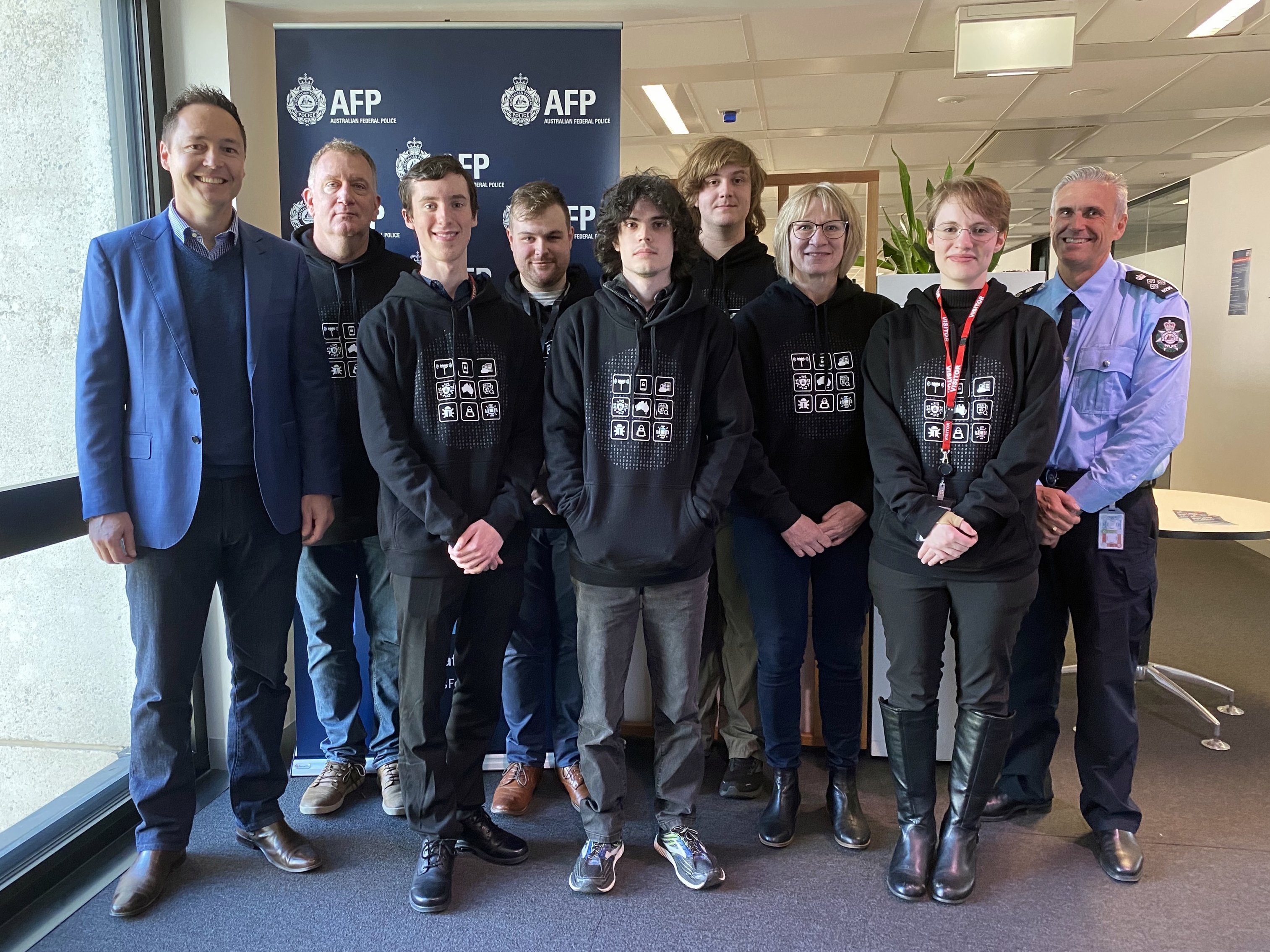
Disability No Barrier To TAFE NSW Student's Career Vision
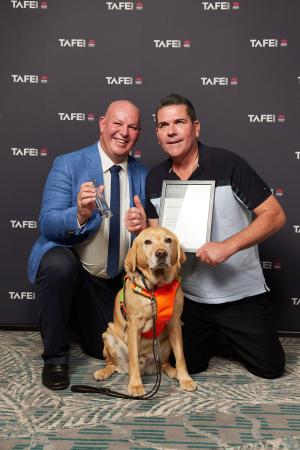 TAFE NSW is delivering a pipeline of skilled disability workers to the sector the National Skills Commission has forecast to grow by 11% over the next three years.
TAFE NSW is delivering a pipeline of skilled disability workers to the sector the National Skills Commission has forecast to grow by 11% over the next three years.
As the NSW Government continues its focus through its 2022-2024 Living Well Strategic Plan on improving access to more community-based services and support and embedding lived experience, TAFE NSW is responding with training that equips students with the skills in these areas and is encouraging learners to incorporate lived experience into their approach to case management.
TAFE NSW Maitland student, Paul Johns, who has been blind since birth, had been involved in the community services industry, but says he wanted to learn more.
“I’ve always been involved in community services. I spend a lot of time volunteering for my local council through their disability action and inclusion group, and I’m involved with local projects supporting accessibility within the community. I have also volunteered for Guide Dogs Australia, which is a cause close to me as a guide dog user.
“I enrolled in a Certificate III and followed this with a Certificate IV in Community Services at TAFE NSW so I could gain the skills and formal qualifications that would allow me to make a meaningful difference in the lives of others,” Paul said.
Access to meaningful employment for people with disability, including people who are blind or who have low vision, is a significant boost for Australia’s economy. It is estimated that if an additional 100,000 people with disability were employed by 2050, it would add one per cent to Australia’s gross domestic product.
Paul, 55, now works as a Disability Support Worker at Delano Corporation and is enrolled in the Certificate IV in Community Services. The 2023 TAFE NSW Excellence Student of the Year said TAFE NSW restored his faith in education.
“School was a terrible time for me – without vision support technology everything was so hard, and I thought I was no good at learning. I left school and worked in manual labour roles that didn’t require eyesight. But I always knew I wanted to make more of a difference and TAFE NSW has shown me that I’m actually really good at learning.
“Living with disability comes with significant challenges, but TAFE NSW has been incredibly supportive of me during my studies. Susie Jeremy is my Vision Support Teacher, who’s been with me since my second day at TAFE NSW, and all my teachers have supported me every step of the way. The TAFE NSW librarians are amazing at helping all the students,” Paul said.
TAFE NSW Manager for Disability and Access Services, Jodie Hoger, is also blind and was instrumental in developing TAFE NSW' first Disability Inclusion Action Plan (DIAP). Ms Hoger said TAFE NSW strives for a more inclusive workplace where employees and learners can live their disability identity authentically.
“Through our DIAP, TAFE NSW is committed to supporting and pursuing career pathways for people with disability. We’re constantly striving towards being a more inclusive organisation, a place where employees and learners are free to demonstrate their disability identity. This visibility demonstrates to people that, through TAFE NSW, they can gain the skills they need to be whatever they want to be,” Ms Hoger said.
Paul is continuing his studies with TAFE NSW with a Certificate IV in Leisure and Health and plans to undertake a Certificate IV in Training and Assessment with the goal of becoming a teacher.
“As someone living with disability, I stand as proof that studying is not out of reach of people with disability. Good services and assistance aren’t found everywhere, but the support I received at TAFE NSW has made my new career path possible,” Paul said.
Australian Lifesaving Team Take Home 2023 German Cup
December 1, 2023
Returning to the German Cup for the first time since 2019, the Australian Lifesaving Team (ALT) have claimed victory after a weekend of outstanding performances across the men’s, woman’s and mixed relay teams. Harrison Haynes’ performance in the men’s 100m Manikin Tow broke the World Record, a huge accolade Haynes that adds to the impressive list of world records broken by the ALT at the German Cup.
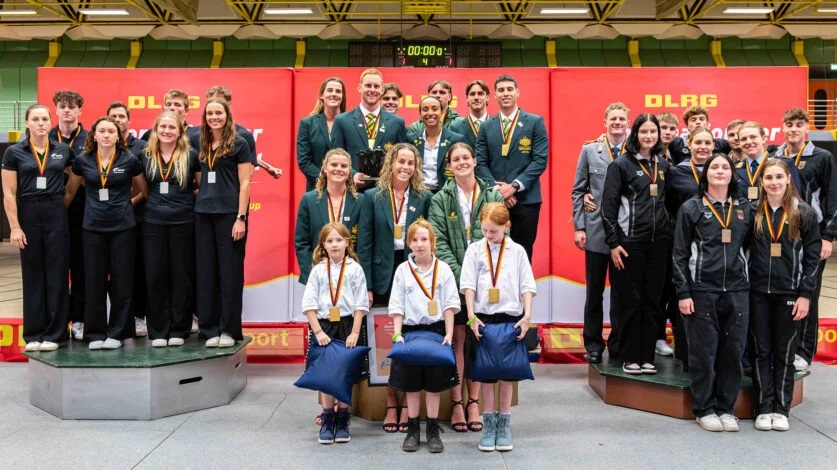
From the opening ceremony and traditional fire stick march in the town square to the after-event celebrations, the atmosphere was a unique mix of cultural heritage, International Lifesaving camaraderie and elite competition.
Team captain Jake Smith says the win is a surreal feeling for the team.
“The team really came together in a short period of time. A lot of them came from the youth environment and to see them fit in pretty much seamlessly into the Australian team was a real special thing to be a part of. The team is more of a family than a team to be honest.”
The win is a welcome boost ahead of the World Championships next year on the Gold Coast, Smith says.
“I think the strong performances this year in both the youth and open environment have seen us have such an amazing year so far on the international stage. Moving forward, it’s just about holding that momentum and that energy and camaraderie into next year.”
The Australian Life Saving Team for the 2023 German Cup
Name Club RLS
Naomi Scott Northcliffe
Chelsea Jones Currumbin Engadine Life Saving Club
Mariah Jones Tweed Heads & Coolangatta Sunshine Coast Grammar
Rachel Eddy Currumbin
Jake Smith Trigg Island Wests Life Saving Club
Harrison Hynes Trigg Island Wests Life Saving Club
Callum Brennan Currumbin Sunshine Coast Grammar
Jacob Loughnan Currumbin The Hills Life Saving Club
Cyra Bender* Northcliffe
Riley Brennan * Currumbin Sunshine Coast Grammar
Kurt Wilson Currumbin Head Coach
John Brennan Currumbin Team Manager
Rachelle King Currumbin Assistant Coach
Supported by Sport Australia and in partnership with Royal Life Saving Society Australia (RLSSA), the Australian Life Saving Team is selected to contest in the biennial World Lifesaving Championships and other national team competitions.
LIFESAVING WORLD CHAMPIONSHIPS 2024
Every two years the International Life Saving Federation (ILS) organises the Lifesaving World Championships, showcasing excellence in lifesaving sports and rescue; attracting the most talented and skilled lifesaving athletes to compete for the title of World’s best.
In 2024, the Lifesaving World Championships will be held on the Gold Coast, QLD from 20 August to 8 September. Click here to visit the official website for more information.
TAFE NSW Fashion Expert Unveils Top Sustainable Fashion Trends This Holiday Season
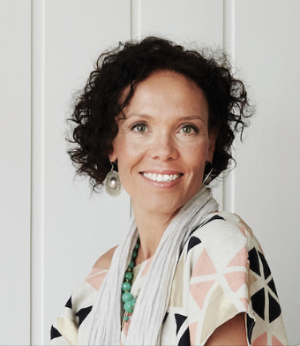 As the festive season approaches, a TAFE NSW fashion expert is shedding light on the top five sustainable fashion trends and eco-conscious choices that are redefining holiday style.
As the festive season approaches, a TAFE NSW fashion expert is shedding light on the top five sustainable fashion trends and eco-conscious choices that are redefining holiday style.
It comes as Afterpay’s ‘Australian Fashion New Era Report’ reveals Australian shoppers are looking to prioritise sustainable fashion, with 40 per cent of shoppers saying that finding sustainably made items is important to them.
Laura Washington, TAFE NSW Head Teacher of Fashion Design said: “There’s been a growing shift to sustainability and circularity when it comes to fashion, due to increasing awareness of the impacts that the fashion industry both locally and globally is having on our planet, as well as the rising cost of living.
Ms Washington shares the top five sustainable fashion trends for this summer:
1. Clothing rentals
Consumers are increasingly taking advantage of the booming fashion rental market and embracing the concept of renting and reusing clothing, rather than purchasing brand new. This holiday season, we’ll see Australians continue to save money and support a circular economy in this way.
2. Artisanal craftmanship
There’s been a resurgence of handmade, locally-produced pieces. More and more people are purchasing locally to not only help promote sustainability, but also support small businesses.
3. Slow fashion
In a shift away from fast fashion, consumers are focusing on quality rather than quantity, and investing in pieces that stand the test of time. We’re also seeing an emphasis on quality, natural fabrics such as cotton, linen, hemp and silk derivatives, but also new bio fabrics made from organic matter such as banana plants and cactus. There is also a shift to recycled fabrics and fabrics that are endorsed by global and authentic certifications.
4. Eco dyeing
Eco dyeing is a technique where colours or natural dyes from plant materials are transferred to fabric. Fusing together style and sustainability, it’s a key trend this season.
5. Upcycled fashion
Upcycling is becoming hugely popular in the fashion industry. More than ever, fashion labels are making use of leftover pieces and existing materials to create their designs, ultimately reducing waste.
“All of our fashion courses at TAFE NSW are taught by teachers with extensive experience in the industry, and the Fashion Design Studio instils in our students the importance of ethical craftsmanship and socially responsible design practices,” Ms Washington said.
“Through quality, hands on training, our students gain the job-ready skills they need to succeed as a designer, while contributing to a more sustainable and responsible fashion industry,” Ms Washington said.
Entries Open For Aussies 2024 On The Sunshine Coast
Entries for the 2024 Australian Surf Life Saving Championships (The Aussies), the pinnacle event on the surf lifesaving sports calendar, are now open with entries numbers expected to exceed 6,500.
Queensland’s Sunshine Coast will host the largest surf sports carnival in the world next April (13-21) with local Surf Life Saving Club’s Alexandra Headland, Maroochydore, Mooloolaba and Coolum all hosting the more than 500 beach and water events across Youth, Open and Masters age categories.
Surf Life Saving Australia’s Sport Manager Wayne Druery says the event promises to be bigger than 2023, particularly with the inclusion of some new events.
“The Australian Surf Life Saving Championships is the pinnacle for surf sports athletes and something that competitors, club members and families look forward to every year,” said Druery.
“It is a time when the surf lifesaving community comes together to test their surf and rescue ready skills, as well as catch-up with friends from all around the country.
“We are excited to announce that for the first time, we will be offering dedicated Adaptive Surf Sports events for competitors with a disability. These events have been designed following an extensive consultation process over the past two years, and as part of Surf Life Saving Australia’s ongoing commitment to diversity and inclusion.”
Ocean Events including ski, swim, board and ironperson will be held at Maroochydore, surf boat and lifesaving events will be at Alexandra Headland, board riding at Coolum with Mooloolaba hosting the ocean swim and beach events.
Early Bird entries close February 11. Standard entries close 31 March.
Entries are open via the SLSA Sports Event Management System (SEMS).

Tram Ride Through Sheffield, 1902
School Leavers Support
- Download or explore the SLIK here to help guide Your Career.
- School Leavers Information Kit (PDF 5.2MB).
- School Leavers Information Kit (DOCX 0.9MB).
- The SLIK has also been translated into additional languages.
- Download our information booklets if you are rural, regional and remote, Aboriginal or Torres Strait Islander, or living with disability.
- Support for Regional, Rural and Remote School Leavers (PDF 2MB).
- Support for Regional, Rural and Remote School Leavers (DOCX 0.9MB).
- Support for Aboriginal and/or Torres Strait Islander School Leavers (PDF 2MB).
- Support for Aboriginal and/or Torres Strait Islander School Leavers (DOCX 1.1MB).
- Support for School Leavers with Disability (PDF 2MB).
- Support for School Leavers with Disability (DOCX 0.9MB).
- Download the Parents and Guardian’s Guide for School Leavers, which summarises the resources and information available to help you explore all the education, training, and work options available to your young person.
School Leavers Information Service
- navigate the School Leavers Information Kit (SLIK),
- access and use the Your Career website and tools; and
- find relevant support services if needed.
Word Of The Week: Reminisce
Verb
1. indulge in enjoyable recollection of past events. 2. to talk or think about things that happened in the past.
From 1829, "to recollect," a back-formation from reminiscence. Meaning "indulge in reminiscences" is from 1871. Reminisced. Reminiscing as a verbal noun, "action of remembering," by 1891.
From reminiscence (noun); 1580s, "act of recollecting," from Old French reminiscence (14c.) and directly from Late Latin reminiscentia "remembrance, recollection" (a loan-translation of Greek anamnesis), from Latin reminiscentem (nominative reminiscens), present participle of reminisci "remember, recall to mind," from re- "again" (see re-) + minisci "to remember," from root of mens "mind" (from PIE root *men- "to think").
The meaning "a recollection of past incidents, events, conditions, etc. within one's personal knowledge" is attested from 1811; especially, in plural, "the collected memories and experiences (of someone) in literary form." The 17c. also had reminiscency "faculty of reminiscence."
If you reminisce about something from your past, you write or talk about it, often with pleasure.
Around this time of year there are get togethers with old and new friends and at times, an end-of-year review we may undertake at both a professional, academic or personal level in the lead into Christmas and New Years. It's a way to count our blessings, areas of achievement and mistakes we've made, and what was learnt from them, before moving forward.
It's a way to think about what you achieved throughout the year and what you want to improve next. Your self-assessment is a chance to be your own advocate. Be sure to include specific examples of any skills learned or goals met, and great memories like that dawn you witnessed, or that surf you had when the swell was breaking just right. It's also good to remember all your many small kindnesses to others; the small smile or good deed may not seem like much to you but may have made the day of the person who received it.
Ultimately; be kind to yourself - we all muck up, we all fall over at times, even without the inherent clumsiness many of us have as personal traits - we're all the same. Summer and end of year get togethers and celebrations are a time for being with those you love and being kind to them too - they are a great time to reminisce about all that has happened in the past that ahs been great that has built and is building the wonderful person you already are. It is count your blessings time, and think about what you want to learn and achieve next year - even if that's as simple as not burning a cake or getting that skateboard trick right, or reading a whole book.
One for all of you:
Coming Home
From Village Green, 1991, by A J Guesdon
Will moved further south, into where the valley was broader across its base, and the banks rose sharply to east and west, their trees thick old tangles of the forest giants. Will moved upwards and east as if some other part of him had decided that this is what he was going to do. He moved upwards to the old way along the ridge his father and grandfather had run with. He smelt the wolfs’ breath, warm, parsley like the deeper places in the duulff woods, somewhere below him. It rose through the breath of the trees and made clearer the place around him. The dapplings, where shade was trunk and thicker grasses becoming bush, and air of weather mingled with air of forest being became a presence and companion that ran with him.
Will smiled down to the wolf moving up towards him then turned to his other side, and sensed another wolf, and a bear, and three elk moved in the forest. He sniffed towards this other wolf, his heart speaking his father’s name in asking. This sounded in soulspeak, as though he was speaking out loud the tone of his fathers’ heart. An answer of some kind seemed to come from the wolves, and Will moved forward, clambering around, and then walking straight backed beneath his elders’ trees. He felt his breath take in and pant out some of the high trees air, only when it came back out of Will this air was both green and bright clear blue, was herbs, as are all grasses, and the seasons of the airs of Mollhull.
He began walking in the Rhythms towards a valley his father had tollened great dreamsong of, taking the blue yellow sun as the marker of right and left of his heart. He turned before the way moved too far eastwards, turned for another look at his valley, and stood on the path looking north and then up at the trees.
His heart sang this song to his place....
‘My elders’ trees are older now, they stand very tall... they stand marking the way. My elders’ trees are giants now... they tend the flowing of the ways.
My elders’ trees are thousands of years old, mere children of a few hundred years gather in their fold. Among them are some who are older, and ageless in green and leaf. Their green wing sweeps low to touch grace to my cheek.
I stand here among them where my grandmother stood. I gaze like she did at how they shape the hills.
My elders’ trees are so young now. My elders’ are trees.
And I came from where their waves met with, and mingled with, those of the seas.
I am from blue and from green,
Which makes me liquid fire, within this muddied skin,
And breath, Breath of trees.’
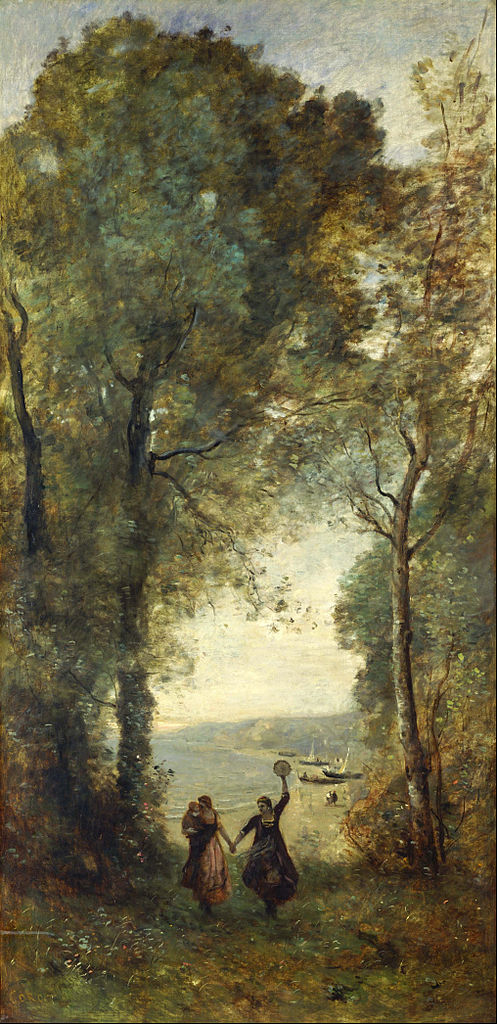
Reminiscence of the Beach of Naples by Jean-Baptiste Camille Corot (1796–1875)
Controversial claims about extinct humans are stirring up evolution research. Here’s how the mess could have been avoided
Mike W. Morley, Flinders University; Andy I.R. Herries, La Trobe University; Anna M. Kotarba-Morley, University of Adelaide; Renaud Joannes-Boyau, Southern Cross University, and Vito C. HernandezIn June, researchers led by palaeoanthropologist Lee Berger published sensational claims about an extinct human species called Homo naledi online and in the Netflix documentary Unknown: Cave of Bones. They argued the small-brained H. naledi buried their dead in Rising Star Cave in South Africa more than 240,000 years ago, and may also have decorated the cave walls with engravings.
If true, this would be an astonishing new entry in the annals of human evolution. But many scientists – including ourselves (the authors of this article, along with Ian Moffat at Flinders University in Australia, Andrea Zerboni at the University of Milan in Italy, and Kira Westaway at Macquarie University in Australia) – are not convinced by the evidence in the three online articles.
The peer reviewers of these articles and the journal editor found that the evidence was “inadequate” and suggested a comprehensive list of changes that would be needed to make the articles’ argument convincing. More recently, a strongly worded, peer-reviewed critique by one of us (Herries) concluded there was not enough evidence to support the hypothesis that H. naledi carried out intentional burials.
The Need For An Analytical Revolution
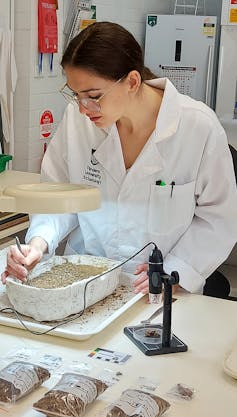
What would “enough evidence” for such claims look like? As we argue in a new comment piece in Nature Ecology and Evolution, there are modern scientific techniques that could provide it.
There are many kinds of evidence for human evolution, such as fossils and artefacts, and the sediment (or dirt) from which they are recovered. There are also many new and creative ways we can use to study this evidence.
We argue that the routine use of these techniques to generate supporting data will help avoid future controversies and increase public confidence in such claims.
Scientific Collaborations
Human evolution researchers deal with very long timescales, often measured in hundreds of thousands – or even millions – of years. Because of this, we often work with geologists and other Earth scientists, and use their ideas and tools to analyse traces of ancient humans.
The analytical techniques of the Earth sciences can provide extremely useful information about the context of fossils and archaeological material.
These techniques are commonly used to study the sediments that the archaeology and fossils are recovered from. These kinds of analyses can be carried out at the microscopic level, which means we can find information about the collected remains that would otherwise be impossible to obtain.
Answers In The Dirt
Better instruments and ways to study dirt means that archaeological science can be used to understand the processes that form archaeological sites and preserve fossils and artefacts in incredibly detailed ways. We can even study evidence at the scale of molecules and elements.
One way of studying dirt that is gaining traction in the field is known as micromorphology. This method involves the microscopic analysis of sediment that surrounds fossils or archaeology.
By studying intact blocks of sediment removed from archaeological trenches, microscopic clues can be pieced together to reconstruct the past environments present at the site and in the local environment.
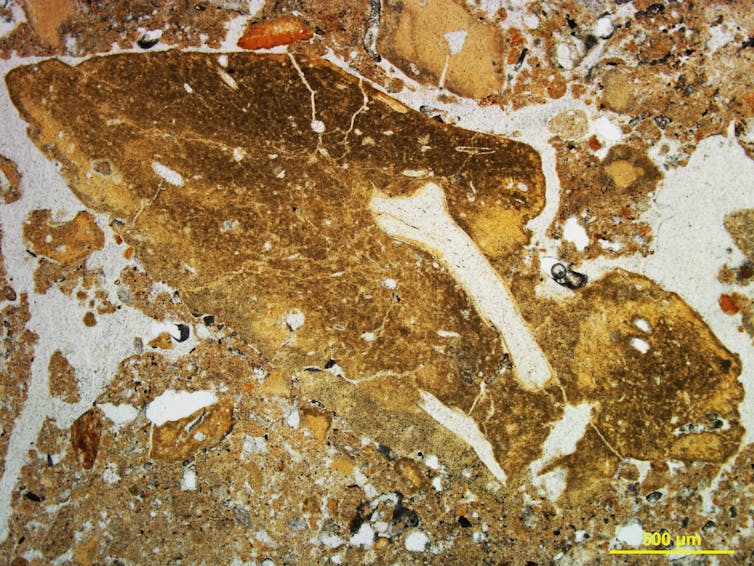
What’s more, the same blocks of sediment can be used for other analyses, such as refining the ages of the dirt and to better understand how archaeological sites form and preserve up until the point of discovery.
What’s In The Dirt? Science Can Tell Us
Micromorphology has proven to be a powerful tool for analysing ancient human remains and burial practices. In 2021, scientists who studied the oldest known human burial (78,000 years ago) used micromorphology to help identify the burial and publish the work in Nature.
Earlier, in 2017, the technique was used to identify hearth features at Liang Bua cave (Indonesia). These small fireplaces were not obvious to the naked eye but under the microscope showed all of the characteristics of burning, including micro-traces of charcoal and ash.
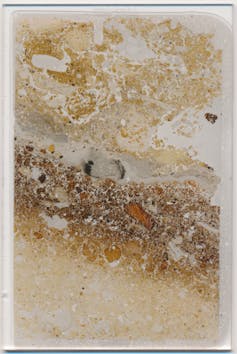
Fossils of H. floresiensis (dubbed “hobbits”) were also found in this cave. However, it turned out the hearths were made by H. sapiens 46,000 years ago, after the last appearance of the hobbits (around 60,000–50,000 years ago).
In the case of H. naledi, micromorphology could have provided evidence for, or against, the idea that the remains were deliberately buried. It might have found traces of a grave cut or subtle differences in the sediment used to cover the body that might not have been obvious during excavation.
In fact, three of the four peer reviewers of the original burial paper suggested micromorphology could have been used to interpret the sediments of the possible grave fill.
What Next?
As scientists working in the field of human evolution, we are thrilled about the Rising Star Cave fossils and the recognition of H. naledi as a new member of our genus, Homo. We trust the team working at the site will soon present new data that convinces us all one way or the other about the question of intentional burial.
On the weight of the currently available evidence we agree with others that there is no compelling case for that particular mortuary practice at the site. However, there are a raft of scientific techniques that could help end the controversy.
It can be incredibly difficult for the public to disentangle facts from fiction. We believe scientists need to be extremely careful about how they communicate their findings to avoid an increase in scepticism towards scientists that can have a major impact across all aspects of modern life.
Aside from the H. naledi burial debate, we would like to see a future where all investigations into human evolution use these scientific techniques from the outset. This might avoid future controversy and find clues that strongly support hypotheses. This would also allow for greater confidence in findings presented to the scientific community and public alike.![]()
Mike W. Morley, Associate Professor and Director, Flinders Microarchaeology Laboratory, Flinders University; Andy I.R. Herries, Professor of Palaeoanthropology, La Trobe University; Anna M. Kotarba-Morley, Lecturer in Museum and Curatorial Studies, University of Adelaide; Renaud Joannes-Boyau, Associate Professor, Southern Cross University, and Vito C. Hernandez, Geoarchaeologist and Postgraduate Research Scholar, Flinders University
This article is republished from The Conversation under a Creative Commons license. Read the original article.
New unified theory shows how past landscapes drove the evolution of Earth’s rich diversity of life
Tristan Salles, University of Sydney; Beatriz Hadler Boggiani, University of Sydney; Laurent Husson, Université Grenoble Alpes (UGA), and Manon Lorcery, Université Grenoble Alpes (UGA)Earth’s surface is the living skin of our planet – it connects the physical, chemical and biological systems.
Over geological time, this surface evolves. Rivers fragment the landscape into an environmentally diverse range of habitats. These rivers also transfer sediments from the mountains to the continental plains and ultimately the oceans.
The idea that landscapes have influenced the trajectory of life on our planet has a long history, dating back to the early 19th century scientific narratives of German polymath Alexander von Humboldt. While we’ve learnt more since then, many aspects of biodiversity evolution remain enigmatic. For example, it’s still unclear why there is a 100-million-year gap between the explosion of marine life and the development of plants on continents.
In research published in Nature today, we propose a new theory that relates the evolution of biodiversity over the past 540 million years to sediment “pulses” controlled by past landscapes.
10 Years Of Computational Time
Our simulations are based on an open-source code released as part of a Science paper published earlier this year.
To drive the evolution of the landscape through space and time in our computer model, we used a series of reconstructions for what the climate and tectonics were like in the past.
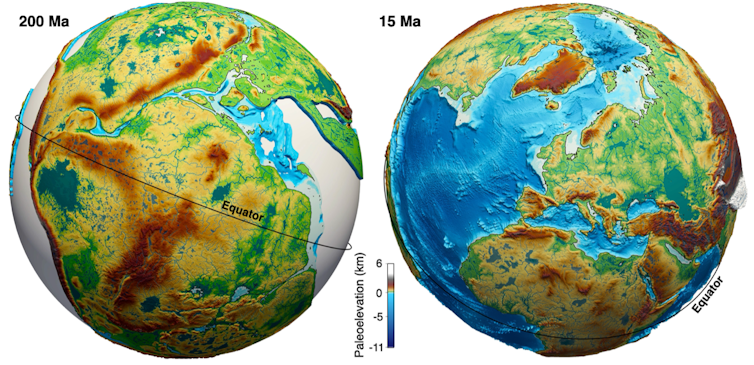
We then compared the results of our global simulations with reconstructions of marine and continental biodiversity over the past 540 million years.
To perform our computer simulations, we took advantage of Australia’s National Computational Infrastructure running on several hundreds of processors. The combined simulations presented in our study are equivalent to ten years of computational time.
Marine Life And River Sediment Were Closely Linked
In our model, we discovered that the more sediment rivers carried into the oceans, the more the sea life diversified (a positive correlation). You can see this tracked by the red line in the chart below.

As the continents weather, rivers don’t just carry sediment into the oceans, they also bring a large quantity of nutrients. These nutrients, such as carbon, nitrogen and phosphorus, are essential to the biological cycles that move vital elements through all living things.
This is why we think rivers delivering more or less nutrients to the ocean – on a geological timescale of millions of years – is related to the diversification of marine life.
Perhaps even more surprisingly, we found that episodes of mass extinctions in the oceans happened shortly after significant decreases in sedimentary flow. This suggests that a lack or deficiency of nutrients can destabilise biodiversity and make it vulnerable to catastrophic events (like asteroid impacts or volcanic eruptions).
Landscapes Also Drove The Diversity Of Plants
On the continents, we designed a variable that integrates sediment cover and landscape ruggedness to describe the continents’ capacity to host diverse species.
Here we also found a striking correlation (see below) between our variable and plant diversification for the past 400 million years. This highlights how changes in landscape also have a strong influence on species diversifying on land.
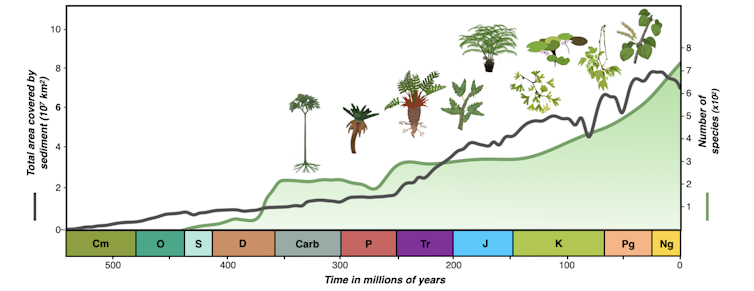
We hypothesise that as Earth’s surface was gradually covered with thicker soil, richer in nutrients deposited by rivers, plants could develop and diversify with more elaborate root systems.
As plants slowly expanded across the land, the planet ended up hosting varied environments and habitats with favourable conditions for plant evolution, such as the emergence of flowering plants some 100 million years ago.
A Living Planet
Overall, our findings suggest the diversity of life on our planet is strongly influenced by landscape dynamics. At any given moment, Earth’s landscapes determine the maximum number of different species continents and oceans can support.
This shows it’s not just tectonics or climates, but their interactions that determine the long-term evolution of biodiversity. They do this through sediment flows and changes to the landscapes at large.
Our findings also show that biodiversity has always evolved at the pace of plate tectonics. That’s a pace incomparably slower than the current rate of extinction caused by human activity.![]()
Tristan Salles, Senior Lecturer, University of Sydney; Beatriz Hadler Boggiani, PhD Candidate, University of Sydney; Laurent Husson, Earth sciences researcher, Université Grenoble Alpes (UGA), and Manon Lorcery, PhD Candidate, Université Grenoble Alpes (UGA)
This article is republished from The Conversation under a Creative Commons license. Read the original article.
‘How is the Great Australian Novel going?’ Not too bad, thanks
Nicholas Jose, University of Adelaide“How is The Great Australian Novel going?” asks a character in Thea Astley’s The Well Dressed Explorer, a Miles Franklin Literary Award winner in 1962.
When the weighty Cambridge History of THE AUSTRALIAN NOVEL (as the title reads on its gold cover) landed on my doorstep I wondered if I would find out. Its editor, David Carter, first among equals as scholar-critic of Australian literature, has assembled 39 essays by leaders in the field, himself included, to chart the journey of the Australian version of this shape-shifting form.
Review: The Cambridge History of the Australian Novel – edited by David Carter (Cambridge University Press)
I have read a lot of Australian novels in my time, and written a few. I decided that if I sat down and read the history from cover to cover with open-minded curiosity, I might see what patterns emerged.
Probably no other reader would do this. The chapters on particular topics within a flexible chronology are designed for standalone use by teachers and students. This is a modular and recursive history, in which the past is revisited through a contemporary lens, with an eye on the future. A master narrative is not desired.
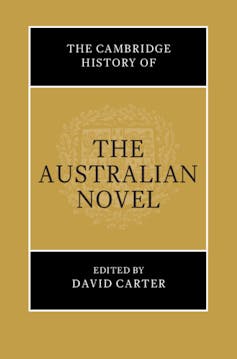
The book has the hallmarks of Carter’s status as respected collaborator, mentor and assessor, and a literary critic grounded in the cultural and material contexts of book production. Most of the contributors are academics in literary studies. Their approaches reflect the trends of the academy in recent years.
Often they draw on research funded by the Australian Research Council, and the work shows those preferences too. For Australian literary studies, that means a turn to digital humanities, notably the collection and analysis of data to develop infrastructure of national significance, such as the AustLit and Trove databases.
It means a concern with “print culture” and the wider environment in which literary works are produced and received. It includes “the transnational turn” – how international perspectives complicate national frameworks – as well as a countermanding focus on locatedness, particularly in relation to climate change. And it means paying heed to First Nations voices in work that passes the “national interest” test.
This is a history shaped, or reshaped, by the glorious advent of literary fiction by Australian Indigenous authors, heralded by Kim Scott’s True Country (1993) and flourishing now. As Iva Polak writes from Zagreb in her essay on “Indigenous Futurism”:
Alexis Wright’s Carpentaria (2006) […] as we know, has changed Australia’s literary landscape.
I was reading my way through this book on either side of the Voice referendum and I could sense the hope as the chapters moved towards the present, culminating in Eugenia Flynn’s remarkable essay “A (Sovereign) Body of Work: Australian Indigenous Literary Culture and the Literary Fiction Novel”. Flynn writes:
an established canon of Australian Indigenous literary fiction can now be affirmed […] that speaks out to the rest of the majority non-Indigenous literary sector, disrupting Australian literary hegemony.
As a current development, this poses a challenge to writing its history. The optimistic wave crashed in the world outside the book as I was reading – more like a tsunami – and settler-colonialism reasserted itself with a No.
Time can be a curveball.
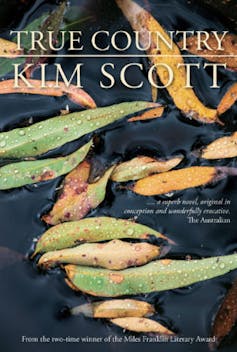
An Elusive Literary Beast
The first third of the book takes us from the colonial period to mid-20th-century fiction. At the halfway mark, there is a good-humoured chapter by Paul Sharrad called “From Bunyip to Boom”, which summarises Australian Fiction from 1955 to 1975. Sharrad concludes that the Great Australian Novel (GAN) had by then “become an unstable narrative […] an elusive literary beast”.
Two-thirds of the way through we reach fiction beyond the Mabo decision of 1992, “when the assumptions non-Aboriginal people […] held about their rights to ownership seemed no longer to be watertight”. With Andrew McGahan’s The White Earth (2004), the discussion moves to work published in the 21st century.
The present is folded into a bending chronology that looks back in order to project to what is only just coming. In “Uncertain Futures: Climate Fiction in Australian Literature”, Jessica White adopts the term “future anterior”, a verb tense, as a mode for imagining near-future scenarios of catastrophe and post-catastrophe.
In other chapters, unexpected juxtapositions reveal persistence across time. Brigid Rooney’s “Unsettling Archive: Suburbs in Australian Fiction”, for example, places Fiona McGregor’s Indelible Ink (2010) alongside Jessica Anderson’s The Impersonators (1980) in an overlapping map of Sydney. Paul Giles cites Alexander Harris’s Settlers and Convicts (1847) as an early case of settler unsettlement, while Lynda Ng takes up the same theme in her concluding chapter on J.M. Coetzee, Behrouz Boochani and “the disquiet generated historically” by both Aboriginal people and non-Anglo migrants “in settler Australian culture”.
A tense sense of “future anterior” runs through this collective history, as writers identify trends in the present that may or may not prefigure an alternative potential ahead. In his introduction, Carter refers to “the imagining into being an antipodean world we will also have to name ‘Australia’.”
Canon Formation And Critique
Carter discusses canon formation and canon critique in his chapter on Australian literary historiography, noting “the ascendancy of academic critics above the men and women of letters dominant” before the 1950s. That situation pertains today. Few of the contributors are creative practitioners or teachers in the cognate discipline of creative writing.
All of the essays are interesting. Some are anxious. Some have flashes of warmth and appreciation, although “great”, as in Great Australian Novel, is pretty much an impossibility. Aesthetic judgements are largely resisted.
A formula emerges, familiar to anyone who has peer-assessed journal articles or research grant applications: fly a theoretical or methodological kite at the start, preferably with an international tail; explore a few carefully chosen case studies as the basis for an argument; conclude briskly with a future-directed uptick. The aim – in key words of approbation – is to “expand” or “recentre” the field.
Carter has argued that Australian literature is as much the creation of Australian readers as it is of Australian writers. Our literature is the totality of the literature we experience, including imports and outside influences, high and low.
It is a powerful idea that I first encountered in the essay “Publishing, Patronage and Cultural Politics”, which Carter contributed to The Cambridge History of Australian Literature edited by the late Peter Pierce in 2009. It manifests here in an interest in all aspects of book production and literary circulation, including sales and accounts.
This history is many-faceted and holistic. In a chapter on publishing, Roger Osborne quotes Carter describing the Australian novel as a “commodity, industry, professional or aesthetic practice, ethical or pedagogical technology, leisure, entertainment, policy object and national space”.
This catch-all conception boils down to a grand definition: the novel in Australia is “a central cultural technology” that “insists on its storytelling power for a wide range of ethical, political and cultural issues, even where written within the bounds of a popular genre form”.
The description recognises the prestige of the novel, whether as bestseller or rarefied prizewinner, while implicitly accepting that everyone has a novel in them and anyone can write one.
Katherine Bode contributes to a chapter on how the meaning of the Australian novel is changed by the information now available in the AustLit database and To be continued: The Australian Newspaper Fiction Database. Her research shows we need “to look beyond the book” to media such as the periodical press that generated novels in episodic, ephemeral form to understand the grassroots development of fiction in 19th-century Australia.
We need to look beyond the cities for literary communities too, as Emily Potter and Brigid Magner argue in their chapter on the “regional novel”: they recognise that “the region as it creatively emerges is a co-production of writer and reader”.
Missing Pieces Of The Puzzle
Yet something like a canon lingers, to judge by the clusters of respectful mentions. After a handful of 19th-century novels, there are Henry Handel Richardson, Christina Stead, Patrick White, Randolph Stow, David Malouf and, soaring above them with nearly double the number of references in the index, the long-time-comer Alexis Wright.
There are omissions, including some of the best novels and novelists in my opinion. But that’s what happens. A puzzling virtual omission is Helen Garner, who has produced a string of successful novels in a career that has been a constant argument with fiction. Is she anathema to the academy? Or can no one find anything interesting to say about Australia’s great precursor of the autofiction that has swept the world?
At the other end of the time frame, Henry Lawson looks like another diminished figure, as Paul Eggert recalibrates the “nationalist myth of the 1890s”. There is not much place for short fiction in this history. Short story writers, from Mena Abdullah to Nam Le, don’t appear.
Among my highlights are Philip Mead on mining trilogies, including The Fortunes of Richard Mahony (1917-29); Nicole Moore’s radical recovery of postwar realism, including Ralph de Boissière’s Crown Jewel (1956), set in Trinidad; the attention Meg Brayshaw pays to M. Barnard Eldershaw’s Tomorrow and Tomorrow and Tomorrow (1947); Elizabeth McMahon on Randolph Stow’s To the Islands (1958); Brigid Rooney’s spotting of the “purple theme” of “the little sarsaparilla vine” that emerges “from the darker undertones” in Patrick White’s The Tree of Man (1955); and Jessica White on Dyschronia (2018) by Jennifer Mills.

Emmett Stinson does a compare-and-contrast of David Malouf and Gerald Murnane, finding that “Malouf’s success is in no small part linked to the way in which educational institutions have assigned his works over the years”. And in “The Novel Road to the Global South”, Sascha Morrell takes a scalpel to celebrated works by Peter Carey and Richard Flanagan to diagnose an Australian condition: “a peculiar, backward-looking nostalgia for Australia’s accustomed ‘underdog’ status”.
Elsewhere the issue of “inherent racism” is noted in passing in Australia’s bestselling invasion narrative for Young Adults, John Marsden’s Tomorrow series (1993-99).
Multilingual Writing?
Emily Yu Zong writes in “The Making of the Asian Australian Novel” that the recent translation into English of Wong Shee Ping’s The Poison of Polygamy – a novel serialised in Melbourne’s Chinese Times from 1909 – “has unveiled the earliest Chinese Australian novel and a neglected multilingual lineage of Australian literature”.
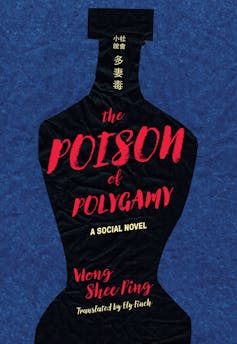
The question of translation comes up in discussion of Legendary Tales of the Australian Aborigines (1930) by Ngarrindjeri man David Unaipon, in Jumana Bayeh’s consideration of diasporic writing in “The Arab Australian Novel”, and in relation to Behrouz Boochani’s hybrid work No Friend but the Mountains, originally written in Farsi.
Otherwise fiction in languages other than English barely breaks the surface. That limitation occludes Iwaki Kei’s remarkable novel Farewell, My Orange (2013) about African migrants to country Australia, which has been translated from Japanese by Meredith McKinney. Multilingual writing seems to be one part of the “future anterior” that we are not quite ready for.
Literary history can take many forms. I missed the most basic of those: biography. While writers are identity-checked where possible (“Christos Tsiolkas, a second-generation gay Greek Australian man”), few contributors are interested in explaining a writer’s career path.
Top marks then to Beth Driscoll and Kim Wilkins, whose chapter on fantasy, crime and romance fiction provides empirical information on how such stars as Kerry Greenwood and Peter Temple did what they did, and names those, including agents, editors and publishers, who were part of the process. They shout out to the short story as crucial to the networks that underpin the success of Australian fantasy. Fiction is also a form of sociability.
What are novels for? One answer would be that they are for academics to find interest in and make researchable and teachable. They are a means to an important end: part of how “contemporary Australian culture is valued and assessed”, in the words of Imelda Whelehan and Claire McCarthy in a chapter on screen adaptations. David Carter and his team have done a great job of showing how it’s done.![]()
Nicholas Jose, Professor of English and Creative Writing, University of Adelaide
This article is republished from The Conversation under a Creative Commons license. Read the original article.
The Australian Curriculum is copping fresh criticism – what is it supposed to do?
Stephanie Wescott, Monash University and Jessica Holloway, Australian Catholic UniversityThis week a new report said there was a “curriculum problem” in Australia. Education consultancy group Learning First found the science curriculum lacked depth and breadth and had major problems with sequencing and clarity.
While the report said it was not “assigning blame directly to the curriculum”, it also noted since the Australian Curriculum was introduced more than a decade ago, “the performance of students in international […] science assessments has fallen by almost a whole year of schooling”.
Headlines followed about a “shockingly poor” curriculum and “long-term decline” in performance. At the same time, The Australian reported concerns the curriculum does not provide enough guidance to teachers.
While students’ scores on some international assessments have been falling, is it right to blame the curriculum for these trends?
What Is The Australian Curriculum?
The Australian Curriculum is designed for students from the first year of schooling to Year 10.
It sets out:
the expectations for what all young Australians should be taught, regardless of where they live in Australia or their background.
It is made up of eight “learning areas”: English, mathematics, science, humanities and social sciences, the arts, technologies, health and physical education, and languages.
It has been described as a “map” of all the learning a teacher covers in each year for each particular subject.
Importantly, as education experts note, the curriculum was never meant to be prescriptive and nor should it be. Teachers should be able to tailor lessons to particular classes, situations and students.
Who Sets The Curriculum?
It is designed by the Australian Curriculum, Assessment and Reporting Authority, in consultation with teachers, academics, parents, business, industry and community groups. It undergoes a review every six years and all updates are subject to ministerial approval.
Commonwealth and state and territory education ministers first approved the curriculum in 2009. It was designed to reflect the priorities of the 2008 Melbourne Declaration on the purposes and goals of Australian education. For example, “Australian schooling promotes equity and excellence”.
The curriculum has since been updated four times (as recently as April 2022 under the Morrison government) but remains a contested document. Common criticisms include that the curriculum is overcrowded, too complicated, too political and not inclusive enough.
Teacher Shortages And Lack Of Funding
Given the curriculum has to cover so much diverse content and serve so many purposes, criticism is all but inevitable.
While it is important to scrutinise the curriculum, it does not dictate how students learn or the conditions they learn in. So we should not let “curriculum wars” distract us from other issues hurting Australian schools and education.
Australia is in the midst of a serious teacher shortage. In New South Wales alone, 10,000 classes per day are not adequately staffed due to shortages. Teachers are plagued by excessive workloads, abuse and a lack of respect for the profession.
Public schools are also battling dire funding shortages. A report for the Australian Education Union recently found private schools were overfunded by about $800 million in 2023, while government schools were underfunded by $4.5 billion.
This is based on the Schooling Resource Standard, which outlines the minimum funding standard required for schools to respond adequately to their students’ needs.
In chronically underfunded schools with staffing shortages, it is no surprise students’ performance will be affected, regardless of teachers’ efforts – or whatever is in the curriculum.

What Do Schools Actually Need?
The curriculum should be revised, challenged and critiqued to ensure it is responsive to the ever-changing needs of Australian students. We should also hold high expectations for quality education in Australia.
But blaming the curriculum for underperformance is a distraction from bigger issues that impact student learning.
What schools really need to succeed is adequate funding and a stable and well-supported teaching workforce.![]()
Stephanie Wescott, Lecturer in Education, Monash University and Jessica Holloway, Senior Research DECRA Fellow, Institute for Learning Sciences and Teacher Education, Australian Catholic University
This article is republished from The Conversation under a Creative Commons license. Read the original article.
Australian uni students are warming to ChatGPT. But they want more clarity on how to use it

ChatGPT is one year old today. Depending on who you ask, this technology either spells great doom or great opportunity for education.
With ChatGPT capable of passing graduate-level exams, there have been calls for universities to drastically change assessments, amid concerns it will lead to cheating and students disengaging with their studies.
Some academics and students have also expressed enthusiasm at the potential for generative AI to cut down their workloads and help with learning.
But what has happened on the ground?
We have been tracking the use of AI in Australian universities this year. We did a survey on the first half of 2023. Now we release data from semester two.
More Students Are Using AI
Across the year, we have asked 154 students and 89 academics about their use of AI via an online survey. Of this group, 81 students and 60 academics from Australian universities completed the survey during the second half of the year (June to November).
At the start of the year, just over half of students had tried or used generative AI. In the second half of the year, this had climbed to 82% of students and some of these were were using it in the context of university learning (25%) or assessment (28%).
In some cases, it was suggested or required for assessments, but for most students using it in this way, this was self-directed (85%).
Perhaps as a result of this increased use, students appear to be far more “sold” on this technology now than earlier in the year. Only 30% of first-semester students agreed generative AI would help them learn, 67% of second-semester students agreed with this.
Students reported applying generative AI in lots of ways, including summarising dense and long pieces of text, generating ideas/brainstorming, or to help “test” their own learning (for example, by generating a quiz about a learning topic). One student wrote they use it
to help solve problems (it suggests things that I would never think of).
Another said it is “another pair of eyes” to help them proofread and edit their work.
Students Confident About Limitations
Students also appear to be very aware of the limitations of generative AI. As one respondent wrote:
I love it […] when I am at the beginning of exploring a topic, I find it very helpful. As I dive in more deeply I have to rely on more credible sources of information.
Students consistently noted issues with accuracy. These include “AI hallucinations” (when a tool generates nonsense or something false or misleading), biases and specific limitations. Students also noted generative AI technology is still developing capabilities when it comes to solving and checking complex maths and coding problems.
Since the start of 2023, students have been more confident than academics in their knowledge of AI’s limitations (63% students, 14% academics), this confidence has only grown for students (88%) while academics have barely changed (16%).
This is interesting, given universities have been encouraging academics to support students to understand AI’s limitations.

What Are The Ongoing Issues?
While universities have scrambled to provide overarching policies, students who are using this technology want more specific, practical examples of what they are allowed to do with it.
In the second semester, few students considered the use of generative AI in assessment as “cheating” (22% compared to 72% in first semester). However, many students commented the rules for what is “ethical” versus what is “cheating” are still unclear. One student told us:
I want to comply with the rules […] but it’s not clear what I’m actually allowed to do with it.
Academics in our survey agreed with this sentiment, calling on universities to develop clear guidelines around the use of generative AI.
Students and academics both indicated they felt some universities had put the brakes on generative AI use. For those institutions allowing it, they felt the technology was not being incorporated meaningfully or obviously into teaching and learning. As one academic told us:
You should stop fighting the reality that AI is here to stay. It’s not the future, it’s actually the present […] I just don’t understand why academics are underestimating themselves and continue to be so hostile to the technology.
Students also advised their universities to “embrace it”, “discuss it openly” and noted:
we’ll need to work with it as it will not go away. We can work in a supportive, collaborative relationship with AI.
Will Access Be Equal?
A growing concern for students is the potential for an uneven AI playing field. Some platforms, including ChatGPT, offer both free and paid models, with the latter being more advanced.
As the Group of Eight (who represent Australia’s top research universities) has noted, there is a potential for “disparities in educational outcomes” with this technology – depending on who is able to afford a subscription and who is not.
This is an issue that universities must grapple with as they look towards the future.
Meanwhile, advances in this technology keep coming and will keep redefining the educational landscape. Universities will need to plan and manage how generative AI is used across many different disciplines.
Important considerations include how generative AI could be used to optimise teaching and learning, opportunities for innovations in curriculum, assessment and research and potential uses for technology to support inclusion.![]()
Jemma Skeat, Associate Professor, Director of Speech Pathology, Deakin University, Deakin University and Natasha Ziebell, Senior Lecturer, Melbourne Graduate School Of Education, The University of Melbourne
This article is republished from The Conversation under a Creative Commons license. Read the original article.
Hallelujah, it’s school concert season. A music researcher explains why these performances are so important

Who could have imagined how quickly we would return to pre-COVID routines?
Here we are again, juggling year-end stressors, wondering how we can squeeze everything in. If you have young children, you will likely also have several school concerts to mark the end of the year.
While we want to support our loved ones’ extracurricular activities, perhaps you secretly curse sitting through yet another performance or carols sing-along.
I am a researcher in music education and a conductor of community ensembles. Are these events important? Do they matter at all?
Why Music Matters
The first thing to remember is music really matters. Apart from the joy of making music and gaining a skill, there are many advantages for kids learning music.
Australian music educator and researcher Anita Collins has studied how learning music helps children’s cognitive development.
As she explains, neuroscientists have found the brains of people who studied music look different from those who did not have music lessons:
music education works three areas of the brain at once: the motor, visual and auditory cortices. If we think about it, it’s like a full-brain workout; it’s like our legs, our arms and our torso doing an exercise at the same time. Music education is exercise for the brain.
The long-term impact on the brain is also startling. Research suggests children who undergo music training have better verbal memory, second language pronunciation accuracy, reading ability, reasoning skills, auditory, motor and sensorimotor integration, and executive function.
Other research, surveying more than 112,000 students, revealed those who learn music were more successful than non-musicians across maths, English and science.
Showcasing And Building Skills
But these concerts also have a broader purpose.
At school concerts, students showcase their learning as individuals and in ensembles. This can motivate a child to practise and learn their instrument. The performance itself can build a student’s confidence and skills in other areas such as public speaking, presentation and managing nerves.
When they play in groups, students can often perform better than expected. As a music director of many school (and community) productions, I can attest that something magical happens in the couple of weeks leading to a performance.
A Sense Of Belonging
We know people who play in music ensembles identify a feeling of belonging as a benefit of playing with others.
This feeling can be amplified in year-end concerts where a school community and families gather together. Research shows feeling connected to others or a sense of belonging can reduce feelings of loneliness, alienation or hopelessness.

Connection Beyond Schools
In my broader work, I have also seen how end-of-year concerts can provide important connection and build community at a time of year many find really difficult.
For those who have lost or are separated from loved ones, the festive season can be very stressful and lonely.
But community music can provide a broader social purpose and support network. While conducting the San Francisco Gay Men’s Chorus, I noticed some singers, who were estranged from their families, struggled each December. To help, we filled our schedule with appearances. Being together and connected lifted everyone’s spirits.
In the post-pandemic era, en masse community music-making has exploded with the Pub Choir and Spooky Men’s Chorale attracting thousands of participants. People of all ages buy tickets or volunteer to meet up and learn songs in low-pressure settings such as pubs, sports arenas or outdoors. Here, social and wellbeing factors are emphasised, rather than the quality or expertise of the performance.
More Than Just A Concert
So yes, year-end concerts are another thing to do at an already busy time of year. But they are so important. They can enhance students’ learning and wellbeing and unite communities.
They are also hopefully fun and rewarding.
So let’s vote with our bums-on-seats. Knowing the essential benefits of music to children and society, let’s show up and clap and cheer. Better yet, participate! Your life will be the richer for it.![]()
Kathleen McGuire, Lecturer, Australian Catholic University
This article is republished from The Conversation under a Creative Commons license. Read the original article.
Christmess is undoubtedly one of the best Christmas films to emerge – from anywhere – in recent years
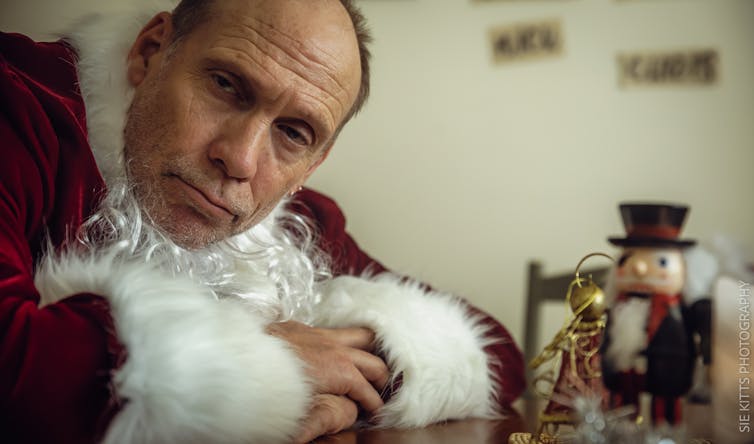
Bona fide Christmas films usually fit into one of the following categories.
There are the sardonic comedies poking fun at the consumerist undertones of the holiday (National Lampoon’s Christmas Vacation, Gremlins). There are the cheesy, schmaltzy Christmas fantasy films (The Christmas Star, Prancer) that strain to impart some of that good ol’ Christmas miracle to the viewer. There are the camp, deliberately kitsch bodgy romps like the Hulk Hogan vehicle Santa with Muscles. And there are the social realist dramas about people just trying to make it through the stress of the period (Almost Christmas).
This is not to mention the numerous Christmas horror films – anti-Christmas films? – that skewer the joy of the holidays with things like axe-wielding Santas (Silent Night, Deadly Night), deranged, obscene phone-calling maniacs (Black Christmas) and evil Krampuses looking to punish the naughty of every stripe (Rare Exports).
Christmess, the latest film from writer-director Heath Davis, fits firmly in the social realist mode.
Alcoholic ex-film star Chris (Steve Le Marquand) leaves rehab and moves into a halfway house with just over a week until Christmas. Living with his sponsor, Nick (Darren Gilshenan), a self-professed Yulephile, and musician and recovering addict Joy (Hannah Joy), he works hard to get his life on track and secures a job as a Santa at a suburban mall. But various obstacles – like bumping into his daughter Noelle, estranged for 20 years – impede his efforts.
As he attempts to develop a relationship with his daughter, he discovers, alas, that despite the optimism of people like his sponsor Nick, simply apologising isn’t always (or even often) enough, even if, as Nick is fond of saying, “Christmas is the time for forgivin’.”
There’s no glorious overcoming or transcendence at the end of the film, and anything that could be interpreted as a “Christmas miracle” is minor to say the least. But there is a definite sense of the development of genuine friendship between the characters, and a sense that the grey world Chris inhabits is at least a few shades warmer by the end of the film (even if, as is so often the case with addicts, macro-level patterns repeat).
Rather than dampening the film, the minor stakes make it a more touching experience – and it is an emotionally engrossing film, satisfying in its combination of melancholy tinged with the vague outlines of hope.
Carefully Observed Details
For a low-budget independent film to be successful – and this is a true independent film, which in Australia means no investment from any of the major screen bodies – it needs to be as close to flawless as possible across three fronts.
It needs to look good by embracing a suitable (and usually low-key) aesthetic, it needs to feature excellent actors, and the writing needs to be razor sharp. Christmess succeeds in each area.
The performances, particularly by seasoned veterans Le Marquand and Gilshenan, are exceptional.
Le Marquand has long been one of Australia’s most underrated stars of stage and screen – watch him in Two Hands or Last Train to Freo and it’s hard to understand why he hasn’t developed a longer Hollywood resume – and he effortlessly commands the attention of the viewer here.
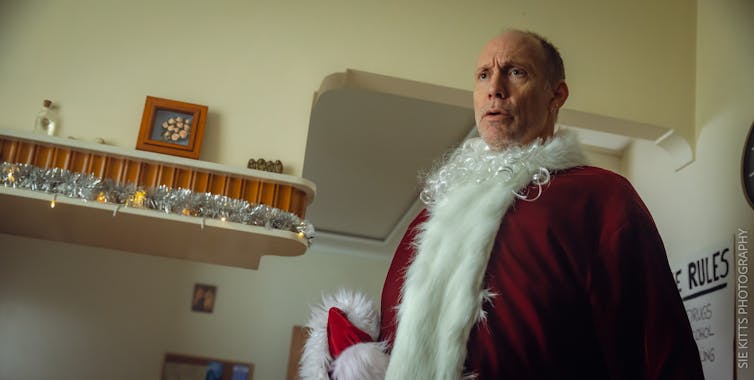
Gilshenan, best known for television comedies like The Moodys and Full Frontal, is superb as the kind (if a touch sanctimonious) AA sponsor. Hannah Joy, lead singer and guitarist of Middle Kids, breaks up the drama with some beautifully performed songs.
The dialogue is naturalistic, fitting the minor tenor of the film, with some subtle bursts of wry humour punctuating the drama.
“Most Santas aren’t NIDA graduates,” Chris says to his employer. “You’d be surprised,” she barks in reply.
“I lied,” Chris says to Nick at one point, “I’m an actor and an addict, what’d you expect?”
The cinematography by Chris Bland is excellent – it looks like it’s been shot for cinemas and not streaming, making the most of the wide aspect ratio and long lenses, with the handheld style recalling the imagery of more savage suburban movies like Snowtown.
The film is full of carefully observed details that situate it within a Sydney milieu, capturing the sad banality of so much of suburban life. Unkempt, rubbish-strewn canals, ugly and depressingly empty shopping malls, carefully manicured weatherboard houses – all the stuff they tried to make us forget about during the Sydney Olympics.
At the same time, there are details anyone who’s spent a Christmas in Sydney would immediately recognise: the glorious but slightly unhinged light displays that seem out of place without snow peppering them; a dying Christmas tree, rescued from a fruit shop; much complaining about the heat, as an ancient air conditioner fruitlessly struggles to do its work. There are the ubiquitous Christmas warehouse stores, a barbecue, yellow brick houses, small, carefully mowed lawns, and lots of sweat.
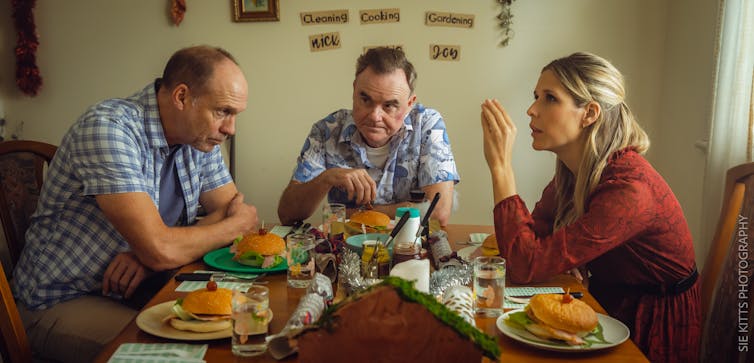
The film’s only weakness – and it’s minor – is the score, which seems a little uninspired but, thankfully, is used minimally.
Christmess is an exceptionally well-crafted independent film punching well above its weight in terms of budget. It lingers in the imagination far longer than most Hollywood-scale productions.
There’s a subtlety to it unusual for contemporary cinema, which tends to browbeat viewers in an insufferably didactic register. It wouldn’t surprise me if this were at the top of lists of Australian Christmas movies. It’s undoubtedly one of the best Christmas films to emerge – from anywhere – in recent years.
Christmess is in cinemas from today.![]()
Ari Mattes, Lecturer in Communications and Media, University of Notre Dame Australia
This article is republished from The Conversation under a Creative Commons license. Read the original article.
A Kid Called Troy at 30: this beautiful Aussie film was one of the most important HIV/AIDS documentaries ever produced
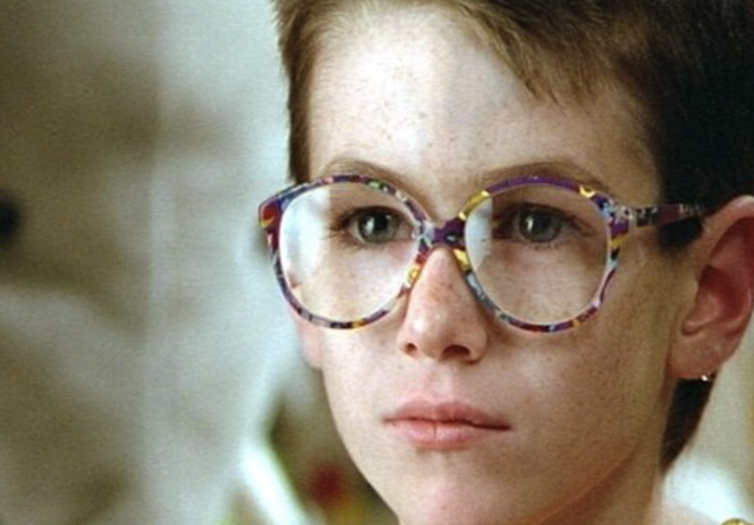
Since 1988, World AIDS Day has been held each year on December 1. This World AIDS Day, we’re reflecting on one of the most important HIV/AIDS documentaries ever produced: A Kid Called Troy, released in Australia 30 years ago.
The film tells the story of Troy Lovegrove, a seven-year-old Australian boy who became HIV-infected during birth, and the support and advocacy of his father, Vince Lovegrove. The story of Troy’s mother, Suzi Lovegrove, and her experience with HIV/AIDS had been documented in 1987’s Suzi’s Story, released the same year Suzi died.
The two films mark a significant moment in the cinematic history of health communication. Their agenda – unquestionably progressive for the time – was to document the family’s struggle against systemic injustice and social discrimination, and to centre attention on their story, told in their own words, with authority and agency.
The documentaries promote support and understanding in the place of rampant victimisation, erasure and neglect, just as the Lovegroves had achieved within their own community.
‘Triumphant Testimony’
The made-for-television documentary tells Troy’s story through direct-to-camera interviews with Troy, Vince and others in their circle.
The crew, under director Terry Carlyon, were careful to build close bonds with the family prior to introducing any filming equipment. This ease and honesty is evident in the way Troy and Vince open up to the camera and thus directly to the viewer, sharing private thoughts on their experiences.
While the film is focused on Troy as a child with HIV, the emphasis is placed – perhaps for the first time – on living with HIV, rather than dying from it. We see Troy’s ordinary life at home with his father and sister, attending school, gymnastics and doctor’s appointments.
The Age praised the film’s “deeply moving and inspiring” content, “gigantic courage” and “blushingly intimate portrait of private joy and torment”. The ratings report for the week called for the ABC to “repeat this triumphant testimony to the human spirit – and soon”.
‘A Minority Within A Minority’
The films are a testament to the human spirit. But they are also important works of activism, advocacy and education.
In A Kid Called Troy, a local woman from a rural community in Arnhem Land, which Troy and Vince regularly visited as part of their outreach work, observes “AIDS doesn’t discriminate”.
Suzi became infected with HIV after a “casual affair” with a man in New York. Not yet aware of this, she passed the virus on to Troy at birth.
These films widened the common cultural understanding of who might be affected by HIV/AIDS. They made clear that, without preventive education and awareness-raising of how the virus works, suffering and stigma will continue.
By focusing on the experiences of an ordinary mother and her child, the films gave viewers an experience they could recognise, rather than insisting on the fundamental “difference” of people living with HIV.
As Vince said:
Suzi wanted to get into people’s minds and souls and make them aware of what AIDS-fear was doing to our community. She wanted to let people know what life had been like as a minority within a minority.
AIDS Prevention And Education
The year Suzi’s Story was released so was the infamous Grim Reaper campaign.
Although the advertisement was part of a wider policy more transparent and innovative than those that had come before, the campaign relied on fearmongering as a primary strategy.
The commercial, part of a A$3 million national educational campaign, did not specify how HIV/AIDS could be contracted or transmitted, or the prevention and support strategies available. This fuelled a moral panic that targeted gay men, in particular those living with HIV and those who injected drugs.
The stigma associated with HIV made the programming of prevention education difficult. In 1987, Ted Coleman’s story in Living with Aids aired on WBZ-TV in Boston without commercials because the television station was unable to find a sponsor.
‘A Beautiful Brief Flash’
A Kid Called Troy stands apart from other HIV/AIDS films of the time because it was concerned with quality of life rather than the spectre of death. It brought Troy’s life into mainstream attention through the accessibility and domesticity of a family-centred television documentary.
It was a landmark moment in the popular depiction of HIV/AIDS.
Troy’s life, in his sister Holly’s words, was “a beautiful brief flash”. He died at the age of seven, just three months before the film was aired.
In his film, Troy’s relentless optimism and zest for life, combined with his father’s unswerving determination, leaves us with the promise of hope, and even the audacity to laugh. In one scene, Troy asks his father, “My video’s going to win more awards than mummy’s, isn’t it dad?”
He seemed to understand his legacy was the very act of understanding itself – comprehension rather than apprehension, compassion above all else.![]()
Jessica Gildersleeve, Professor of English Literature, University of Southern Queensland; Amy Mullens, Professor and Clinical & Health Psychologist, University of Southern Queensland; Annette Brömdal, Senior Lecturer in Sport, Health and Physical Education, University of Southern Queensland; Kate Cantrell, Senior Lecturer — Writing, Editing, Publishing, University of Southern Queensland, and Tait Sanders, Researcher, University of Southern Queensland
This article is republished from The Conversation under a Creative Commons license. Read the original article.
Social media ads are littered with ‘green’ claims. How are we supposed to know they’re true?

Online platforms are awash with ads for so-called “green” products. Power companies are “carbon neutral”. Electronics are “for the planet”. Clothing is “circular” and travel is “sustainable”. Or are they?
Our study of more than 8,000 ads served more than 20,000 times in people’s Facebook feeds found many green claims are vague, meaningless or unsubstantiated and consumers are potentially being deceived.
This costs consumers, as products claiming to be greener are often more expensive. And it costs the planet, as false and exaggerated green claims – or “greenwashing” – make it seem more is being done to tackle climate change and other environmental crises than is really happening.
The widespread use of these claims could delay important action on tackling climate change, as it dilutes the sense of urgency around the issue.
The Colours Of Environmental Friendliness
Our research is part of a newly published report produced by the not-for-profit Consumer Policy Research Centre, researchers at Melbourne Law School and the Australian Ad Observatory, a project of ADM+S (ARC Centre of Excellence for Automated Decision-Making and Society).
The Ad Observatory captures ads from the personal Facebook feeds of around 2,000 people who “donate” their ads to the project via a browser plugin. This lets us analyse otherwise unobservable and ephemeral ads.
We found the most common claims were “clean”, “green” and “sustainable”. Other popular terms were “bio”, “recycled” or “recyclable”, “pure” and “eco-friendly”, often with no explanation of what lay behind them. All are very general, undefined terms, yet they imply a more environmentally responsible choice.
Our report didn’t verify each claim nor analysed their accuracy. We intended to highlight the volume and breadth of the green claims consumers see in social media ads.
Many ads used colours and symbols to put a green “halo” around their products and business. These included green, blue and earthy beige tones, background nature imagery and emojis featuring leaves, planet Earth, the recycling symbol and the green tick, often with no context or specific information.
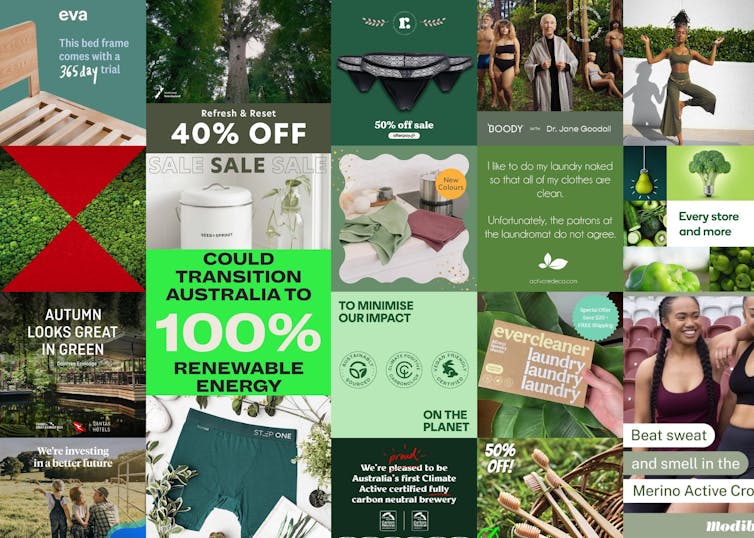
The top five sectors making green claims were energy, household products, fashion, health and personal care, and travel.
This was consistent with a recent internet sweep by the Australian Competition and Consumer Commission (ACCC), which found 57% of the business websites checked were making concerning claims. The proportion was highest among the cosmetic, clothing and footwear, and food and drink packaging sectors.
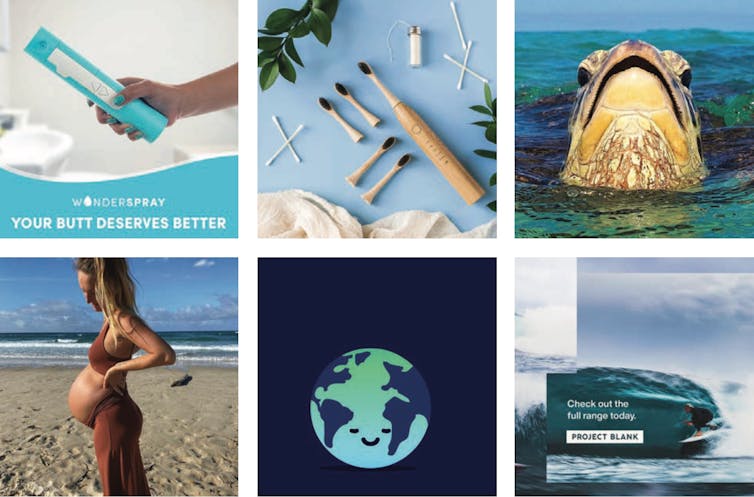
Strong Incentives For Greenwashing
Recent Consumer Policy Research Centre research shows 45% percent of Australians always or often consider sustainability as part of their purchasing decision-making. At least 50% of Australians say they are worried about green claim truthfulness across every sector.
Given consumer concern, businesses have a strong incentive to “green” their businesses. But that comes with a strong incentive to claim more than is justified.
Major Australian business regulators – the ACCC and Australian Securities and Investment Commission (ASIC) – are both prioritising enforcement action against greenwashing.
ASIC has issued dozens of interventions against misleading and deceptive environmental disclosures by companies and super funds. The ACCC has issued draft guidance for businesses on how to avoid greenwashing when making environmental and sustainability claims.
A Senate inquiry into greenwashing is expected to report in mid-2024 as to whether stricter regulation is necessary to protect consumers from misleading greenwashing.
What Is ‘Sustainable’, Anyway?
Our research highlights the plethora of green claims businesses make in social media advertising. Consumers are forced to choose between accepting claims at face value or committing to a deep dive to research each product they buy and the claims they make.
Many green claims come from the energy sector, with some energy companies claiming to be “greener” without any detail. Some claim carbon offsets or carbon neutrality – highly contested terms.
Ads for “sustainable” travel often showed destinations emphasising a connection with nature, but did not explain what aspect of the travel was sustainable.

One personal care brand heavily advertised its “sustainable” packaging, but the fine print showed it related only to the boxes their products are shipped in, not the actual product packaging. A claim like this can create an undeserved green halo across a whole product range.
Claims that products are biodegradable, compostable or recyclable can be particularly problematic, since this is often technically true yet practically difficult. Some products labelled biodegradable may need to be taken to a specific facility, but a consumer might assume they will biodegrade in their home compost bin.
What Can We Do?
Australians cannot wait years for enforcement action against potentially misleading green claims. The economy and the digital world is moving too fast and the need for sustainability is too urgent. Governments must enact laws now to ensure green terms are clearly defined and based on the truth.
The European Union is currently working on a “Green claims” directive that seeks to ban generic claims such as “eco-friendly”, “green”, “carbon positive” and “energy efficient”. Claims would have to be specific, meaningful and based on independently verified excellent environmental performance.
The United Kingdom has already issued similar guidance via an environmental claims code and is also considering stricter legislation.
Australian regulators should have the power to blacklist green terms that cannot be substantiated and are inherently meaningless or misleading.
Some high-polluting sectors should be banned from making any kind of green claim in advertising, due to the overwhelming negative environmental impact of their business models and practices, as the EU is considering. Fossil-fuel companies, for example, should not be permitted to use green claims in marketing.
Australian consumers deserve green choices that are clear, comparable, meaningful and true.![]()
Christine Parker, Professor of Law, The University of Melbourne
This article is republished from The Conversation under a Creative Commons license. Read the original article.
With The Pogues, Shane MacGowan perhaps proved himself the most important Irish writer since James Joyce
Alexander Howard, University of SydneyKnown for his music with The Pogues, and perhaps the most important Irish writer since James Joyce, the venerated and critically acclaimed Shane MacGowan has died in Dublin at the age of 65.
MacGowan was the primary songwriter and lead singer of the folk-punk band who formed in London in 1982 and became best known for their chart-topping single, Fairytale of New York.
A mordantly comedic ballad sung by MacGowan and Kirsty MacColl, this unlikely Christmas favourite – which takes its title from a 1973 novel by the American-Irish writer J.P. Donleavy – is the fourth track on If I Should Fall With Grace From God.
Released to critical and commercial acclaim on January 18 1988, The Pogues’ third album provides us with a helpful means to better appreciate the rich musical and lyrical legacy the complex and notoriously unreliable MacGowan leaves behind.
This album, as with the four others MacGowan recorded with The Pogues, is an intoxicating admixture of the old and new, a heady concoction of the traditional and modern.
The opening song on the record – also called If I Should Fall With Grace From God – is proof. The track, which rattles along at furious pace and features a typically raspy vocal delivery by MacGowan, takes the traditional Scottish song The Bonnie Banks o’ Loch Lomond as a primary point of musical reference.
The thematic preoccupations of the lyrics leave little doubt as to MacGowan’s political affinities:
This land was always ours
Was the proud land of our fathers
It belongs to us and them
Not to any of the others.
Accordion player James Fearnley published an excellent memoir about his tenure as a member of The Pogues in 2012, and has this to say about the album’s opening number:
The song was as elemental as the best of all Shane’s songs. It had mud and land and rivers and oceans and corpses in it, in a landscape as expansive and ancient and threatening as the melody, bringing to mind the high road and low road, one of which – after the Jacobite Rising of 1745 – led to death.
All this, it should be added, in under two and a half minutes.
A Lover Of Literature
Shane Patrick Lysaght MacGowan was born in Kent, England, on Christmas Day in 1957. His parents were Irish immigrants who moved to England for work. As a child, MacGowan divided his time between the south-east of England and Tipperary, where he first learnt to play and sing Irish music.
A gifted writer, MacGowan won a scholarship to Westminster School in London in 1971, but was expelled for drug possession in his second year.
MacGowan’s passion for reading and writing was evident to his family and teachers. By the age of 12, he was reading Fyodor Dostoyevsky, Jean Paul Sartre and D. H. Lawrence.
MacGowan’s love of literature and prowess with language comes to the fore in the songs he wrote while in The Pogues. MacGowan took lyrical inspiration from transgressive and rebellious writers like Jean Genet and Federico García Lorca, both of whom are name-checked on The Pogues’ 1990 album, Hell’s Ditch.
The Irish republican writer and activist Brenden Behan was another enduring literary touchstone for MacGowan. His version of The Auld Triangle, popularised by Behan, can be found on The Pogues first album, Red Roses for Me, from 1984.
With his father, MacGowan read Joyce’s Ulysses and Finnegans Wake. Joyce’s influence on MacGowan and The Pogues was profound and lasting. (He quite literally appears on the cover of If I Should Fall With Grace From God.)
The academic Kevin Farrell reminds us, at the outset of their career, “the band called itself Pogue Mahone, a playful – and Joycean – attempt to slip Irish language vulgarity past the BBC censors”.
The Gaelic phrase póg mo thóin translates as “kiss my arse”, and a variation of the expression can be found in the Aeolus episode of Joyce’s modernist masterpiece, Ulysses. While they couldn’t get the reference past the censors, it is a clear indicator of the band’s love of Joyce, who also struggled against the suppression of expression.
The Influence Of Joyce
Joyce’s influence on MacGowan can be felt in the lyrics of The Sick Bed of Cuchulainn.
This song, the first track of 1985’s Rum, Sodomy & the Lash, serves as a lyrical statement of artistic and political intent: it fuses Celtic mythology with anti-fascist action. Here is a representative slice of the lyrics, which MacGowan delivers at a suitably frenzied pace:
When you pissed yourself in Frankfurt and got syph down in Cologne
And you heard the rattling death trains as you lay there all alone
Frank Ryan bought you whiskey in a brothel in Madrid
And you decked some fucking black shirt who was cursing all the Yids
At the sick bed of Cúchulainn we’ll kneel and say a prayer
But the ghosts are rattling at the door and the devil’s in the chair.
Cuchulainn is a central figure in The Ulster Cycle, a key work of Celtic mythology. A renowned fighter, the heroic Cuchulainn is often romanticised and deified.
MacGowan, who sees affinities between the mythological Cuchulainn and historical figures like the Irish republican Frank Ryan, takes a very different, and overtly Joycean tack.
Deftly toggling back and forth across temporalities, MacGowan foregrounds and celebrates the corporeal. And as with Joyce’s everyman hero, Leopold Bloom, MacGowan’s Cuchulainn is, as music critic Jeffrey T. Roesgen tells us:
made human, assuming the same misadventures, indulgences, and internal struggles between virtue and vice that consume us.
This also serves, I think, as a fitting description of MacGowan himself. ![]()
Alexander Howard, Senior Lecturer, Discipline of English, University of Sydney
This article is republished from The Conversation under a Creative Commons license. Read the original article.
Friday essay: can marriage be feminist? – a ‘hopeless romantic’ says no, but a same-sex newlywed says yes
Zora Simic, UNSW SydneyEarly in my career as a gender studies scholar, I was asked to give some “expert” commentary on whether it was possible to have a “feminist” wedding. Without any specific research or personal expertise – never a real barrier in dial-a-quote land – I insisted of course it was possible. I provided a handy list of ways a feminist bride could subvert the dominant wedding paradigm.
Since then, I have been contacted by the media to discuss marriage more than any other topic. This is not surprising: marriage is one of those perennial hot-button topics and guaranteed click bait.
However, apart from sharing my thoughts on my ambivalent love of the reality television show Married at First Sight, I’ve mostly declined these requests. I just don’t have anything new or interesting to say about marriage – including as a feminist.
I’ve never been married, nor particularly wanted to, apart from some idle daydreaming in the early days of new romance. Even then, the fantasy usually involves eloping. Nor, as the eldest daughter of first-generation European migrants, have I ever been pressured to marry.
My parents tied the knot in a registry office, stopping by a photography studio on the way home, to mark the occasion with a serious photograph in which neither smiled. We were too poor to attend the lavish weddings of friends and relatives in the Balkan community, where nothing less than a brand-new white good was acceptable as a gift.
Among my cohort of Generation X friends, hardly anyone got married – unless it was to help secure a visa for international study and travel. The few weddings I attended in my twenties (what should have been my peak period) were usually conducted in a spirit of semi-irony. (It was the 1990s.)
This is not to say my friends were averse to “settling down”. Most of them have had long relationships – some of them very happy ones – with children and houses and shared assets, the whole shebang.
Since marriage equality was achieved in Australia, I’ve had the great pleasure to attend several queer weddings, each one uniquely delightful and moving. There is perhaps no more generative place to discuss marriage as a social institution than at the wedding reception for two people who grew up believing they would never have access to legal marriage.
For every declaration of “love is love”, another guest matches it with a reflection on homonormativity. The historian in me has wished I could have recorded these conversations, but at the time my priority was getting back to the dancefloor.
At these lovely queer weddings, I am sometimes identified as some kind of spokesperson for feminism. What do I think? Is marriage irredeemably loaded with hetero-patriarchal baggage?
Maybe the champagne is to blame, but what pops into my mind at those moments are more trivial episodes in the long history of “feminism and marriage” – like the intense media interest following feminist icon Gloria Steinem’s getting married for the first time at the age of 66, back at the turn of the century.
More recently, we saw former Australian prime minister Julia Gillard retrofit her opposition to marriage equality while in power as some kind of feminist act, rather than the political manoeuvre it clearly was.
Feminism And Marriage
There is, of course, a far deeper and more complex history of feminist thought and activism around marriage, including campaigns for women to acquire or retain their rights to property, paid work and their nationality after getting married.
Some of this history is canvassed in two new books by feminists on marriage. Clementine Ford is avowedly against it, while British feminist Rachael Lennon recently married her now-wife.
Their respective books, I Don’t: The Case Against Marriage and Wedded Wife: A Feminist History of Marriage, are accessibly written and pitched at a broad audience. Each turn to history, explore popular culture and litter their investigation with personal stories, including their own.

Lennon and her wife “made the decision to marry alongside the choice to become married”. Her wife wanted recognition as a parent of their children “without jumping through legal hoops and navigating additional paperwork”. Lennon, even (or perhaps especially) after having been a bridesmaid six times, knew she “wanted a public celebration”.
Inevitably, with two women getting married, there were “moments of misunderstanding in florists, venues and dress shops”. Together, writes Lennon, they “shook off some of the patriarchal expectations of marriage – though we still felt them”.
Ford, meanwhile, has never been married, though she’s had long-term relationships, including with the father of her son. As a young adult, she worked in a pub that regularly hosted identikit weddings, or “carbon copy festivals of heterosexuality”, seeding a grim view.
In researching her book, however, Ford is shocked when an ex-boyfriend reminds her she once told him if they ever got married, she’d take his surname. As she was in her early twenties at the time, Ford concedes:
It did sound like the kind of bullocks I might have said when I was a newly gestating human and enjoying the feeling of watching myself be in love. I’m sure I would have framed it as progressive at the time, probably preparing to brag about it the same way people do about their alternative weddings.
These days, she rarely goes to weddings as a guest: like her, most of her friends are unmarried.
From Obedience To Intimacy
Lennon and Ford each reference the key text on the topic, historian Stephanie Coontz’s Marriage: A History, From Obedience to Intimacy, or How Love Conquered Marriage (2005). The notion marriage should be based on mutual love and desire, and freely chosen by both parties, is a relatively recent and by no means universal idea – as captured by Coontz’s subtitle.

“Around 200 years ago, most societies around the world saw marriage as simply too important to leave up to the choice of two people”, writes Lennon, drawing on Coontz. These days, Ford writes, “cultures in which marriages are arranged are sneered at, while the women who still come with a price on their head are pitied. We would never diminish love that way, or women!”
It’s a promising line of argument, but only fleetingly developed because Ford, unlike Lennon, resists cross-cultural analysis or examples, including within Australia. Nor does Ford consider how the mainstream success of the Netflix series Indian Matchmaking has opened up a wider international conversation about arranged marriages.
Lennon identifies a cultural shift from the late 18th century, evident in the life and work of Jane Austen, as she tracks the rise of the notion marriage should ultimately be about love. Austen’s celebrated novels “set a romantic bar in popular culture”, writes Lennon, “but the social and economic pressures on middle-class women to marry are always present”.
On “a cold evening in 1802”, Austen herself, aged 26 and dependent on the relatively modest income of her father, accepted a proposal from family friend Harris Bigg-Wither, only to change her mind the next morning.
By the middle of the 20th century, Lennon continues, “most young people in Britain would not only aspire to be in love with a fiancé but expect to be”. But, as Lennon foregrounds, the history of marriage – particularly as decreed by religion and the law – is also one of exclusions on the basis of class, gender, sexuality, religion, race or disability.
As the idea of marriage for love became more entrenched in the West, so too did the gender binary, the separation of the spheres, colour bars and anti-miscegenation laws. At the same time, European colonial expansion “restricted and homogenised marriage definitions around huge swathes of the world”.
In 1918, the Australian government, building on existing Protection Acts in all states, passed the Aboriginals Ordinance, restricting marriage between Indigenous and non-Indigenous people under their jurisdiction.
Ford mostly leaves such histories untouched, making the argument that “as a white woman living in Australia, I couldn’t possibly speak for cultures outside of my own or assert expertise that I don’t have”.
Instead, she purposefully focuses on the “experiences of white, middle-class women” because they “have been instrumental in establishing the idea of success in marriage as a sign of economic status and moral value, which in turn upholds hierarchical power within the patriarchal system”.
Possibly aware she may be negatively targeting her core constituency, Ford makes sure at numerous points to emphasise it is “systemic oppression” she wants to combat and criticise, not “personal actions”. “Contrary to what some may think,” insists Ford, “I am quite hopelessly romantic!” (On this note, in her last book How We Love: Notes on a Life, published in 2021, Ford compellingly argued for an expansive and capacious definition and experience of love.)
The plot and path of marriage gives each author a structure to roughly follow, from proposal to wedding to what happens or could happen next, including divorce. Both point out the “traditional wedding” or “marriage” as we understand it is a recent invention.
Lennon wryly notes history “is not full of men, century after century, popping the question down on one knee in a carefully choreographed performance”. The proposal is a 20th-century invention. For Ford, the most odious forms are the big, flashy public ones.

Ford cites the example of her friend Bridget, whose ex-boyfriend proposed while they were a plane crossing the Atlantic: at “their heart, proposals are an act of entrapment, and there’s nothing quite so inescapable as a tin tube 30,000 feet above the ocean”.
The First Celebrity Wedding
Queen Victoria is described by Ford as one of history’s most successful wedding “influencers”. Fittingly, she features in both books. When she married Prince Albert in a white gown in 1840, she launched a “tradition” of brides wearing white. She also inaugurated the big, expensive and elaborate wedding as the default standard for the aspiring middle classes – and, adds Ford, revitalised Britain’s lace industry.
Lennon aptly describes the wedding of Victoria to Albert as “Britain’s first celebrity wedding”. Widely publicised around the world, its influence – via colonialism and the modern press – extended far beyond England itself.
And while Lennon laments the enduring hold that “Queen Victoria’s tiny waist and sexual purity” maintains on the bridal industry in the UK and globally, she also stresses the merging of local traditions and western influences in Vietnam and Japan. In China, India and much of Asia, she points out, “red is the bridal colour of choice”.
The burden of wedding planning, Lennon and Ford agree, continues to fall largely on women – or at least, is expected to. In the run-up to opposite-sex weddings, writes Lennon, “gender looms large, with parties of segregated people coming together to celebrate and prepare”.
Hen nights and stag dos, only a regular feature since the 1960s, have transitioned from “moments of quiet celebration to whole weekends”, perpetuated by a “massive industry telling us to make the most of these moments and opportunities”.

Ford is especially scornful of what she labels the “wedding industrial complex”. Its history includes the highly successful mid-20th-century campaign in the US to revitalise the exploitative diamond industry by rebranding expensive engagement rings as an essential wedding-related expense.
Attentive to how marriage has oppressed women, neither Lennon nor Ford shy away from its worst manifestations and most enduringly sexist features. On this front, Lennon casts a wider net, which takes in child brides and bride kidnapping, to cite just two examples that still occur.
Until not that long ago, a woman lost her entire legal identity when she became a wife. (This is a strong theme for both writers.) The law of coverture was defined by British judge and Tory politician Sir William Blackstone in the 1760s: “the very being or legal existence of the woman is suspended during the marriage, or at least is incorporated and consolidated into that of the husband”.
With British colonialism, their model of marriage became a major global export, writes Lennon. Ford points out this legacy can be seen everywhere, from “mechanics or tradespeople” who ask to speak to the “man of the house”, through to men who kill their wives and “believe in their hearts that these women belong to them”.
Both draw their reader’s attention to how long it took to get rape in marriage recognised by the law – in Australia’s case, into the 1990s. Criminalisation of rape in marriage here started in South Australia (which partially criminalised it) in 1976, with New South Wales the first state or territory to fully criminalise it, and the Northern Territory the last, in 1994.

As feminists writing avowedly feminist books about marriage, Lennon and Ford each pay some attention to feminists who came before them. They include Mary Wollstonecraft, who is widely though not uniformly recognised as the first modern feminist.
She was also no fan of marriage, at least as it stood in 1792 when she published A Vindication on the Rights of Woman, an instant bestseller in England. “If marriage be the cement of society”, wrote Wollstonecraft, “mankind should all be educated after the same model, or the intercourse of the sexes will never deserve the name of fellowship.”
Wollstonecraft subsequently married writer and political theorist William Godwin – who, as a foundational anarchist, lambasted marriage as a “system of fraud” and the “worst of all laws” – after she became pregnant in 1797. This is interpreted by Lennon as evidence even the strongest and most vocal critics were not immune to “the social pressures and punishments set up to induce marriage”.
Ford celebrates Wollstonecraft’s “wild life”, including “multiple lovers out of marriage”, having a child with one of them and marrying “a fellow radical” who “inadvertently destroyed her reputation by publishing a posthumous tribute that described in detail what a cool bitch she was”.
That Wollstonecraft died giving birth to her second daughter (Mary Shelley, author of Frankenstein) is for Ford a “terrible irony”, given her resistance to “the entrapment of marriage and all the risks it posed to women”.
Strikingly Different
Despite their shared features, however, Wedded Wife and I Don’t are strikingly different projects. Lennon, a “bisexual, feminist woman from a working-class background in the UK”, was inspired by her own marriage to her now-wife to ponder the institution’s “problematic inheritance”.
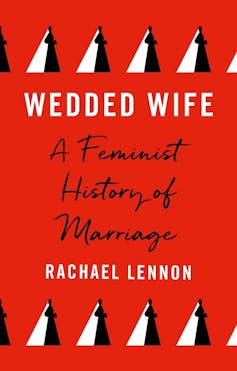
A social historian and curator, Lennon deftly blends an “intimate history” centred “on the stories of women and those who challenged gender norms” with a “whistle stop tour of 500 years of modern marriage, within the United Kingdom and beyond”.
At the vanguard of the same-sex marriage revolution, Lennon finds plenty of evidence to support her case that “nothing about marriage is inevitable, natural or fated” – and that it’s perpetually open to adaptation.
While hardly a groundbreaking revelation or conclusion, Lennon impressively backs it up in her jaunty and thoughtful survey of marriage practices across time and place, with special attention to its queer history, legal and otherwise.
And if on occasion, she slips ever-so-slightly into what Helen Fielding’s Bridget Jones (in “singleton” mode) called “smug married”, who can blame her? Lennon’s marriage sounds happy and harmonious, and she mostly resists evangelising for the cause.
Ford, meanwhile, as her title “I Don’t” makes obvious, is having none of it. Marriage is the paradigmatic patriarchal institution and cannot be queered or saved.
“Marriage,” she argues, “entrenches gender inequality between men and women while advertising heteronormative goals to queer people”. She is a “marriage abolitionist” who “cannot in good conscience support an institution that has enslaved women sexually, reproductively, financially and domestically”.
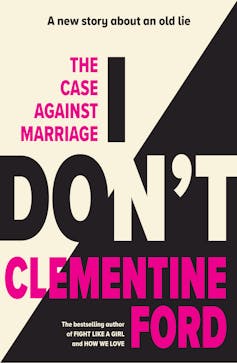
There is no doubting Ford’s ambition. While aware “you can’t summarise six thousand years of patriarchy in ninety thousand words”, she has a go anyway. The obligatory targets and greatest hits are all there – the Ancients, Christianity, the witch-hunts, the Western legal tradition, Piers Morgan.
So are contemporary examples of dud husbands and fear-mongering misogynist podcasters collapsed into the composite figure of “Kermit McDermit”, as are retro comedians (with “a name like Rocket Dickfingers”) who continue to peddle tired “take my wife” jokes to their receptive audiences. Ford’s contempt for such men is occasionally amusing, but more often tedious.
When dealing with the most challenging material – like accounts of coercive sex and rape in marriage that have been shared with her – Ford is sensitive and suitably outraged. But she stops short of providing the proper treatment such disturbing, yet commonplace phenomena demand. Instead, I Don’t is padded with unnecessary detours and digressions, including a lazy primer on what feminism has been blamed for throughout its history.
I Don’t is an unapologetic polemic, which begs the question of who Ford is trying to persuade. The author of three previous books, including Fight Like a Girl (2016) and Boys Will Be Boys (2018), as well as a podcaster with a strong social media presence, Ford has established a dedicated readership.
Presumably, some of these readers are like me – self-identified feminists who are, at best, indifferent about marriage. Or if they are married, or plan to marry, or want to be married, such a reader is probably already quite aware marriage has historically been a somewhat oppressive and sexist institution – and often still is.
That they want to get married anyway invites more reflection on its appeal beyond blaming popular culture, society and the patriarchy. Maybe Ford and the publishers anticipate some new readers who are curious about “marriage abolition”. It’s hard to tell.
I Don’t ‘Fails To Persuade’
In any case, “marriage abolition”, as advanced by Ford, is a far sketchier proposition than other recent and ongoing feminist mobilisations focused on the abolition of some of society’s most entrenched institutions and structures.
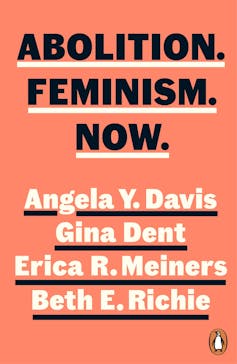
For example, feminism aimed at dismantling the carceral system is a growing international movement that includes Australia’s Sisters Inside Inc. and is showcased in the bestselling manifesto Abolition.Feminism.Now.
Books like Full Surrogacy Now: Feminism Against the Family (2019) and Abolish the Family: A Manifesto (2022), both by British scholar, writer and activist Sophie Lewis, invite readers to imagine what a world without the family (as it is currently constituted) would look like.
The best polemics and manifestos dare readers to imagine alternative and better worlds: alas, I Don’t is not one of them.
One major reason I Don’t fails to persuade is that there is a tension between Ford declaring her book the “start of a much bigger conversation” about marriage on the one hand, and as a “profoundly hopeful love letter to women” on the other.
Conversations about marriage are happening all the time – for instance, about ethical non-monogamy, living-apart-together, blended families and friendly divorces. But surprisingly few of them appear in Ford’s book. And while plenty of queer theorists share her view that marriage remains fundamentally heteronormative no matter who enters it, she names none of them.
As a genre, polemics defiantly resist the obligations of “balance”. But without the voices of women who, like Lennon and her wife, have reclaimed and reinvented marriage to suit themselves, in I Don’t, Ford runs perilously close to accusing women who decide to get married for whatever reason of false consciousness.
As polemic, the success of I Don’t largely rests on accepting Ford’s two related claims. Firstly, that the “modern woman is told that she needs marriage” and this pressure remains overwhelming. Next, that the stigma of not getting married – of becoming the modern version of a “spinster”, the “Cat Lady” – continues to loom large.
As a “spinster” myself (without any cats), I am part of an ever-increasing cohort of women who will never marry, have never really had any desire to, and have somehow remained largely immune from social pressures – including from the enduring stereotype of the “Cat Lady”.
I embarked on I Don’t sharing most of Ford’s criticisms of marriage. And while I still share them, I also found reading it such an alienating experience that by the end, I was tempted to get married just to prove her wrong.
As an alternative, I would recommend Lennon’s nuanced history, or even better, historian Alecia Simmonds’s recently published Courting: an intimate history of law and the law. In her captivating history of people – most of them women, but not all – who sued their prospective marriage partners for breach of promise, Simmonds audaciously suggests there might be merit in reviving and updating breach of promise in the civil law as a way to advance an ethics of intimacy.
It’s the sort of cleverly developed argument you don’t have to necessarily agree with to be excited by. I just wish there had been more of those arguments in I Don’t.![]()
Zora Simic, Senior Lecturer, School of Humanities, UNSW Sydney
This article is republished from The Conversation under a Creative Commons license. Read the original article.
Book Of The Season - Summer 2023-2024: Come In Spinner, 1951
Come In Spinner is an Australian novel by Dymphna Cusack and Florence James, originally published in 1951 and set in Sydney at the end of the Second World War.
The title refers to a phrase used in the Australian gambling game of two-up. "Come in spinner" is the call given by the game manager when all bets are placed and the coins are ready to be tossed.
The book tells the story of three women, Claire, Guinea and Deb, who are co-workers in the beauty salon of an exclusive Sydney hotel. The story weaves together these characters with their familial and romantic relationships, as they struggle to manage the realities of working for the privileged upper classes, to whom no rules apply, while their own families cope with wartime deaths and losses, rationing, government manpower recruitment and stiflingly conservative attitudes surrounding the role and perception of the "acceptable" behaviour of women.
From 1945 to 1947 Florence James, her two daughters, and Dymphna Cusack and her niece shared a rented cottage 'Pinegrove' at Hazelbrook in the Blue Mountains. It was there that they collaborated on a children's book Four Winds and a Family and Come In Spinner, which was to become the most successful book about life in wartime Sydney.
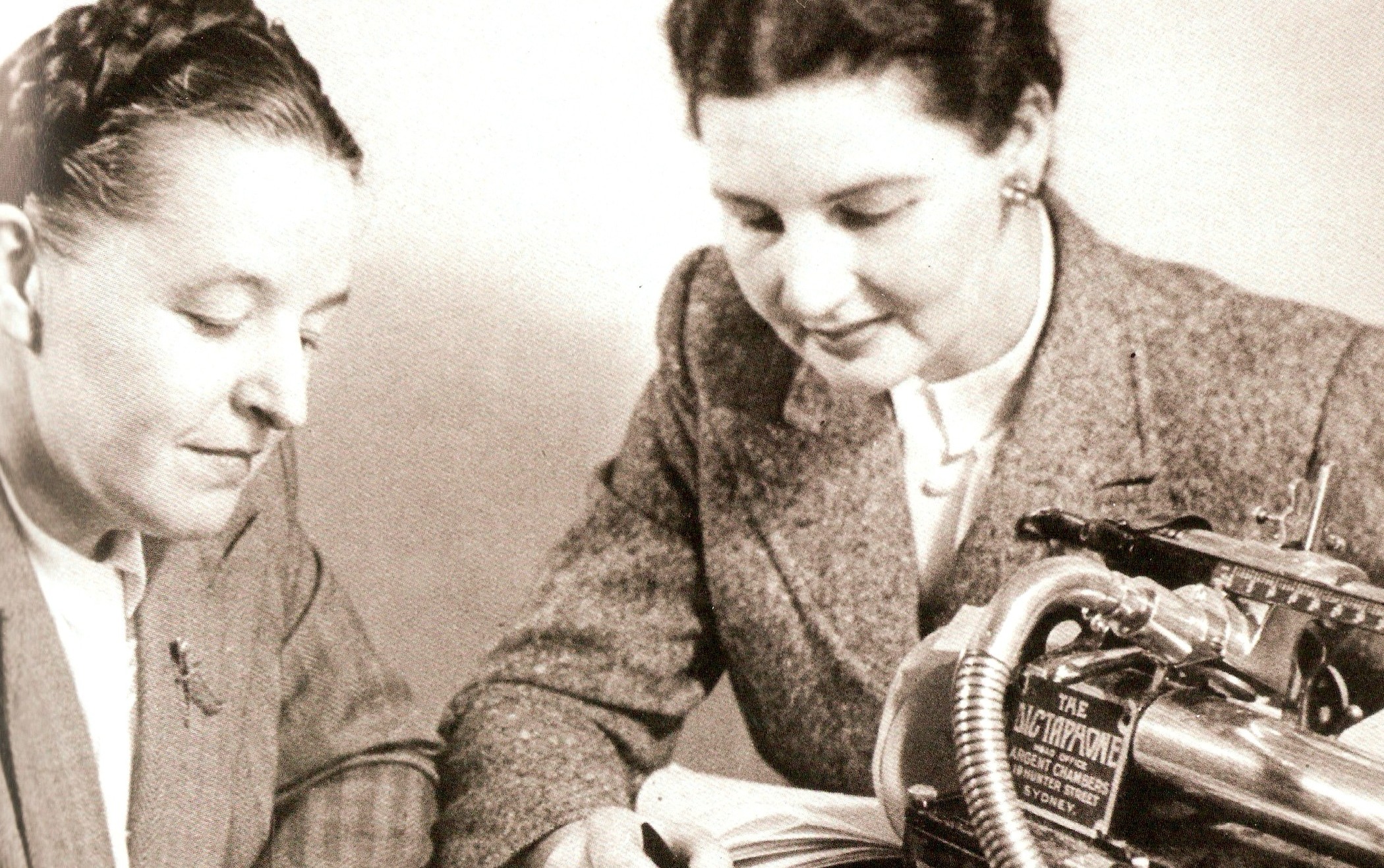
Dymphna Cusack and Florence James, working at Dymphna’s dictaphone. Photo: University of Melbourne Archives.
Cusack and James entered their manuscript in the Daily Telegraph's £1000 novel competition, whose closing date was October 1946. It was judged the winner and the prizemoney handed over, but no announcement was made, and The Telegraph reneged on its commitment to publish the novel, which covered such topics as abortion, adultery, prostitution and sexual assault, as well as promiscuity and the black market. Heinemann published an expurgated version in 1951.
The book was reworked from the original MS by Florence James, and was republished in 1987 for Richard Walsh of Angus and Robertson, partly due to the interest caused by the development of a television adaptation of the book. Cusack was not able to take part in this restoration or witness the renewed popularity of the novel as she passed away in 1981.
Ellen Dymphna Cusack AM (21 September 1902 – 19 October 1981) was born in Wyalong, New South Wales, and educated at Saint Ursula's College, Armidale, New South Wales and graduated from the University of Sydney with an honours degree in Arts and a diploma in Education. She worked as a teacher until she retired in 1944 for health reasons. Her illness was confirmed in 1978 as multiple sclerosis. Dymphna passed away at Manly, New South Wales on 19 October 1981.
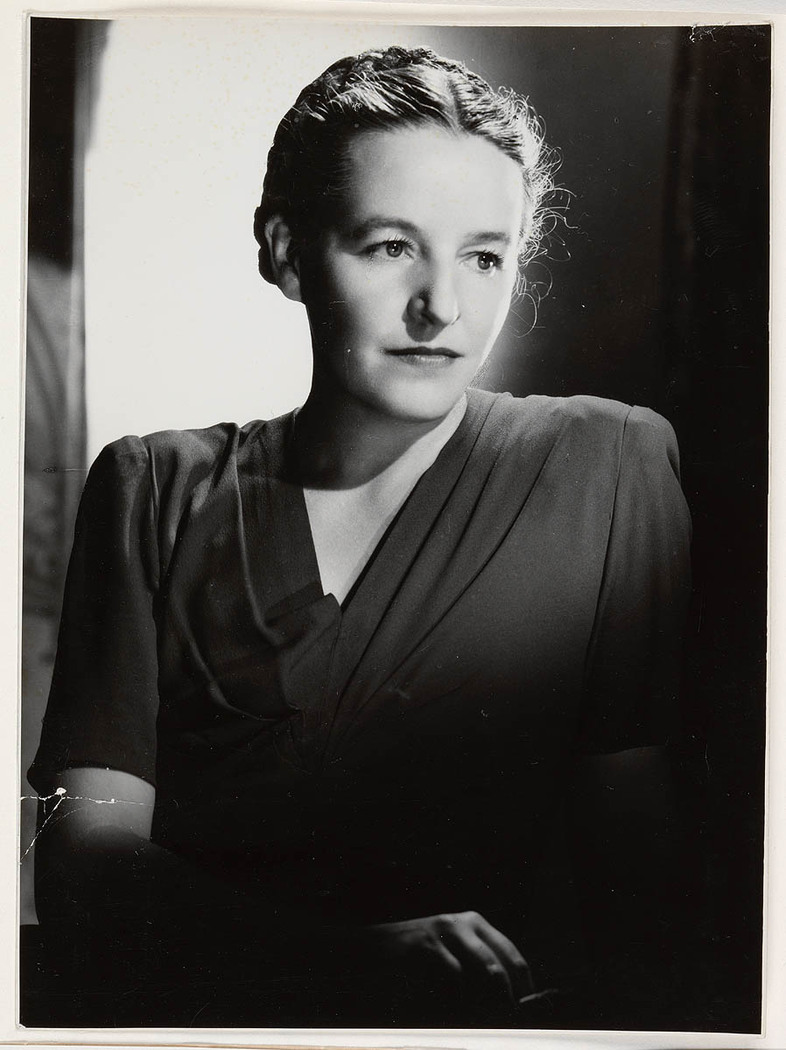
Dymphna Cusack, 1947. Photo courtesy State Library of NSW
Cusack wrote twelve novels (two of which were collaborations), eleven plays, three travel books, two children's books and one non-fiction book. Her collaborative novels were Pioneers on Parade (1939) with Miles Franklin, and Come In Spinner with Florence James.
Her younger brother, John, was also an author, writing the war novel They Hosed Them Out under the pseudonym John Beede, which was first published in 1965; an expanded edition under the author's real name, John Bede Cusack, was published in 2012 by Wakefield Press, edited and annotated by Robert Brokenmouth.
Cusack advocated social reform and described the need for reform in her writings. She contributed to the world peace movement during the Cold War era as an antinuclear activist. She and her husband Norman Freehill were members of the Communist Party and they left their entire estates to the Party in their wills.
Cusack was a foundation member of the Australian Society of Authors in 1963. She had refused an Order of the British Empire, but was made a Member of the Order of Australia in 1981 for her contribution to Australian literature. In 2011, Cusack was one of 11 authors, including Elizabeth Jolley and Manning Clark, to be permanently recognised by the addition of brass plaques at the Writers' Walk, Sydney.
Florence Gertrude James (2 September 1902 – 25 August 1993) was an Australian writer and literary agent, born in Gisborne, New Zealand. She moved with her family to Sydney in 1920, studying at Sydney University 1923–26, and it was there that her friendship with Dymphna Cusack began. They were both involved in debating and theatre; they shared a feminist, unionist and pacifist outlook. Both became opponents of nuclear weapons.
Around 1930 she moved to London, working as a journalist, briefly sharing a room with Christina Stead. While there she married lawyer William J. "Pym" Heyting in 1932 and had two daughters, Julie and Frances, by him. They returned to Sydney in 1938. He joined the RAAF as an Intelligence officer, and became a Wing Commander.
She worked as Public Appeals Officer for The Royal Prince Alfred Hospital from 1940 to the end of 1944, when she resigned.
She returned with her daughters to London in 1947 to join her husband who was stationed there. They divorced in 1948. She remained there until 1963, working as a literary agent, initially for Constable and Company, where authors she signed included Mary Durack, Sylvia Townsend Warner and Colin Johnson (aka Mudrooroo Narogin). She became active in the Campaign for Nuclear Disarmament, participating in the Aldermaston March and activities of Bertrand Russell's Committee of One Hundred.
Florence returned to Australia in 1963 and joined the Religious Society of Friends (Quakers) in 1968. In 1984 she restored the unexpurgated MS of Come In Spinner for Richard Walsh of Angus and Robertson. Florence passed away in 1993 at the Wesley Heights retirement village at Manly, where her friend and collaborator Dymphna Cusack had passed away twelve years earlier.
Brains Trust Lunch 2023
National Seniors Australia Enters New Era With New Chief Executive Officer
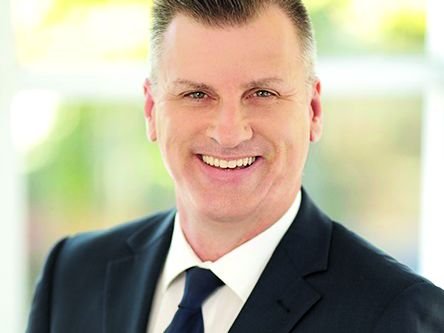
Former Wentworth MP Dave Sharma pulls off surprise victory for Liberal Senate vacancy
Michelle Grattan, University of CanberraThe former member for Wentworth, Dave Sharma, has won the Liberal Senate spot left by the retirement of the former Foreign Minister Maris Payne.
He beat former NSW minister Andrew Constance 251 to 206 in the final ballot on Sunday. His selection was a surprise, with Constance earlier tipped the likely winner. Both Sharma and Constance are moderates, as was Payne.
Sharma (who is not Jewish) is a one-time Australian ambassador to Israel, and his selection will be particularly welcomed by many in the Jewish community. He has been strongly supportive of Israel in his many media appearances since the October 7 Hamas attack.
Liberal MP Julian Leeser, who is Jewish, said: “Dave Sharma has a strong understanding of the need for Australia to stand with like-minded liberal democracies around the world.
"He has been a strong voice against antisemitism and I believe he will be extremely effective in exposing the extremist-Greens and the antisemitism they are feeding across Australia. He will be a welcome addition to Peter Dutton’s team.”
Opposition leader Dutton said: “His diplomatic and foreign policy expertise and experience will lend considerable weight and wisdom to the public policy debate given the precarious circumstances in Eastern Europe, the Middle East and the Indo-Pacific.
"Dave will speak with moral courage and provide moral clarity as we grapple with unprecedented levels of antisemitism on our own shores.”
Sharma held the seat of Wentworth from 2019 to 2022, when he was defeated by teal independent Allegra Spender.
Sunday’s 10-candidate field included former ACT senator Zed Seselja, a hard-line conservative, who was defeated by independent David Pocock at the last election.
Liberal deputy leader Sussan Ley said Sharma’s “keen foreign policy intellect will be particularly welcome given we are in the most dangerous set of geopolitical circumstances since the second world war.
"Over the past 20 years, Dave has sat in the Oval Office with American presidents, helped to broker international peace agreements and has first-hand experience on-the-ground in Israel as a former ambassador – all vital experiences which put him in good stead to make a lofty contribution as a senator for New South Wales.”![]()
Michelle Grattan, Professorial Fellow, University of Canberra
This article is republished from The Conversation under a Creative Commons license. Read the original article.
COVID wave: what’s the latest on antiviral drugs, and who is eligible in Australia?

Australia is experiencing a fresh wave of COVID, seeing increasing cases, more hospitalisations and a greater number of prescriptions for COVID antivirals dispensed over recent months.
In the early days of the pandemic, the only medicines available were those that treated the symptoms of the virus. These included steroids and analgesics such as paracetamol and ibuprofen to treat pain and fever.
We now have two drugs called Paxlovid and Lagevrio that treat the virus itself.
But are these drugs effective against current variants? And who is eligible to receive them? Here’s what to know about COVID antivirals as we navigate this eighth COVID wave.
What Antivirals Are Available?
Paxlovid is a combination of two different drug molecules, nirmatrelvir and ritonavir. The nirmatrelvir works by blocking an enzyme called a protease that the virus needs to replicate. The ritonavir is included in the medicine to protect the nirmatrelvir, stopping the body from breaking it down.
Molnupiravir, marketed as Lagevrio, works by forcing errors into the RNA of SARS-CoV-2 (the virus that causes COVID) as it replicates. As these errors build up, the virus becomes less effective.
This year in Australia, the XBB COVID strains have dominated, and acquired a couple of key mutations. When COVID mutates into new variants, it doesn’t affect the ability of either Paxlovid or Lagevrio to work because the parts of the virus that change from the mutations aren’t those targeted by these two drugs.
This is different to the monoclonal antibody-based medicines that were developed against specific strains of the virus. These drugs are not thought to be effective for any variant of the virus from omicron XBB.1.5 onwards, which includes the current wave. This is because these drugs recognise certain proteins expressed on the surface of SARS-CoV-2, which have changed over time.
What Does The Evidence Say?
As Lagevrio and Paxlovid are relatively new medicines, we’re still learning how well they work and which patients should use them.
The latest evidence suggests Paxlovid decreases the risk of hospitalisation if taken early by those at highest risk of severe disease.
Results from a previous trial suggested Lagevrio might reduce COVID deaths. But a more recent, larger trial indicated Lagevrio doesn’t significantly reduce hospitalisations or deaths from the virus.
However, few people at highest risk from COVID were included in this trial. So it could offer some benefit for patients in this group.
In Australia, Lagevrio is not routinely recommended and Paxlovid is preferred. However, not all patients can take Paxlovid. For example, people with medical conditions such as severe kidney or liver impairment shouldn’t take it because these issues can affect how well the body metabolises the medication, which increases the risk of side effects.
Paxlovid also can’t be taken alongside some other medications such as those for certain heart conditions, mental health conditions and cancers. For high-risk patients in these cases, Lagevrio can be considered.

Some people who take COVID antivirals will experience side effects. Mostly these are not serious and will go away with time.
Both Paxlovid and Lagevrio can cause diarrhoea, nausea and dizziness. Paxlovid can also cause side effects including muscle aches and weakness, changes in taste, loss of appetite and abdominal pain. If you experience any of these, you should contact your doctor.
More serious side effects of both medicines are allergic reactions, such as shortness of breath, swelling of the face, lips or tongue and a severe rash, itching or hives. If you experience any of these, call 000 immediately or go straight to the nearest emergency department.
Be Prepared
Most people will be able to manage COVID safely at home without needing antivirals. However, those at higher risk of severe COVID and therefore eligible for antivirals should seek them. This includes people aged 70 or older, people aged 50 or older or Aboriginal people aged 30 or older with one additional risk factor for severe illness, and people 18 or older who are immunocompromised.
If you are in any of these groups, it’s important you plan ahead. Speak to your health-care team now so you know what to do if you get COVID symptoms.
If needed, this will ensure you can start treatment as soon as possible. It’s important antivirals are started within five days of symptom onset.
If you’re a high-risk patient and you test positive, contact your doctor straight away. If you are eligible for antivirals, your doctor will organise a prescription (either an electronic or paper script).
These medicines are available under the Pharmaceutical Benefits Scheme (PBS) and subsidised for people with a Medicare card. The cost for each course is the standard PBS co-payment amount: A$30 for general patients and A$7.30 for people with a concession card.
So you can rest and reduce the risk of spreading the virus to others, ask your pharmacy to deliver the medication to your home, or ask someone to collect it for you.![]()
Jessica Pace, Associate Lecturer, Sydney Pharmacy School, University of Sydney and Nial Wheate, Associate Professor of the School of Pharmacy, University of Sydney
This article is republished from The Conversation under a Creative Commons license. Read the original article.
Shane MacGowan: a timeless voice for Ireland’s diaspora in England
Sean Campbell, Anglia Ruskin UniversityDuring a concert in Dublin in 2022, Bob Dylan paused between songs to pay tribute to another singer-songwriter who was in attendance that night. “I want to say hello to Shane MacGowan”, said Dylan, praising MacGowan as one of his “favourite artists”.
MacGowan, who has died aged 65, came to prominence in the 1980s as the singer and songwriter for The Pogues. In that role, MacGowan became, as the BBC Four documentary The Great Hunger: the Life and Songs of Shane MacGowan explained, “the first voice that arose from within the London-Irish to give defiant and poetic expression to a community which had never really felt able to proclaim itself”.
The Pogues gave visibility to the second-generation Irish in England, a facet of migrant life that had previously gone uncharted in mainstream popular culture.
MacGowan was not only pioneering in his evocation of Ireland’s diaspora in England – he composed songs of exceptional quality, attracting enormous critical respect and significant commercial success.
Irish Beginnings
MacGowan was born December 25 1957 in Kent, England (where his parents were visiting family), but spent his early years on a farm in County Tipperary. There, the youngster observed regular traditional Irish music sessions, which had – as his late mother Therese explained – “a tremendous influence on him”.
During the early 1960s, MacGowan relocated to London where his father had found work, precipitating what the singer called a “horrific change of life”. During this time, he would, he said, “cry [himself] to sleep” at night while “thinking about Ireland”.
He assuaged his homesickness by attending Irish social clubs and regularly visiting Ireland.
“Because there’s an Irish scene in London,” MacGowan later explained, “you never forget the fact that you originally came from Ireland. There are lots of Irish pubs, so there was always Irish music in bars and on jukeboxes. Then every summer I would spend my school holidays back in Tipperary.”
This experience of being raised in a migrant Irish environment would animate much of MacGowan’s work with The Pogues.
Becoming ‘My Own Ethnic’
Despite securing a highly competed-for scholarship at Westminster (a prestigious private school), MacGowan was soon expelled for possessing drugs.

After a spell in London’s Bethlem Royal Hospital for alcohol and drug abuse, he took on work as a porter and barman. MacGowan’s interests became increasingly focused, though, on London’s emergent punk scene, at the centre of which was another second-generation Irish singer, John Lydon (aka Johnny Rotten), the vocalist and lyricist for the Sex Pistols.
“I probably wouldn’t have been that interested if Johnny Rotten hadn’t been so bloody obviously Irish and made a big noise about it, and made such anti-English records,” Shane later observed.
MacGowan formed his own punk band, The Nips, who achieved moderate success before fragmenting in the early 1980s. During that period, Shane began to observe a turn towards “roots” music (later, “world music”) in London. This prompted him to take a radical change of direction. As the singer later explained: “I just thought … if people are being ‘ethnic’, I might as well be my own ‘ethnic’.”
With this in mind, MacGowan launched The Pogues in 1982, recruiting two other musicians of Irish descent, Cáit O’Riordan (bass) and Andrew Ranken (drums), alongside three non-Irish associates: Jem Finer (banjo), Spider Stacy (tin whistle) and James Fearnley (accordion).
The band forged a remarkable fusion of Irish folk and English punk, becoming what critics called “an unlikely meeting point between The Clancy Brothers and The Clash”.
In interviews, MacGowan was keen to stress that he was London-Irish (rather than Ireland-born). Such assertions of Irish ethnicity could be problematic in Eighties Britain, where anti-Irish prejudice had been intensified by the IRA’s bombing campaign. The Pogues were not initially well-received in Ireland, where their London-Irishness was viewed with a degree of wariness.
The band released a series of critically acclaimed and commercially successful albums, the best known of which is If I Should Fall from Grace with God (1988). The latter arguably marked the high point of MacGowan’s career, with the album’s lead single, Fairytale of New York (featuring a celebrated duet with the late Kirsty MacColl), reaching number two in the UK chart.
An Enduring Legacy
Such success would, however, come with a price. As Shane’s sister, Siobhan, later explained, the protracted worldwide tour that The Pogues undertook in 1988 “really changed him”. “He went away,” she recalled, “and he didn’t come back, not the Shane that I ever knew before”, citing his intensifying consumption of drink and drugs.
MacGowan’s performances became increasingly erratic, and in 1991 he was asked to leave the band. The singer made two albums with a new group, The Popes, in the 1990s, before The Pogues reformed – as a live band – in 2001, performing a series of highly successful concert tours until 2014.
MacGowan’s songs would continue to resonate powerfully with audiences and critics, prompting Ireland’s president, Michael D. Higgins, to present the singer with a Lifetime Achievement Award in 2018. In that same year, Shane received an Ivor Novello Inspiration Award in London.
If, as seems likely, Shane MacGowan’s songs are sung for centuries to come, then we’d do well to recall their origins in – and echoes of – Ireland’s often overlooked diaspora in England.

Looking for something good? Cut through the noise with a carefully curated selection of the latest releases, live events and exhibitions, straight to your inbox every fortnight, on Fridays. Sign up here.![]()
Sean Campbell, Associate Professor of Media and Culture, Anglia Ruskin University
This article is republished from The Conversation under a Creative Commons license. Read the original article.
More Than $2 Billion Boost For Aged Care Homes To Fund Award Wage Increase
Free 2024 Calendar + Diary For Seniors
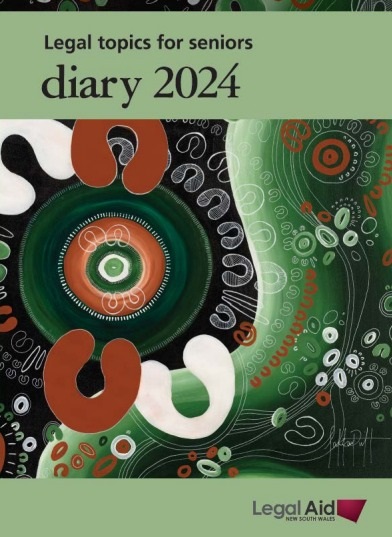
Congratulations! Seniors Stories Volume 9 2023
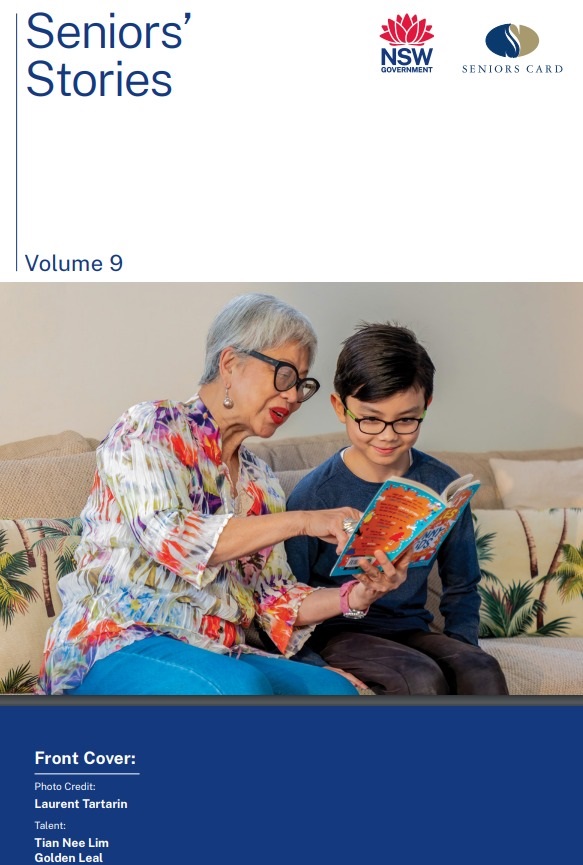
2024 Seniors Festival Events Running Across NSW
Artificial intelligence is already in our hospitals. 5 questions people want answered

Artificial intelligence (AI) is already being used in health care. AI can look for patterns in medical images to help diagnose disease. It can help predict who in a hospital ward might deteriorate. It can rapidly summarise medical research papers to help doctors stay up-to-date with the latest evidence.
These are examples of AI making or shaping decisions health professionals previously made. More applications are being developed.
But what do consumers think of using AI in health care? And how should their answers shape how it’s used in the future?
What Do Consumers Think?
AI systems are trained to look for patterns in large amounts of data. Based on these patterns, AI systems can make recommendations, suggest diagnoses, or initiate actions. They can potentially continually learn, becoming better at tasks over time.
If we draw together international evidence, including our own and that of others, it seems most consumers accept the potential value of AI in health care.
This value could include, for example, increasing the accuracy of diagnoses or improving access to care. At present, these are largely potential, rather than proven, benefits.
But consumers say their acceptance is conditional. They still have serious concerns.
1. Does the AI work?
A baseline expectation is AI tools should work well. Often, consumers say AI should be at least as good as a human doctor at the tasks it performs. They say we should not use AI if it will lead to more incorrect diagnoses or medical errors.
2. Who’s responsible if AI gets it wrong?
Consumers also worry that if AI systems generate decisions – such as diagnoses or treatment plans – without human input, it may be unclear who is responsible for errors. So people often want clinicians to remain responsible for the final decisions, and for protecting patients from harms.
3. Will AI make health care less fair?
If health services are already discriminatory, AI systems can learn these patterns from data and repeat or worsen the discrimination. So AI used in health care can make health inequities worse. In our studies consumers said this is not OK.
4. Will AI dehumanise health care?
Consumers are concerned AI will take the “human” elements out of health care, consistently saying AI tools should support rather than replace doctors. Often, this is because AI is perceived to lack important human traits, such as empathy. Consumers say the communication skills, care and touch of a health professional are especially important when feeling vulnerable.
5. Will AI de-skill our health workers?
Consumers value human clinicians and their expertise. In our research with women about AI in breast screening, women were concerned about the potential effect on radiologists’ skills and expertise. Women saw this expertise as a precious shared resource: too much dependence on AI tools, and this resource might be lost.
Consumers And Communities Need A Say
The Australian health-care system cannot focus only on the technical elements of AI tools. Social and ethical considerations, including high-quality engagement with consumers and communities, are essential to shape AI use in health care.
Communities need opportunities to develop digital health literacy: digital skills to access reliable, trustworthy health information, services and resources.
Respectful engagement with Aboriginal and Torres Strait Islander communities must be central. This includes upholding Indigenous data sovereignty, which the Australian Institute of Aboriginal and Torres Strait Islander Studies describes as:
the right of Indigenous peoples to govern the collection, ownership and application of data about Indigenous communities, peoples, lands, and resources.
This includes any use of data to create AI.
This critically important consumer and community engagement needs to take place before managers design (more) AI into health systems, before regulators create guidance for how AI should and shouldn’t be used, and before clinicians consider buying a new AI tool for their practice.
We’re making some progress. Earlier this year, we ran a citizens’ jury on AI in health care. We supported 30 diverse Australians, from every state and territory, to spend three weeks learning about AI in health care, and developing recommendations for policymakers.
Their recommendations, which will be published in an upcoming issue of the Medical Journal of Australia, have informed a recently released national roadmap for using AI in health care.
That’s Not All
Health professionals also need to be upskilled and supported to use AI in health care. They need to learn to be critical users of digital health tools, including understanding their pros and cons.
Our analysis of safety events reported to the Food and Drug Administration shows the most serious harms reported to the US regulator came not from a faulty device, but from the way consumers and clinicians used the device.
We also need to consider when health professionals should tell patients an AI tool is being used in their care, and when health workers should seek informed consent for that use.
Lastly, people involved in every stage of developing and using AI need to get accustomed to asking themselves: do consumers and communities agree this is a justified use of AI?
Only then will we have the AI-enabled health-care system consumers actually want.![]()
Stacy Carter, Professor and Director, Australian Centre for Health Engagement, Evidence and Values, University of Wollongong; Emma Frost, PhD candidate, Australian Centre for Health Engagement, Evidence and Values, University of Wollongong; Farah Magrabi, Professor of Biomedical and Health Informatics at the Australian Institute of Health Innovation, Macquarie University, and Yves Saint James Aquino, Research Fellow, Australian Centre for Health Engagement, Evidence and Values, University of Wollongong
This article is republished from The Conversation under a Creative Commons license. Read the original article.
With The Pogues, Shane MacGowan perhaps proved himself the most important Irish writer since James Joyce
Alexander Howard, University of SydneyKnown for his music with The Pogues, and perhaps the most important Irish writer since James Joyce, the venerated and critically acclaimed Shane MacGowan has died in Dublin at the age of 65.
MacGowan was the primary songwriter and lead singer of the folk-punk band who formed in London in 1982 and became best known for their chart-topping single, Fairytale of New York.
A mordantly comedic ballad sung by MacGowan and Kirsty MacColl, this unlikely Christmas favourite – which takes its title from a 1973 novel by the American-Irish writer J.P. Donleavy – is the fourth track on If I Should Fall With Grace From God.
Released to critical and commercial acclaim on January 18 1988, The Pogues’ third album provides us with a helpful means to better appreciate the rich musical and lyrical legacy the complex and notoriously unreliable MacGowan leaves behind.
This album, as with the four others MacGowan recorded with The Pogues, is an intoxicating admixture of the old and new, a heady concoction of the traditional and modern.
The opening song on the record – also called If I Should Fall With Grace From God – is proof. The track, which rattles along at furious pace and features a typically raspy vocal delivery by MacGowan, takes the traditional Scottish song The Bonnie Banks o’ Loch Lomond as a primary point of musical reference.
The thematic preoccupations of the lyrics leave little doubt as to MacGowan’s political affinities:
This land was always ours
Was the proud land of our fathers
It belongs to us and them
Not to any of the others.
Accordion player James Fearnley published an excellent memoir about his tenure as a member of The Pogues in 2012, and has this to say about the album’s opening number:
The song was as elemental as the best of all Shane’s songs. It had mud and land and rivers and oceans and corpses in it, in a landscape as expansive and ancient and threatening as the melody, bringing to mind the high road and low road, one of which – after the Jacobite Rising of 1745 – led to death.
All this, it should be added, in under two and a half minutes.
A Lover Of Literature
Shane Patrick Lysaght MacGowan was born in Kent, England, on Christmas Day in 1957. His parents were Irish immigrants who moved to England for work. As a child, MacGowan divided his time between the south-east of England and Tipperary, where he first learnt to play and sing Irish music.
A gifted writer, MacGowan won a scholarship to Westminster School in London in 1971, but was expelled for drug possession in his second year.
MacGowan’s passion for reading and writing was evident to his family and teachers. By the age of 12, he was reading Fyodor Dostoyevsky, Jean Paul Sartre and D. H. Lawrence.
MacGowan’s love of literature and prowess with language comes to the fore in the songs he wrote while in The Pogues. MacGowan took lyrical inspiration from transgressive and rebellious writers like Jean Genet and Federico García Lorca, both of whom are name-checked on The Pogues’ 1990 album, Hell’s Ditch.
The Irish republican writer and activist Brenden Behan was another enduring literary touchstone for MacGowan. His version of The Auld Triangle, popularised by Behan, can be found on The Pogues first album, Red Roses for Me, from 1984.
With his father, MacGowan read Joyce’s Ulysses and Finnegans Wake. Joyce’s influence on MacGowan and The Pogues was profound and lasting. (He quite literally appears on the cover of If I Should Fall With Grace From God.)
The academic Kevin Farrell reminds us, at the outset of their career, “the band called itself Pogue Mahone, a playful – and Joycean – attempt to slip Irish language vulgarity past the BBC censors”.
The Gaelic phrase póg mo thóin translates as “kiss my arse”, and a variation of the expression can be found in the Aeolus episode of Joyce’s modernist masterpiece, Ulysses. While they couldn’t get the reference past the censors, it is a clear indicator of the band’s love of Joyce, who also struggled against the suppression of expression.
The Influence Of Joyce
Joyce’s influence on MacGowan can be felt in the lyrics of The Sick Bed of Cuchulainn.
This song, the first track of 1985’s Rum, Sodomy & the Lash, serves as a lyrical statement of artistic and political intent: it fuses Celtic mythology with anti-fascist action. Here is a representative slice of the lyrics, which MacGowan delivers at a suitably frenzied pace:
When you pissed yourself in Frankfurt and got syph down in Cologne
And you heard the rattling death trains as you lay there all alone
Frank Ryan bought you whiskey in a brothel in Madrid
And you decked some fucking black shirt who was cursing all the Yids
At the sick bed of Cúchulainn we’ll kneel and say a prayer
But the ghosts are rattling at the door and the devil’s in the chair.
Cuchulainn is a central figure in The Ulster Cycle, a key work of Celtic mythology. A renowned fighter, the heroic Cuchulainn is often romanticised and deified.
MacGowan, who sees affinities between the mythological Cuchulainn and historical figures like the Irish republican Frank Ryan, takes a very different, and overtly Joycean tack.
Deftly toggling back and forth across temporalities, MacGowan foregrounds and celebrates the corporeal. And as with Joyce’s everyman hero, Leopold Bloom, MacGowan’s Cuchulainn is, as music critic Jeffrey T. Roesgen tells us:
made human, assuming the same misadventures, indulgences, and internal struggles between virtue and vice that consume us.
This also serves, I think, as a fitting description of MacGowan himself. ![]()
Alexander Howard, Senior Lecturer, Discipline of English, University of Sydney
This article is republished from The Conversation under a Creative Commons license. Read the original article.
Henry Kissinger has died. The titan of US foreign policy changed the world, for better or worse
Lester Munson, University of SydneyHenry Kissinger was the ultimate champion of the United States’ foreign policy battles.
The former US secretary of state died on November 29 2023 after living for a century.
The magnitude of his influence on the geopolitics of the free world cannot be overstated.
From world war two, when he was an enlisted soldier in the US Army, to the end of the cold war, and even into the 21st century, he had a significant, sustained impact on global affairs.
From Germany To The US And Back Again
Born in Germany in 1923, he came to the United States at age 15 as a refugee. He learned English as a teenager and his heavy German accent stayed with him until his death.
He attended George Washington High School in New York City before being drafted into the army and serving in his native Germany. Working in the intelligence corps, he identified Gestapo officers and worked to rid the country of Nazis. He won a Bronze Star.
Kissinger returned to the US and studied at Harvard before joining the university’s faculty. He advised moderate Republican New York Governor Nelson Rockefeller – a presidential aspirant – and became a world authority on nuclear weapons strategy.
When Rockefeller’s chief rival Richard Nixon prevailed in the 1968 primaries, Kissinger quickly switched to Nixon’s team.
A Powerful Role In The White House
In the Nixon White House, he became national security advisor and later simultaneously held the office of secretary of state. No one has held both roles at the same time since.
For Nixon, Kissinger’s diplomacy arranged the end of the Vietnam war and the pivot to China: two related and crucial events in the resolution of the cold war.
He won the 1973 Nobel Peace Prize for his Vietnam diplomacy, but was also condemned by the left as a war criminal for perceived US excesses during the conflict, including the bombing campaign in Cambodia, which likely killed hundreds of thousands of people.
That criticism survives him.
The pivot to China not only rearranged the global chessboard, but it also almost immediately changed the global conversation from the US defeat in Vietnam to a reinvigorated anti-Soviet alliance.
After Nixon was compelled to resign by the Watergate scandal, Kissinger served as secretary of state under Nixon’s successor, Gerald Ford.
During that brief, two-year administration, Kissinger’s stature and experience overshadowed the beleaguered Ford. Ford gladly handed over US foreign policy to Kissinger so he could focus on politics and running for election to the office for which the people had never selected him.
During the turbulent 1970s, Kissinger also achieved a kind of cult status.
Not classically attractive, his comfort with global power gave him a charisma that was noticed by Hollywood actresses and other celebrities. His romantic life was the topic of many gossip columns. He’s even quoted as saying “power is the ultimate aphrodisiac”.
His legacy in US foreign policy continued to grow after the Ford administration. He advised corporations, politicians and many other global leaders, often behind closed doors but also in public, testifying before congress well into his 90s.
Criticism And Condemnation
Criticism of Kissinger was and is harsh. Rolling Stone magazine’s obituary of Kissinger is headlined “War Criminal Beloved by America’s Ruling Class, Finally Dies”.
His association with US foreign policy during the divisive Vietnam years is a near-obsession for some critics, who cannot forgive his role in what they see as a corrupt Nixon administration carrying out terrible acts of war against the innocent people of Vietnam.
Kissinger’s critics see him as the ultimate personification of US realpolitik – willing to do anything for personal power or to advance his country’s goals on the world stage.

But in my opinion, this interpretation is wrong.
Niall Ferguson’s 2011 biography, Kissinger, tells a very different story. In more than 1,000 pages, Ferguson details the impact that world war two had on the young Kissinger.
First fleeing from, then returning to fight against, an immoral regime showed the future US secretary of state that global power must be well-managed and ultimately used to advance the causes of democracy and individual freedom.
Whether he was advising Nixon on Vietnam war policy to set up plausible peace negotiations, or arranging the details of the opening to China to put the Soviet Union in checkmate, Kissinger’s eye was always on preserving and advancing the liberal humanitarian values of the West – and against the forces of totalitarianism and hatred.
The way he saw it, the only way to do this was to work for the primacy of the United States and its allies.
No one did more to advance this goal than Henry Kissinger. For that he will be both lionised and condemned.![]()
Lester Munson, Non-resident fellow, United States Studies Centre, University of Sydney
This article is republished from The Conversation under a Creative Commons license. Read the original article.
Meet Andrew Hauser, the outsider from the UK who’ll be deputy governor of the RBA
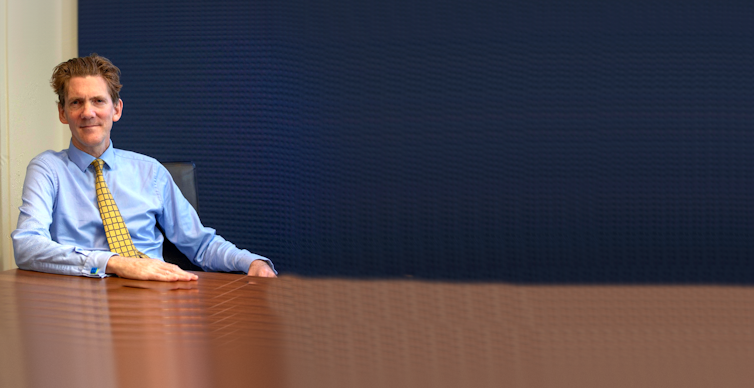
In a significant step towards reforming Australia’s Reserve Bank, Treasurer Jim Chalmers has stepped outside the bank and outside of Australia to select Andrew Hauser, a British economist, as its new deputy governor.
The deputy governor’s job has traditionally been a springboard to the governor’s job, and Hauser will replace Michele Bullock who was herself deputy governor until her appointment as governor on Philip Lowe’s retirement in September.
Hauser is the first deputy governor to be appointed from outside the bank, and also the first non-Australian to be appointed to a high-ranking position in the bank.
The selection of a complete outsider is a sign that Treasurer Jim Chalmers has taken on board the concerns of the independent review of the Reserve Bank which in April expressed concern about what it called groupthink at the bank, which it defined as
a phenomenon in which a group of individuals tries to minimise conflict and reach a consensus decision without critical evaluation of alternative viewpoints, by actively suppressing dissenting viewpoints and isolating themselves from outside influences
The review found a “lack of openness to external ideas” at the bank and a tendency to avoid difficult discussions to resolve issues.
It wanted the bank “open to diverse voices” and suggested advertising vacancies for management roles externally as a default, with external members on all selection panels for deputy-head of department roles and above.
The RBA And The Bank Of England Face Similar Challenges
Hauser has worked at the Bank of England for over 30 years, giving him a deep understanding of the operation of monetary policy in an open economy similar to Australia’s, in which interest rates and the the exchange rates are important economic levers.
If the experience of his former governor at the Bank of England, Mark Carney, is any guide, he’ll make the transition without too much difficulty.
Carney was appointed Governor of the Bank of England in 2013 from Canada where he had been Governor of the Bank of Canada, and served until 2020.
Hauser’s experience as executive director for markets at the Bank of England and his involvement in managing its response to the global financial crisis and the early stages of COVID will make him especially useful to Australia’s Reserve Bank.
The Reserve Bank has been without top-level experience in managing markets during crises since the departure of Guy Debelle in March 2022.
Debelle had long been the bank’s point person on markets. As head of its financial markets group during the crisis he coordinated and directed the bank’s attempt to keep financial markets open on a daily basis, a role he fulfilled again as deputy governor during the COVID crisis.
Hauser Will Help The Bank Decide How Quickly To Shrink
A major challenge for the bank under Hauser’s deputy governorship will be managing the size of its balance sheet.
During the COVID crisis, the bank bought government bonds with money it created in order to support the economy and keep interest rates low.
This led to a quadrupling of its balance sheet, from A$161.4 billion in financial assets before COVID to a peak of $637 billion in March this year.
Now that the crisis has passed, the bank is slowly contracting its balance sheet by gradually letting the bonds they bought expire.
At issue is whether the bank should contract its balance sheet faster (and contract the economy) by actively selling bonds, and also when it should stop selling bonds and letting them expire.
While these are new questions for the Reserve Bank, the Bank of England has been grappling with them for years, having bought bonds with created money during the global financial crisis.
As executive director of markets at the Bank of England, Andrew Hauser is well versed in the problem. He outlined the issues earlier this month in what might be his final speech for the Bank of England, entitled “Less is more or less is a bore? Re-calibrating the role of central bank reserves”.
His appointment marks a pivotal moment in the Reserve Bank’s history, underlining the government’s commitment to revitalising the bank and refashioning it for the 21st century.
He is expected to take up his new role in early 2024.![]()
Isaac Gross, Lecturer in Economics, Monash University
This article is republished from The Conversation under a Creative Commons license. Read the original article.
Think potholes on our roads are getting worse? You’re right – and here’s why
Marion Terrill, Grattan Institute and Natasha Bradshaw, Grattan InstituteIf you’re a driver, particularly in the country, you could be forgiven for thinking potholes have become a design feature of Australia’s local roads.
You would certainly know they are in a state of disrepair. And you have every reason to be fed up, because bad roads are dangerous, they increase your travel time, and they force you to spend more on fuel and on car maintenance.
They are getting worse because we’re not spending enough to maintain them.
Three-quarters of our roads are managed by local councils.
Every year, those councils spend A$1 billion less on maintenance than is needed to keep those roads in their current condition – let alone improve them.
The underspend is largest in regional and remote areas.
New Grattan Institute research finds the typical regional area has a funding shortfall of more 40%. In remote areas, it’s more than 75%.
Federal Funding Is Falling Behind
One reason for this underspend is that untied federal government grants to local councils haven’t kept pace with soaring costs.
Councils raise most of their own revenue – 80% on average. But in large parts of the country, there are a lot of roads and not enough ratepayers to pay for them.
Rural and remote councils have limited ability to raise more revenue from ratepayers. Their ratepayers already pay higher rates than those in cities, despite having lower average incomes.
Rate caps in place in New South Wales and Victoria also make it difficult for councils to raise more revenue.
Councils receive top-up grants from the federal and state governments. The primary grants from the federal government, available for councils to spend as they see fit – including on roads – are called Financial Assistance Grants.
These are worth about $3 billion a year.
But their value has not kept pace with rising costs. If they had kept pace, on our estimates they would be 20% higher, at $3.6 billion per year.
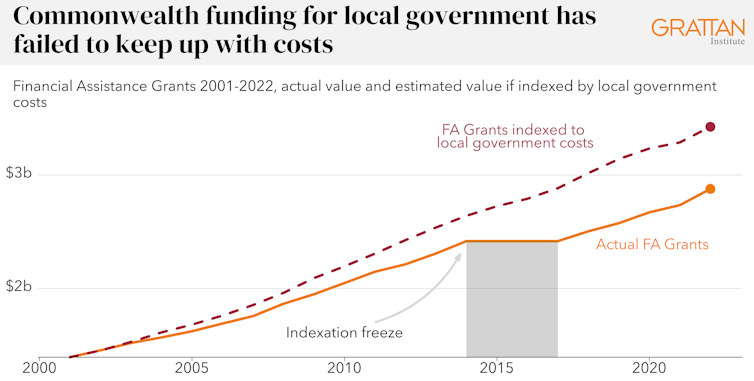
Road Use Is Growing, But Maintenance Isn’t
Another reason for the underspend is that even as funding dries up, we’re using roads more.
A growing population means both more cars on our roads and more trucks needed to keep our shelves stocked.
But despite the extra damage to our roads, spending on maintenance has stalled.
Councils Are Spending More On Other Things
Another reason roads are underfunded is that councils are coming under increasing pressure to fund other services.
The legislation governing councils doesn’t clearly define what councils are responsible for, and there is no shortage of services communities want.
Spending on transport has fallen from almost half of local government spending in the 1960s to 21% today.
Environmental protection was only identified as its own area of spending for councils in 2018, but it now makes up 15% of all council spending.
Delaying Will Cost Us More
If we don’t act now and start spending more to fix our roads, the pothole plague is going to spread. Australia is getting hotter, with more rain and floods.
The Local Government Association expects the cost of repairing flood and rain-damaged roads in the eastern states and South Australia to top $3.8 billion.
Tight budgets make it tempting to delay maintenance.
But delaying will only end up costing more in the long run, leaving taxpayers paying more to fix more badly damaged roads.
Finally, A Circuit-Breaker
Some might argue that now is not the time for more spending on roads, given pressures on the budget. But plenty is being spent on big roads and new roads.
Infrastructure Minister Catherine King’s recent announcement of a funding boost of for local roads is a very welcome circuit-breaker.
She announced the Roads to Recovery program will increase gradually from $500 million to $1 billion per year, the Black Spot program from $110 million to $150 million per year, and funding for an amalgamated Bridges Renewal and Heavy Vehicle Safety and Productivity program will climb form $150 million to $200 per year.
This decision is important. Not only will councils receive more funding for maintenance, but it will be predictable funding, enabling better stewardship of long-lived assets. The money can’t start flowing soon enough.![]()
Marion Terrill, Transport and Cities Program Director, Grattan Institute and Natasha Bradshaw, Associate, Grattan Institute
This article is republished from The Conversation under a Creative Commons license. Read the original article.
A tussle between the federal and state governments over disability supports is looming. What should happen next?
Sue Olney, The University of MelbourneOver the ten years since the National Disability Insurance Scheme (NDIS) was launched, its design, operations and costs have been scrutinised by governments, the media, the legal system, researchers and people with disability and their advocates.
More than 610,000 Australians receive NDIS funding to purchase support and services to meet their disability-related needs. But the overwhelming majority of the 4.4 million people with disability in Australia are not NDIS participants. Whether and how their needs are met outside the NDIS has huge implications for the scheme’s future.
That issue sits at the heart of the NDIS review. The review’s findings and recommendations have not yet been publicly released, but NDIS Minister Bill Shorten and the review’s co-chairs have already called for state and federal services outside the scheme to step up supports.
What fell away when the NDIS was rolled out? And what are the chances of such services being revived?
How The NDIS Ate Other Supports
Under the NDIS, many people have been able to get the support they need for the first time.
However, the movement of money from Commonwealth, state and territory governments to the NDIS meant people with disability who do not meet the scheme’s eligibility criteria lost access to some supports. The introduction of the NDIS also impacted the costs and availability of services.
What was glossed over in the transition to the NDIS was community, social and economic inclusion of all Australians with disability. As money flowed from other parts of government to the NDIS, there were no clear answers on how this cornerstone of the scheme should be delivered and funded.
An Oasis Surrounded By Desert
Demand for support from the NDIS has outstripped all forecasts, putting pressure on the federal budget. But government has shown little will to tackle what is driving its growth.
Slow progress on improving accessibility in “mainstream” services and the erosion of access to supports like home and community care and community mental health services have left the NDIS an “oasis of support, surrounded by a desert where little or nothing is available”.
Research in 2022 revealed people with disability and their families were navigating disconnected and incomplete service markets, with inconsistent eligibility criteria. There were gaps in data informing policy. People without NDIS funding were relying heavily on family support and personal resources. In surveys for this research, 90% of people with disability outside the NDIS said they were unable to find the support they needed.
States have already said they need more funding to support people with disability outside the NDIS. That has to be a whole-of-government conversation.
When people with disability and their families cannot find or afford the support they need, and exhaust their own resources to the point of crisis, they ultimately need higher levels of support from the NDIS and government across the board.
We need a graduated support system for people with disability between being in or out of the NDIS.
A Shakeup Is Likely
The NDIS review’s final report is likely to be publicly released in December, after National Cabinet has met to consider its recommendations.
The review has already signalled it will call for coordinated effort and investment across government. Review co-chair Bruce Bonyhady recently said there would be more focus on support needs rather than functional impairment in decisions about what is reasonable and necessary for the NDIS to fund.
The review is likely to propose a new disability inter-governmental agreement to encourage governments to develop and implement a foundational supports investment strategy for all people with disability together.
It is also likely to call for national commitments to deliver more effective supports for children who are slow to reach one or more developmental milestones compared to their peers – described as “developmental delay” - and for people with disability linked to mental health.
Translating those recommendations into action across federal, state, territory and local governments won’t be easy.
What Should Change? What Should Come Back?
The NDIS review may finally force clarification of roles and responsibilities for funding and delivering services and supports between the NDIS and key policy areas like health, education, employment, early childhood, justice, transport, housing and aged care that cross government jurisdictions.
It may also clarify the relationship between the NDIS and Australia’s Disability Strategy 2021-2031, which is intended to provide national leadership to drive mainstream services and systems to improve outcomes for people with disability.
There have been numerous references throughout the review to a need for more access to home and community supports, to reduce the likelihood of people needing higher-cost individual supports.
We may also see a return to block-funding for some widely used supports to achieve economies of scale lost in individual purchasing models.
From Diagnosis To Inclusion
Service systems such as disability employment services and specialist schools, which parallel universal services, highlight tensions between how governments talk about inclusion and how services and supports for people with disability are designed and funded on the basis of diagnosis.
We have to explore new ways to design and fund services, drawing on the knowledge and expertise of people with disability, and address evidence gaps to better inform policy.
Looming negotiations between federal and state governments about who should pay for what in that landscape are likely to be tense and protracted. But people with disability must not be reduced to “costs” in that tussle.
The biggest lesson from the NDIS review may well be that governments cannot continue to treat 20% of Australians as outliers in designing universal services.![]()
Sue Olney, UoM-BSL Principal Research Fellow, School of Social and Political Sciences, The University of Melbourne
This article is republished from The Conversation under a Creative Commons license. Read the original article.
‘Father of Reconciliation’ Pat Dodson to quit parliament
Michelle Grattan, University of CanberraLabor senator Pat Dodson, often dubbed “the father of reconciliation”, is quitting parliament due to ill health.
Dodson, 75, told the Labor caucus on Tuesday he would resign as a senator for Western Australia, effective from January 26, Australia Day.
“Regrettably, my recent treatment for cancer means that my health, although slowly improving, has left me physically unable to fulfil satisfactorily my duties as a senator,” Dodson said in a statement.
Anthony Albanese paid tribute to Dodson at the meeting. The Indigenous caucus members stood with Dodson at the lectern, and there was a long standing ovation for him.
Albanese said in a statement: “You would gladly follow him into battle yet he’s made it his life’s work to make peace.”.
“There are few more reassuring sights in parliament than seeing Patrick and his hat coming down a corridor towards you.”
Priest, activist, academic, politician, Dodson was born in Broome. The family subsequently moved to Katherine in the Northern Territory because of Western Australia’s laws against mixed race families.
In 1960 he and his siblings (including brother Mick, who also became a leading Indigenous figure) were orphaned when their parents died, months apart.
His early experiences had a lifelong impact on Dodson. He said in his first parliamentary speech: “I was hiding in the long grass in the Northern Territory town of Katherine and watched my age-mates being taken by welfare and police.
"In Katherine I also watched in fear as white people were bussed in to the town hall meeting, where they vented their hatred and anger against Aboriginal stockworkers for walking off Wave Hill Station and for demanding justice and equal wages. The Australian law at that time was unarguably founded on a social outlook that was highly ethnocentric, even racist.”
At school at Monivae College in Hamilton Victoria, Dodson became head prefect. He studied for the priesthood, and was ordained as the first Aboriginal Catholic priest in 1975. Later he quit the priesthood, unable to reconcile Catholicism with Aboriginal spiritual beliefs.
Dodson was director of the Central and Kimberley Land Councils, and negotiated the return of Uluru (Ayers Rock) to the traditional owners.
He served on the Royal Commission into Aboriginal Deaths in Custody, was the founding chair of the Council for Aboriginal Reconciliation (1991-97), and co-chair of the Expert Panel for Constitutional Recognition of Indigenous Australians (2010-16).
He filled a casual Senate vacancy in 2016. In Tuesday’s statement he thanked former leader Bill Shorten for nominating him for the vacancy.
In the Albanese government he has been Special Envoy for Reconciliation and Implementation of the Uluru Statement from the Heart.
His serious illness prevented him from all but minimal campaigning in the Voice referendum.
When parliament was debating the bill for the referendum, Dodson was too unwell to attend in person – Senate leader Penny Wong read a message from him.
His message said: “This move to recognise the First Peoples of Australia in the Constitution is part of an action of restorative justice. Doing this will give a sense of honour for all Australians, as we collectively stand with courage to face these past legacies and ensure that they are not bequeathed to future generations. This is one commitment our generation can make.”
Dodson in his statement placed on the record his “high regard” for Albanese’s decision to proceed with the referendum.
UPDATE: Dodson Says Referendum Defeat Leaves ‘An Australian Problem’
Dodson told a news conference the referendum’s defeat left “a problem for Australia”.
“That 60-40 spread of that vote makes it an Australian problem. It’s not an Aboriginal problem,” he said.
“We need to seriously think now of the way in which our civil society knits together with this diversity and differences.”
Asked how the country should chart a way forward, Dodson pointed to three things in Indigenous affairs.
One was closing the gap in relation to the social inequities First Peoples suffered as citizens. The second was to go back and look at the human rights declaration on Indigenous people’s rights.
“The third matter that we should seriously start to look at […] is how to enable First Peoples to create the economic independence that they can do by leveraging up their asset bases, and that’s not only those physical asset bases they hold, but also those ones that have been alienated from them.”![]()
Michelle Grattan, Professorial Fellow, University of Canberra
This article is republished from The Conversation under a Creative Commons license. Read the original article.
Pioneering Research Method Reveals Bluefin Tuna's Fate
Study Reveals Hidden Immune Defence Against Cancer
Defending Your Voice Against Deepfakes
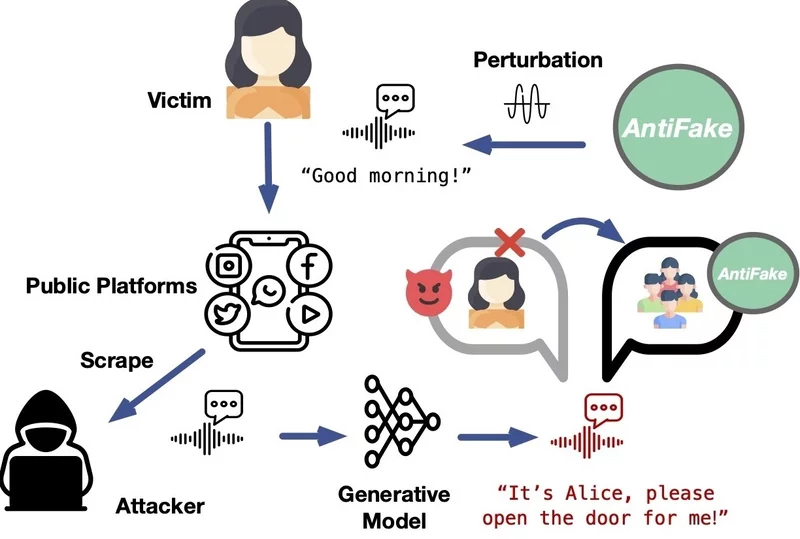
Macaque Trials Offer Hope In Pneumonia Vaccine Development
Stem cell therapy shows promise for treating multiple sclerosis – new study

Over 2 million people globally have multiple sclerosis (MS), a disease that affects the nervous system and can lead to problems moving, seeing and thinking.
While there are treatments that can help reduce the number and severity of MS attacks, many people with MS eventually develop a more severe form of the disease called secondary progressive MS. Unfortunately, there are few treatments for secondary progressive MS. And there are no drugs approved for the most advanced forms of disease.
Recent data has raised expectations that using stem cells, the body’s “master cells”, might help diminish this damage. This involves transplanting brain stem cells, which can develop into almost any other type of brain cell and possibly repair those damaged by MS.
In our new study, we show the promising results of a first-in-human, early-stage clinical trial that involved injecting brain stem cells directly into the brains of 15 patients with secondary progressive MS.
Brain stem cells were obtained from a single miscarried foetus. The stem cells were extensively screened for anomalies to ensure a safe and practically boundless cell reservoir for transplantation.
Before the procedure, participants underwent a comprehensive assessment of their disability level and disease activity over three months. At transplantation, most of the treated patients showed high levels of disability (most required a wheelchair, for example).
We tested four doses of brain stem cells coupled with drugs to suppress the immune system – to avoid the graft being rejected. Encouragingly, participants experienced no severe adverse events in the 12 months after the treatment, although there were some short-lived side-effects (such as flu-like symptoms and respiratory infections).
Crucially, neither relapse-like symptoms of MS, nor significant deterioration in movement or cognitive function (which would be expected without treatment) were reported in patients during the study.
In an analysis of a small group of the participants using advanced magnetic imaging, we noted an association between higher stem cell doses and a reduction in brain volume. Similar effects have been seen with potent drugs used for patients with early MS, suggesting a possible role of the cells in preventing brain inflammation and swelling.
Measuring The Brain’s Response To The Transplant
How do we know if brain stem cells work?
In MS, the immune system targets and damages myelin, the protective coating around nerve fibres, disrupting vital communication within the brain and spinal cord. Central to this process are macrophages, immune cells that typically eliminate unwanted intruders. Among them, microglial cells, found throughout the brain and spinal cord, play a pivotal role.
Our earlier research in mice showed that skin cells reprogrammed into brain stem cells, when transplanted into the central nervous system can reduce inflammation and potentially repair MS-induced damage.
Also, brain stem cells can tweak the metabolism – how the body produces energy – and reprogram microglia from bad to good.
In this study, we investigated how the brain’s energy production processes were affected by the brain stem cell treatment. We monitored changes in the fluid surrounding the brain and in the blood over time and discovered persistent alterations induced by the transplant.
Specifically, a class of molecules called acylcarnitines, which are crucial for maintaining a good cellular energy metabolism, showed increased levels in patients receiving higher stem cell doses.
While these findings are exciting, it’s important to be prudent, given that they were obtained from a small group of patients who were also receiving drugs to suppress the immune system. However, this study provides the first compelling evidence in humans that a single brain stem cell transplant directly into the brain is safe and can induce long-lasting effects in people with secondary progressive MS.
Further studies are needed to validate and expand on our findings. Still, this study shows promising indications that this approach could become a valuable treatment option for addressing the advanced stages of MS.![]()
Luca Peruzzotti-Jametti, Senior Research Associate and Honorary Neurology Consultant, University of Cambridge and Stefano Pluchino, Professor of Regenerative Neuroimmunology, University of Cambridge
This article is republished from The Conversation under a Creative Commons license. Read the original article.
Mike Pezzullo sacked after scathing findings accusing him of misusing his position
Michelle Grattan, University of CanberraThe government has sacked the secretary of the Home Affairs department, Mike Pezzullo, after an inquiry found he had breached the Public Service Code of Conduct.
The inquiry found he used his position for personal advantage, gossiped disrespectfully about ministers, broke confidentiality, failed to act apolitically, and didn’t disclose a conflict of interest.
In September, Nine Entertainment revealed a trove of texts Pezzullo sent to a Liberal insider, Scott Briggs, who was close to prime ministers Scott Morrison and Malcolm Turnbull. In the texts Pezzullo inserted himself into the political process, lobbying for his bureaucratic interests and his views.
A long-time public servant who served both sides of politics, Pezzullo also worked in the office of Kim Beazley when he was opposition leader.
A hawk on China policy and hard-line on national security issues, especially border protection, Pezzullo was a divisive figure in the bureaucracy.
While he was known for always being willing to express his views forthrightly, current and former senior colleagues were amazed at the overreach his texts represented, including his criticism of a then minister, Marise Payne, and of Julie Bishop when she put up her hand for leadership in 2018.
As soon as the texts were revealed, it was generally recognised in government and public service circles that Pezzullo would not survive.
The government stood him aside, on full salary, while the inquiry was done by Lynelle Briggs, a former public service commissioner.
Prime Minister Anthony Albanese on Monday said Pezzullo’s termination had been recommended by the Secretary of the Department of the Prime Minister and Cabinet, Glyn Davis, and the Public Service Commissioner, Gordon de Brouwer. This followed a recommendation from Briggs that he be sacked.
Pezzullo had fully co-operated with the Briggs’ inquiry, Albanese said. He said the present acting head of Home Affairs, Stephanie Foster, would continue to act in the position until a permanent appointment was made.
In a statement the Public Service Commission said Briggs found Pezzullo breached the public service code least 14 times in relation to five overarching allegations. Pezzullo
used his duty, power, status or authority to seek to gain a benefit or advantage for himself
engaged in gossip and disrespectful critique of ministers and public servants
failed to maintain confidentiality of sensitive government information
failed to act apolitically in his employment
failed to disclose a conflict of interest.
UPDATE TUESDAY: Foster New Head Of Home Affairs
The Prime Minister has announced Stephanie Foster will become the new Secretary of the Department of Home Affairs. He said her public serrvice career included being acting Secretary and Associate Secretary of Home Affairs, and Deputy Secretary of the Department of the Prime Minister and Cabinet.![]()
Michelle Grattan, Professorial Fellow, University of Canberra
This article is republished from The Conversation under a Creative Commons license. Read the original article.
Disclaimer: These articles are not intended to provide medical advice, diagnosis or treatment. Views expressed here do not necessarily reflect those of Pittwater Online News or its staff.